- Control And Co-Ordination In Living Organism Notes
- Continuity Of Life Notes
- Environment, Its Resources And Their Conservation Notes
- Evolution And Adaptation Notes
- Heredity And Common Genetic Diseases Notes

Heredity and Variation :
The resemblance of offspring to their parents is termed heredity. Members of a family share many similarities .in appearance, such as height, eye colour, hair colour. There are
differences in the manner how characteristics are inherited to- offsprings.
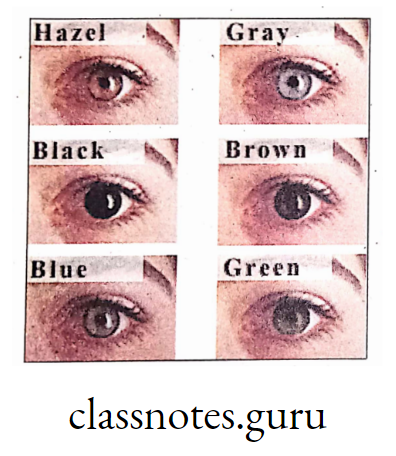
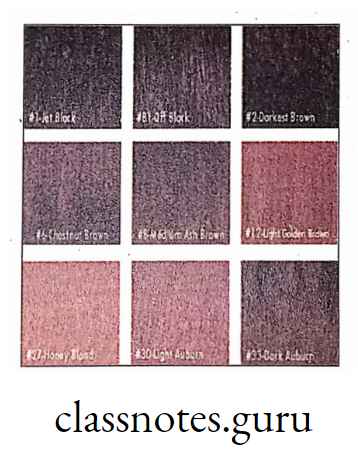
Offsprings do not look exactly like their parents. So, the offspring resemble their parents in major respect but also differ from the parents in. many minor respects.
An Austrian monk, Gregor Johan Mendel performed’ a series of simple experiments and discovered how heredity worked.
Definition: Heredity is the transmission of characteristics or traits through genes from one generation to another by reproduction.
Heredity and Genetic Diseases: Class 10 Science Notes
Read and Learn More Class 10 Science
The term ‘genetics’ was coined by Bateson (1905). It is derived from the Greek word ‘gen’, means “to grow into”, whereas the term ‘gene’ was first proposed by Johannsen (1909).
The science of heredity and the principles governing the inheritance of characters from parent to the progeny (i.e. next generation offsprings) is called genetics.
Mutation—Sometimes there may be some change in chromosome structure or chromosome number or alteration in composition of DNA of a gene. This change in genetic constitution of an organism is called mutation.
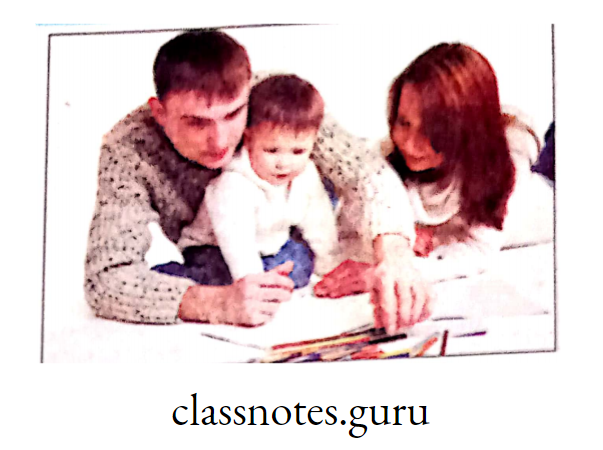
Mutation is the cause of variation among organisms. Mutation gives rise to origin of new characteristics or adaptive changes that may result into evolution in the long run. That s why it is sai,”Mutation is the raw material of evolution”.
Any mutation or variation may have some good effects or bad effects.
Variation—The permanent change in chromosome or DNA may result in expression of characters, called as variation. So. variation signifies any difference between cells or individual organisms or groups of organisms of any species.
This is caused either by genetic difference (genotypic variation) or by the effect of environmental factors on the external manifestation of the organisms (phenotypic variation).
Variation shows deviation in characters in an individual from the group to which it belongs or deviation in characters of offspring from those of its parents. Genotypic variation may result Into phenotypic variation.
So, mutation is the cause variation whereas variation is the effect of mutation.
Examples of variation in man :
Free and attached ear lobe —In man, if ear lobes hang free, it is called free or detached ear lobe. On the contrary, if the ear lobes are connected directly to the sides of head, they are attached.

This variation in different persons Is controlled by genes. Free ear lobe is dominant trait and that of attached ear lobe is recessive trait.
Roller and normal tongue—Some people can curl up (fold) the sides of their tongue to form a tube shape called tongue rolling, while others can not. It has been proposed tongue rolling Is due to genetic variation (but sometimes it might be a learning process also (environmental factor)].

Roller tongue Is dominant variation whereas normal unfolded tongue is recessive variation.
Key terms associated with heredity:
Characteristics: Definition—All special features of an organism that are transmitted through genes from one generation to next are called characteristics, e.g. Eye colour, height
of a person, gender (sex), blood groups, skin colour etc.
Traits: Definition—The phenotypic expression of a particular characteristic is called trait e.g. Eye colour is the characteristic whereas a trait would be blue eyes or brown eyes etc.
Allele or Allelomorph: Definition—The contrasting pair of genes located in the same locus of the homologous chromosome and control same characteristic are called allele
or allelomorph, e.g.
In a hybrid tall plant, T (Tall plant) and t (dwarf plant) genes are alleles. Similarly gene for brown eye colour (B) and blue eye colour (b) are also alleles.
Locus: Definition—The point or place on a chromosome where a particular gene is present is known, as locus of that gene. e.g. a chromosome may contain many loci linearly
present on a chromosome.
Each gene is present at a definite locus on the chromosome.
Unit of inheritance (Factor/Gene): Definition—Gene is a part of DMA, located on a particular point (locus) of a chromosome, functions as hereditary unit (responsible for inheritance of characteristics from parents to offsprings), also controls biological functions.
G. j. Mendel, father of genetics, called these genes as ‘’factors’ which control all the characteristics of an organism, e.g. Gene for tallness and gene for dwarfness in pea plant; gene for black hair colour and white hair colour in guineapig etc.
Monohybrid cross: Definition—The genetic experiment of cross breeding where only one pair of contrasting character (i.e. two alternate traits of a particular character) is considered
is known as monohybrid cross, e.g.
In Mendel’s experiment, the cross between pure tall and pure dwarf pea plant; in guineapig, the cross between pure black hair and pure white hair etc.
Dihybrid cross: Definition—The genetic experiment of cross breeding where two pairs of contrasting characters (i.e. two alternate forms of two different characters) considered is known as dihybrid cross, e.g.
In Mendel’s dihybrid cross with pea plant, he considered shape of seed (Round or Wrinkled) as well as colour of seed (Yellow or Green); in Guineapig, hair colour (Black or White) as well as texture of hair (Rough and Smooth).
Homozygous organisms: Definition—Whan the pair of genes present in the corresponding locus of the homologous chromosome are exactly same, the organism is called as
homozygous organism, e.g. homozygous tall pea plant (IT), homozygous dwarf pea plant (tt) etc.
Heterozygous organism: Definition-When the pair of genes (alleles) present in the corresponding locus of the homologous chromosome are of contrasting type, the organism
is called as heterozygous organism e.g. heterozygous tali pea plant (Tt); heterozygous black guineapig (Bb) etc.
Hybridization: Definition—it is the process of interbreeding between two genetically different (divergent) individuals. They may be of same species (intraspecific hybridization) or
different species (interspecific hybridization), e.g.
In Mendel’s monohybrid cross, there cross breeding or cross pollination between pure tali plant and pure dwarf plant.”
Pure and hybrid: Definition—Homozygous organisms are known as pure organisms and hetero-zygous organisms are called hybrid organisms, e.g, homozygous tall pea plant isTT, which Is also known as pure tall, whereas heterozygous pea plant is Tt, which is known as hybrid tall.
Parental generation: Deflnition-The first -set of parents used in the cross of a genetic experiment is called parental generation. So the generation from where a genetic experiment starts is known as parental generation and is represented by P. e.g.
In Mendel s monohybrid cross, parental generation (P) Consists of the pure tall and pure dwarf plants that were cross-pollinated.
Filial generation (F1, F2): Definition—In a genetic experiment, all the offsprings produced from the parental generation (P) are together known as filial generation. It is
represented by F.
The first generation offspring of the parental generation is known- as First filial generation (F1) and the offspring of F1 is known as second filial generation (F2) and so on. e.g.
In Mendel’s monohybrid cross in F1 generation, all plants were hybrid tall. In F2 generation, there were 3/4 tall plants and 1/4 dwarf plants.
Dominant characteristics: Definition—Out of two contrasting alleles in a hybrid organism, one is expressed and other is suppressed—the expressed phenotype is known as
dominant characteristic, the expressed gene is called dominant gene and the phenomenon is known as dominance, e.g.
In Mendel’s experiment, gene (factor) for tallness of plant (T) is dominant over the gene for dwarfness of plant (t); in Guineapig, black hair colour (B) is dominant over white hair colour (b).
Recessive characteristics: Definition—In a hybrid organism, out of two contrasting alleles, one is expressed and other is suppressed—the suppressed phenotype is known as recessive
characteristic, the suppressed gene is -called as recessive gene and the phenomenon is known as recessiveness. e.g.
In Mendel’s monohybrid cross, gene (factor) for dwarfness (t) is recessive to gene for tallness (T); in Guineapig, white hair coiour (b) is recessive to black hair colour (B).
Heredity and Genetic Inheritance NCERT Class 10 Notes
Phenotype and Genotype: Definition—The externally visible (or measurable) characteristics of an organism are called as phenotype, e.g. Tall plant, dwarf plant, red flower, .white flower, black eye, blue eye etc.
Definition—The genetic constitution of an organism is called genotype. It is represented by some symbols to explain the composition of genes of a particular character, e.g. gene for
tallness is represented by (T), that of dwarfness by (t); the genotype of a pure tall plant is TT, that of hybrid tall plant is (Tt) etc.
In Mendel’s monohybrid cross, phenotype and genotype can be explained as follows :
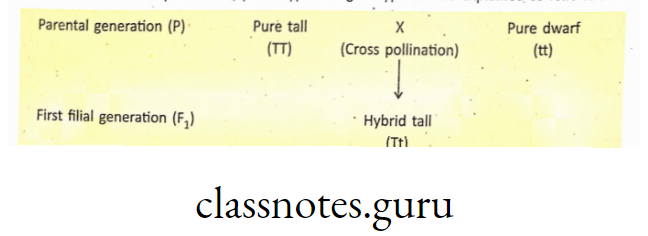
In the above example, phenotype of the P generation plants were pure tall and pure dwarf and their corresponding genotype were (TT) and (tt) respectively. In the first filial generation
(F1) all the offspring plants were hybrid tall.
Here ‘hybrid tall’ is the phenotype and the genotype is (Tt). Usually dominant gene is represented by capital letter and recessive gene by small letter to explain genotype.
Differences between Homozygous (pure) and Heterozygous (hybrid) :

Differences between Dominant and Recessive characters :
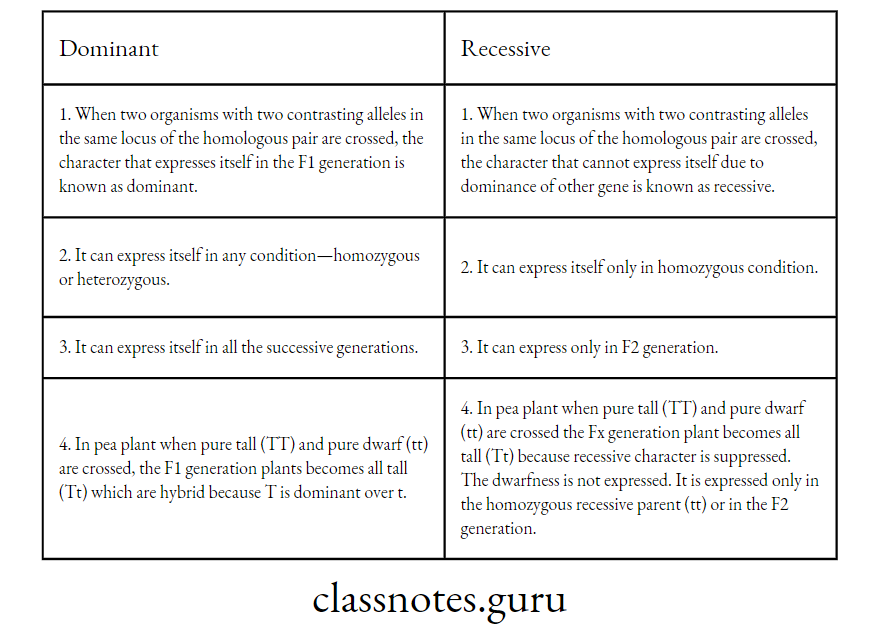
Differences between Phenotype and Genotype :
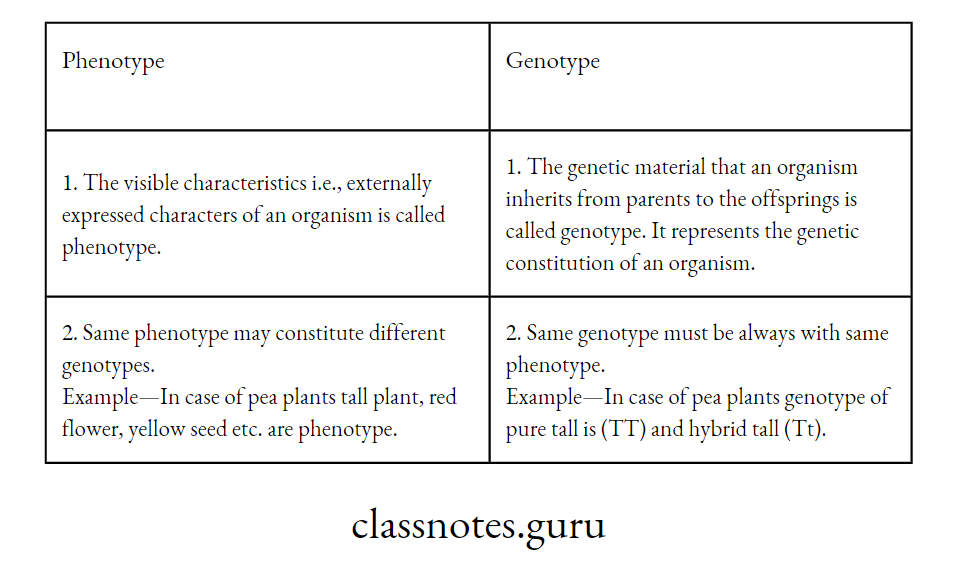
Mendel’s work on Pea plant :
Gregor Johann Mendel (1822—1884) is known as “Father of genetics” because he was the first person to demonstrate the mechanism of inheritance of characters from parents to offsprings.
Mendel studied Botany and Physics in the University of Vienna. He was a priest in St. Thomas Church in Austria.
In 1856, Mendel observed the varieties of characteristics of pea plants in his monastery. He performed varieties of experiments (1856-1866) of self pollination and cross pollination with the pea plants.
Mendel’s research work was not recognised by the contemporary scientists for various reasons. Mendel died in 1884 without any recognition.
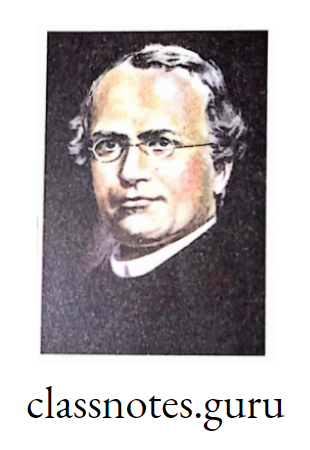
Self and Cross-pollination with pea plants: Mendel selected Garden pea (edible pea) plant (Pisum sativum; 2n = 14) for his experiments. Mendel performed his experiment at a time when there was no concept of chromosome, DNA, gene, meiosis and so on.
For Self-pollination, Mendel covered the bisexual flowers of pea plant by paper bags so that no foreign pollen grain could contaminate the flowers during experiment.
For cross-pollination, Mendel followed three steps :
Finally all fir fertilization, the ovary of the flower was modified into fruit (pea pod) and ovules wore modified Into seeds. When the seeds were matured, they were collected and put Into the soil, then the seeds germinated into new saplings (F1 generation).
Genetic Diseases in Humans: Heredity and Inheritance
Reasons behind mendel’s success:
Mendel performed his experiments when biologists were unaware of the chromosome, DNA, genes etc and also the process of cell division (mitosis or meiosis). Even the process of
union between gametes during sexual reproduction was not very clear.
Simply on the basis of his breeding (hybridization) experiments, Mendel came to several conclusions (known as Mendel’s law) which constituted the foundation of modern science of genetics.
The reasons behind Mendel’s success can be explained as. follows :
Mendel repeated his experiments many times to accumulate a good deal of data for statistical analysis.
He analysed the data by applying principles of Mathematics and Statistics confirmed his conclusions or laws.
Mendel conducted his experiment with extreme care and considered one or two pairs of contrasting character for monohybrid and dihybrid cross respectively.
He considered only distinctive contrasting pairs of characters for his hybridization experiment. So, there was no confusion on the results e.g. Tall plant was 6-7′ whereas dwarf plant is 1-1×1/2.
Hence there is no possibility of any overlapping result of tall and dwarf plant.
By repeated Inbreeding (self-pollination) over the generations, Mendel selected only pure breeding varieties of pea plant for his experiment.
Mendel took enough care to avoid contamination of foreign pollen grain by covering the flowers with paper bags.
Mendel did not select those characters that were present on same chromosome—thus he avoided the complexity of linkage, crossing over etc.
Mendel’s chosen contrasting characteristics in pea plant:
Mendel’s experiment and Mendel’s laws: (How did Mendel derive the laws of heredity from his experiments ?)
Mendel performed monohybrid and dihybrid crosses with seven pairs of contrasting characters and from these experiments, he derived laws of inheritance.
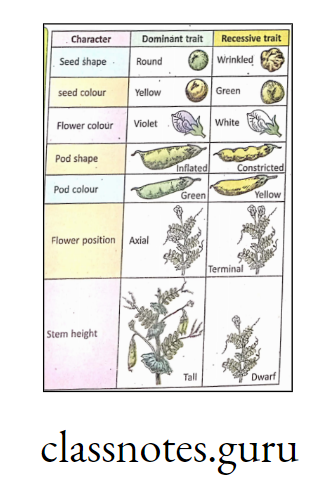
Monohybrid Cross :
Definition: The genetic experiment of cross breeding between two varieties of same species bearing one pair of contrasting traits is known as monohybrid cross.
Experiment and Analysis of results of Monohybrid cross in Pea Plant: Mendel performed several monohybrid experiments taking each of the seven pairs of contrasting
characters separately and obtained similar result.
However, his monohybrid cross on length of pea plant (Tall and Dwarf variety) is very famous.
Experiment :
Mendel first selected pure tall pea plant (6′-7′) and pure dwarf pea plant (1′-1×1/2′) by repeated inbreeding (self pollination) generation after generation. Thus he selected parental generation (P) of pure tall arid pure dwarf plants.
In P generation,Mendel cross pollinated pure tall plants with pure dwarf plants by the process of emasculation, dusting and bagging. In first filial generation (F1) all the plants appeared tall and there was no dwarf plant at all.
All the plants were self pollinated by bagging. In second filial generation (F2); it was observed that out of total number of 1064 pea plants, 787 were tall plants and 277 were dwarf plants.
So, almost 75% (3/4th) of the plants were tall and 25% (1/4th) were dwarf. Therefore, it comes approximately to a ratio of 3 (Tall): 1 (dwarf) which is called as phenotypic ratio.
Phenotypic ratio of F2 generation in a monohybrid cross is also known as monohybrid ratio.

Analysis of results of Mendel’s monohybrid
According to Mendel, tall and dwarf characters in pea plants are transmitted from one generation to the next by the hereditary units known as factors. (Now-a-days, Mendelian
‘factors’ are known as genes).
He postulated that at least two ‘factors’ are responsible for a particular character. (Presently we know that in higher organisms, chromosomes are present in homologous pair— one paternal and one maternal. So, genes are also present in pair.
Hence, at least two genes (one paternal gene and one maternal gene) are responsible for a particular character).
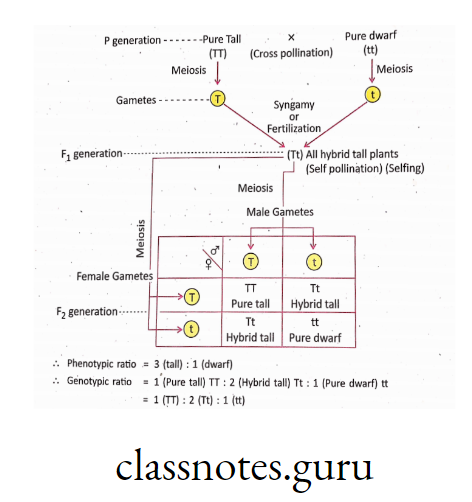
He considered T for tall trait and ‘t’ for dwarf trait. So, in tall plants, the factors will be (TT) and that of dwarf plant (tt).
Mendel also assumed that the ‘factors’ are segregated (separated) during gamete formation (since he had no idea about meiosis). (Now, it. is very dear that the gametes are formed by meiosis which is reduction division where the chromosome number is reduced
to half—so number of genes will be aiso reduced to half]. Thus out of two ‘factors’ (genes),only one factor (gene) would be present in each gamete. He also calculated that during
cross pollination, along with transfer of gametes, there were transfer of ‘factors’ between tall and dwarf plants. So gametes are the bearer of factors.
Hence, from tall plant (TT), the gamete would bear T factor (gene) and that of dwarf plant (tt), the gamete would bear ‘t’ factor.
After cross pollination, T and t unite together to form zygote (Tt). So, the genotype of all F1 plants was (Tt) i.e. hybrid tall plant. In spite of presence of t, only T was expressed, so tall trait (T) is dominant over dwarf (t) and dwarf (t) is recessive to tall (T).
During gametogenesis, the F1 hybrid tall plants produce two types of gametes—(T) and (t) by segregation (meiotic separation). So, two types of male gametes from pollen grains and two types of eggs in ovule were formed.
During self pollination of F1 plants, any male gamete could unite with any female gamete at random that would give rise to F2 generation plants which could be shown by checker board (Punnett Square).
Class 10 Science: Heredity and Mendelian Genetics
Mendel’s conclusion from the results of monohybrid cross :
Concept of two factors—At least two ‘factors’ are responsible for a particular character.
Existence of unit character—’Two- gametes (T) and (t) of two varieties of P generation plants formed the zygote (Tt) from where F1. generation hybrid plants developed. In the hybrid
plants, T and Y ‘factors’ were present side by side and the two ‘factors’ remained perfectly independent from each other without loosing their identities.
So, the factors maintain their purity generation after generation.
Dominance-Out of two contrasting factors—tall (T) and dwarf (t), one unit factor (T) has expressed called dominant and other factor (t) remained hidden called recessive.
Principle of segregation-Dwarf factor (t) was present in P, suppressed in F1 reexpressed in F2. The zygotes of F1 hybrid plant contains two unit character which lie side by side without
mixing.
In F2 generation, the plants produced both parental type (Tall and dwarf) as well as hybrid type. The phenomenon when the hybrid type separates into pure parental and
were hybrid types is called segregation,
Experiment and Analysis of results of Monohybrid cross in Animal (Guineapig):
Many geneticists performed monohybrid cross with animals and obtained resuit like that of Mendel.
Experiment:
When pure (homozygous) black haired guineapigs were crossed artificially with pure (homozygous) white haired guineapigs, all the F1 hybrid guineapigs appeared black haired.
The F2 guineapigs (male and female) were intercrossed.
In F2 generation, the ratio of the offsprings were 3 (Black) : 1 (White).

Analysis of the result :
In P generation, pure black haired guineapig was (BB) and that of white haired (bb).
During gametogenesis, pure black guineapig and pure white guineapig produced (B) and (b) gamete respectively.
In F1 generation, the genotype of hybrid black guineapig, was (Bb). In spite of presence of two contrasting genes of ‘B’ and ‘b’, the F1 animals appeared black which signified black (B) is dominant over white (b).

F1 hybrids produced two types of gametes— (B) and (b)
After intercrossing, the ratio of F2 progeny was 3 (Black) : 1 (White).
Hence, it shows that the inheritance of hair colour in animal like guineapig follows similar method of segregation like that of Mendel.
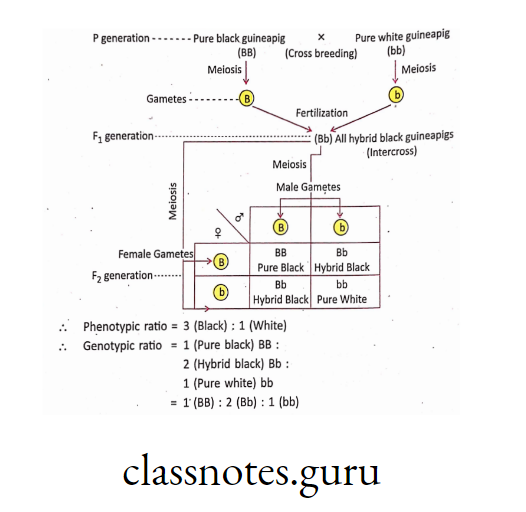
Concept of ‘Dominance’ from Mendel’s experiment :
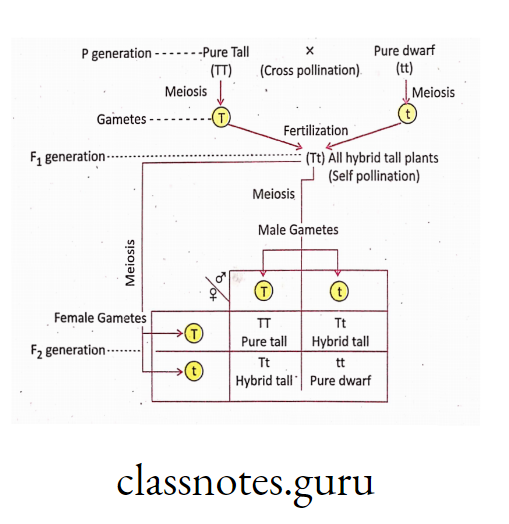
Phenotypic ratio = 3 (Black) : 1 (White)
Genotypic ratio = 1 (Pure tall) TT : 2 (Hybrid tall) Tt : 1 (Pure dwarf) tt
= 1 (TT) : 2 (Tt) : 1 (tt)
Concept of dominance :
In P generation, pure dwarf plant (1 -1×1/2) was present.
In F1 generation, all plants were hybrid tall (Tt) and there was no trace of any draft plant. .
In F2 generation, dwarf reappeared ( 3 tall : 1 dwarf).
The dwarf plants of P generation and F2 generation were exactly same.
In fact the dwarf gene (t) was suppressed in F1 generation by the Tall gene (T). So, T is dominant over ‘t’ gene. Hence T is expressed and ‘t’ is suppressed.
However, in hybrid tall plants (Tt) of F1 generation, t gene was suppressed by ‘V gene but was not destroyed. Moreover, the T and t genes were not mixed up or blended in F1 hybrids but they maintained their individual purity or identity.
That’s why, tt (pure dwarf) plant reappeared in F2 generation. This signifies that dominant gene can suppress the recessive gene but can not destroy the recessive gene.
The genes maintain their purity or potentiality generation after generation (unless it is ‘mutated’). It does not matter whether the gene is expressed or suppressed. A particular genemay be suppressed over the generations but its potentiality remains unchanged.
Dihybrid Cross :
Definition: The genetic experiment of cross breeding between two varieties of same species bearing two pairs of contrasting traits is known as dihybrid cross
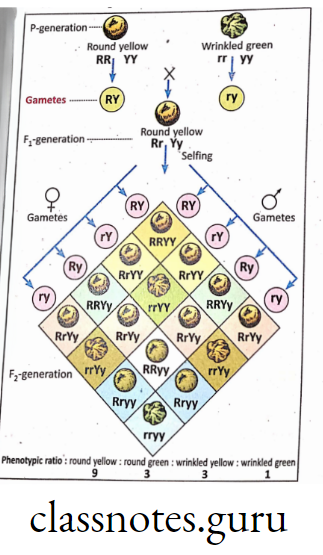
Common Genetic Diseases: Types, Symptoms, and Causes
Experiment and Analysis of results of Dihybrld cross in Pea plant : For dihybrid experiment, Mendel selected two characters-shape of seed and colour of seed (cotyledon).
contrasting traits of shape of seed were round and wrinkled whereas two contrasting traits of colour of seed were yellow and green.
Experiment :
Mendel selected pure round yellow seeded plants and pure wrinkled green seeded Plants by repeated Inbreeding (self pollination) for few generations. Thus he selected parenta
generation (P) of pure round yellow and pure wrinkled green plants.
In P generation, Mendel cross pollinated pure round yellow seeded plants with pure wrinkled green seeded plants by emasculation, dusting and bagging technique.
In F1 generation, all pea plants developed round yellow seeds.
All F1 plants were allowed self pollination.
In F2 generation, it was observed that out of 556 plants produced, 315 were Round yellow, 108 Round green, 101 Wrinkled yellow and 32 were Wrinkled green i.e. 9/16 Round
yellow,3/16 Round green, 3/16 Wrinkled yellow and 1/16 Wrinkled green.
So, the phenotypic ratio was 9:3:3: 1. Phenotypic ratio of F2 progeny in a dihybrid cross is also known as dihybrid ratio.

Analysis Of results of Mendel’s Dihybrid Cross :
In P generation pure round yellow seeded plants were crossed with pure wrinkled green seeded plants. In F1 generation, all offsprings were round yellow which signifies seed is dominant trait over wrinkled seed and yellow colour of cotyledon is dominant green colour of cotyledon.
If we consider, R as round gene (dominant) and r as wrinkled gene (recessive) Y as yellow gene (dominant) and y as green gene (recessive), then in P generation, the genotype
of pure round yellow plant will be RRYY and the genotype of green wrinkled plant, will be rryy.
From pure round yellow (RRYY) plant, the gamete was (RY) and that of pure wrinkled green (rryy) plant, the gamete was (ry).
After fertilization of (RY) and )ry) gametes, the hybrid rouna yellow plants were formed with the genotype RrYy in F1 generation.
The F1 hybrid round yellow plants (RrYy) produced four types of gametes—RY, Ry, rY, ry.
During self pollinadon of F1 plnts,these dour types of male gemetesmunited with form types of female gametes at random. The possible combination of those gemetes to form
zygotes is shown in the checker board or punnett square.

Round yellow = 9, Round green = 3, Wrinkled yellow = 3 and Wrinkled green = 1 Therefore the phenotypic ratio = 9 : 3 : 3 : 1
Mendel’s conclusion from the results of dihybrid
Mendel concluded that the ‘factors’ are separated as well as assorted randomly and independently of each other during gamete formation.
He also concluded that during gametic union (fertilization) any gamete can unite with any other gamete irrespective to its dominance or recessiveness. Since the gametes are
the “bearer of factors” so random union of gametes means random assortment (union) of ‘factors’ or genes.
Thus during gametic union any gene/factor (whether dominant or recessive) can combine independently with any other gene/factor.
Experiment and Analysis of results of Dihybrid cross in Animal (Guineapig).
Experiment :
For dihybrid cross in guineapig, two pairs of contrasting characters were were— hair colour (black or white) and texture of hair (rough or smooth).
In P generation, pure black colour and rough hair variety of guineapig was cross pure white colour and smooth hair variety of guineapig.
In F1 generation, all offsprings appeared with black rough hair.
F1 male and female guineapigs were intercrossed.

In F2 generation, the offspring were in the ratio of 9 (black rough) : 3 (block smooth):3(white rough): 1 (white smooth).

Heredity and Inheritance in Class 10 Science: Key Concepts and Notes
Analysis of results of Dihybrid Cross In Guineapig :
If we consider gene for black hair ‘B’, white hair ‘b’ rough hair ‘R’ and smooth hair r, then in P1 generation, the genotype of pure black rough hair guineapig will be BBRR and that of white smooth hair will be bbrr.
P generation pure Black rough hair guineapig (BBRR) produces’gamete (Bf)) whereas pure white smooth hair guineapig (bbrr) produces gamete (br). These gametes fertilize to give birth to F1 hybrids!
In F1 generation, the hybrid black rough hair guineapig had the genotype BbRr. In spite of presence of white and smooth gene, all offsprings appeared black rough hair which signified black (B) is dominant over white (b) and rough (R) is dominant over smooth (r).
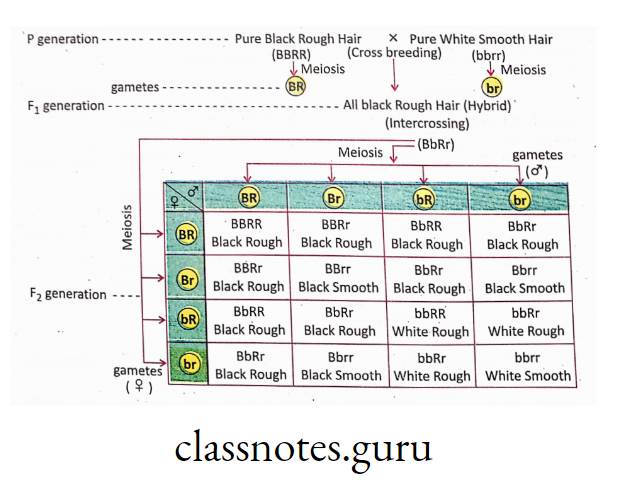
The F1 hybrids (BbRr) produced gametes when Bb and Rr alleles were segregated and assorted independently to produce four types of gametes—BR, Br, bR and br. Thus four types
of male gametes and same four types of female gametes are produced.
These gametes fertilise at random to produce 16 different types of zygotes.
The phenotypic ratio of these zygotes were 9 : 3 : 3 : 1 which can be represented in checker board as follows:
Phenotypic ratio : 9 (Black Rough) : 3 (Black Smooth) : 3 (White Rough) : 1 (White Smooth).
Mendel’s Law :
From monohybrid cross, Mendel formulated his first law known as Law of Segregation.
1st Law of Mendel: Law of Segregation—Factors for contrasting character in a zygote do not blend or contaminate with each other but segregate and pass into different gametes and offsprings randomly.
From dihybrid cross, Mendel formulated his second law known as Law of Independent Assortment.
2nd Law of Mendel: Law of Independent Assortment— Two or more contrasting pairs of factors (characters) are assorted independently and may recombine randomly in all possible combinations governed by chance alone.
Deviation of Mendel’s Laws of Heredity :
In Mendel’s monohybrid cross, tall (T) trait was completely dominant over dwarf (t) trait in pea plant. That’s why, in F1 hybrid tail plants (Tt), T was fully expressed and ‘t’ was totally
suppressed. This is known as complete dominance.
After Mendel, long time passed away. Many scientist made their research work with various plants and animals. Lot of new genetic phenomenon have been discovered. One such
interesting discovery is incomplete dominance.
Definition: In a heterozygous organism, out of contrasting dominant and recessive allele, if the dominant gene cannot express its dominant phenotype completely but an intermediate
or mixed phenotype between dominant and recessive gene is expressed, the phenomenon is known as incomplete dominance or partial dominance or semidominance.
Experiment:
Correns reported incomplete dominance in case of flowers of Four O’ clock plant (Mirabilis jalapa).
In P generation, a pure red flowered plant was cross pollinated with pure white flowered plant.
In F1 generation, all hybrid plants produced pink flowers.
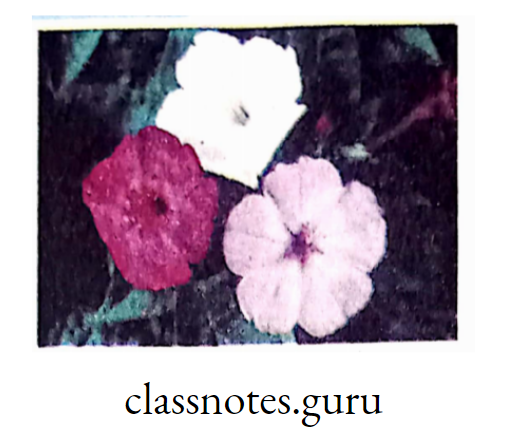
All F1 plants were self pollinated.
In F1 generation, 25% plants produced red flowers, 50% pink flowers and 25% white flowers. Phenotypic ratio = 1 (Red) : 2 (Pink): 1 (White).
Analysis of result :
In P generation, Pure red flowered plant is (RR) and pure white flowered plant was (rr).
During gametogenesis by meiosis, the plant produced (R) and (r) gametes respectively.
After cross pollination of P plants, (R) and (r) unite together to form (Rr) zygote that developed into F1 plants producing pinkflowers.
When the F2 hybrid pink flowered plants were self pollinated, it produced F2 plants in the ratio of 1 (red) : 2 ( pink) : 1 (white).
The genotypic ratio was 1 (RR): 2 (Rr): 1 (rr)

Genetic Disorders: Heredity and Mutation in Class 10 Science
Phenotypic end genotypic ratio are samo In F2 generation,
In F1( hybrids, rod gene (R) did not destroy white gene (r), That’s why, they reappeared In F2 Ronomtion as pure red (RR) and pure white (rr),
In fact, In this example of Mlrabllls Jalapa, red gone Is Incompletely dominant over white gene. So, both red and white genes give rise to an Intermediate pink coloured flowers
in hybrid condition.
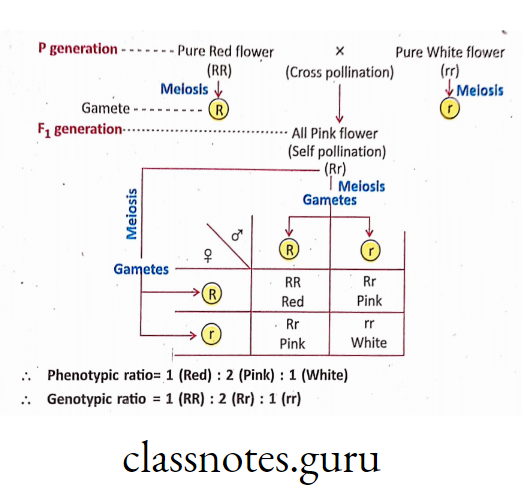
Sex determination in man :
Definition: The mechanism by which the male and female individuals of a species are
differentiated is known as sex determination. In man, mechanism of sex determination is known as XX-XY mechanism.
In human {Homo sapiens), the chromosome number is 2n = 46. There are 22 pairs autosome and 1 pair sex chromosome.
Sex chromosomes determine sex. In human female, the sex chromosomes (allosome) are homologous (XX) but in human male, the sex chromosomes are nonhomologous (XY).
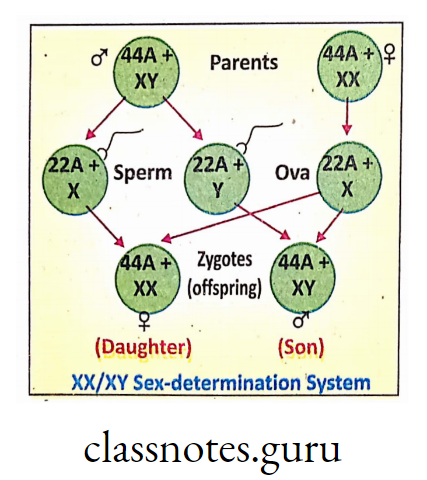
Female (44A + XX) Is homogametic and produces only one type of ovum by meiosis (during oogenesis) (22A + X). (ÿ stands for autosome and ’X for allosome).
Male (44A + XY) is heterogametic and produces two different types of sperm by meiosis (during spermatogenesis) – (22A + X) and (22A + Y). (‘A’ for autosome and X, Y designate
allosome). X containing sperm is known as gynosperm and Y containing sperm is known as androsperm.
During fertilization between sperm and ovum, any type of sperm may fertilize the ovum. Whether gynosperm (22A + X) or androsperm (22A + Y) would fertilize the ovum-is purely
a matter of chance. Nothing can be predicted earlier.
The principle of sex determination in man is that presence of Y in the zygote indicates maleness whereas absence of Y in zygote indicates femaleness.
If gynosperm (22A + X) fertilizes the ovum (22A + X), the zygote would be (44A + XX) which gives birth to a female baby. On the contrary, if androsperm (22A + Y) fertilizes the
ovum (22A + X), the zygote would be (44A + XY) which gives birth to a male baby.
So, whether a male baby (son) or a female baby (daughter) will be born (Sex determination of the baby), depends completely on father and never on the mother (in no way).
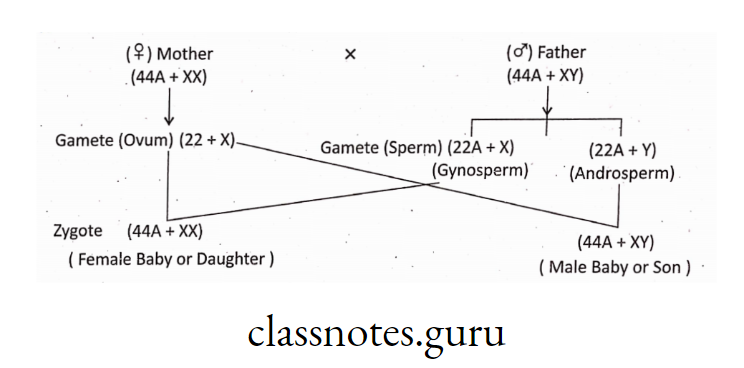

Mendelian Inheritance and Genetic Diseases: Class 10 Science Notes
Common genetic diseases in population:
Many genetic diseases in man have been discovered. These are mainly because of various mutant genes that are located either in the autosome (autosomal gene) or in the allosome
/sex chromosome (sex linked gene).
If the sex-linked gene is present in the X-chrornosome or Y-chromosome, it may be called as X-linked gene or Y-Iinked gene respectively
Thalassemia : it is a type of haemolytic anaemia caused by abnormal synthesis of faulty haemoglobin. It was discovered by American doctor Cooley (1925).
Cause :
Symptoms :
Haemophilia: It is a clinical condition in which the ability of blood clotting of a person is severely reduced, causing the sufferer to bleed severely even from a slight injury. It is also known as bleeder’s disease. This was first discovered by an American doctor John Otto (1803).
Cause :
Haemophilia is caused due to presence of a recessive sex-linked gene h, located on X-chromosome.
There are two types of haemophilia—Haemophilia A and Haemophilia B, caused by two mutant genes present on the X-chromosome in man with a distinct gap.
Haemophilia A (Royal disease) is caused due to deficiency of a protein for blood clotting known as “Factor 8” or “Antihaemophilic factor” (AHF). About 80% Haemophilia are of this
type.
Haemophilia B (Christmas disease) is caused due to deficiency of another blood clotting protein known as “Factor 9” or Plasma thromboplastin. About 20% Haemophilia are of this
type. It is called Christmas disease according to the name of first patient—Stephen Christmas.
The disease (Haemophilia A) was first discovered in Queen Victoria. Probably the gene was inherited to her from parents or the mutation was developed in herself.
Symptoms :
For normal blood clotting, both factor 8 and 9 are needed. Defect or deficiency of anyone factor will impair blood clotting. So blood does not clot within 3-8 minutes but it takes hours.
As a result, there will be continuous bleeding and the patient may die.
There is no permanent cure of this genetic disease but it may be partly managed by blood transfusion.
Females may be ‘carrier’ with one dominant normal gene and one recessive ‘h’ gene of haemophilia.
Haemophilia is found more in males than in females.
Colour blindness: It is the defective colour vision when someone can not distinguish between certain colours, usually between green and red, and occasionally blue due to absence
or reduced amount of visual pigments.
First scientific paper about colour blindness was wtitten by John Dalton in 1793. Dalton himself was red-green colour blind. That’s why red-green colour blindness is sometimes called as Daltonism.
Cause :
The gene for normal vision is dominant. Red-green colour blindness is caused by recessive gene located on X-chromosome (sex-linked gene) in man.
The mutant gene for red blindness is protan and the mutant gene for green blindness is deutan. They are located at different locus of X-chromosome
Symptoms :
Thalassemia as an autosomal chromosomal disorder and genetic counselling:
Thalassemia is a type of genetic disorder where haemoglobin Is produced In decreased amounts. The decreased amount of haemoglobin In the blood causes anaemia, which reduces
oxygen carrying capacity of blood. RBC becomes fragile and breaks down easily (haemolysis).
To compensate loss of RBC, frequent blood transfusion is done.
All the above conditions may result into Iron overload, which means excess Iron in the body. Excess iron in vital organs Increases the risk for liver disease (cirrhosis, cancer), heart
attack, diabetes mellltus, osteoarthritis, osteoporosis as Well as problem of endocrine system like hypothyroidism, defective gonads etc.
Iron overload may be inherited or it may be acquired by numerous blood transfusion, iron injection etc. When a person is receiving blood transfusion on a regular basis, iron may build
up to toxic level in the body.
NCERT Class 10 Science Notes: Heredity and Genetic Diseases Overview
Role of genetic counselling In prevention of thalassemia :
Those persons who contain gene for thalassemia in recessive condition are called carriers or minors. They have normal dominant gene. So, they will not suffer from any problem
of thalassemia.
If both father and mother are carrier, then in F1 generation, probability of thalassemia may be 25%.
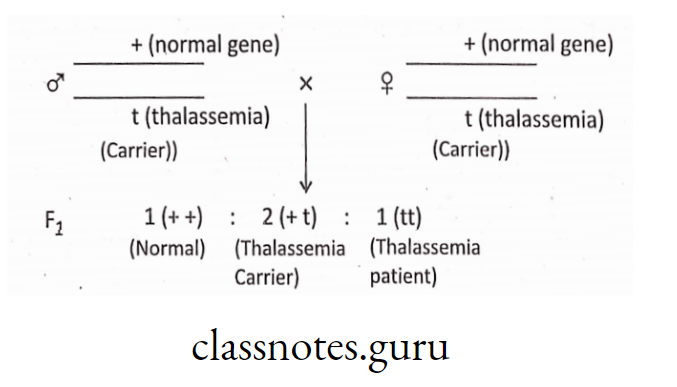
Before marriage of any two man and woman, family history must be studied for genetic counselling to find out any thalassemia carrier in the proposed male and female or their
relatives, parents etc. Two thalassemia carrier should not get married.
There are method of blood test for detection “haemoglobin disorders” which can be done before marriage to find thalassemia carrier (thalassemia minor). These premarital precautions
will help to prevent the Inheritance of thalassemia major (homozygous).
Thus birth of thalassemia babies can be checked that would justify—’prevention Is better than cure’.
Concept of Evolution :
The word ‘evolution’ means change of life forms over of wide variety of plants and animals on earth along with the. remains of dead or extinct organisms that lived in remote past, arises questions—how and from where all these organisms came into existence.
Evolution is a process of gradual unfolding of the new organisms from the preexisting primitive organisms through slow and steady changes. Thus enormous variety of plants and animals have come to exist on earth as a result of constant evolutionary process.
Evolution is the centralmost important idea in.Biology that complex living organisms evolved on earth from relatively simple ones. Hence, evolution is the cause of biodiversity on earth.
In fact, biodiversity (diversity of living organisms on earth) is due to genetic mutation.
That’s why, it is said, “Mutation is the raw material of evolution”.
Definition: Evolution is a slow but gradual progressive process by which a simple form of organism gradually becomes complex in course of time by the process of reproduction, variation and heredity resulting into origin of new species.
Evolution and Adaptation NCERT Class 10 Notes
Read and Learn More Class 10 Science
Origin of life
Evolution (latin,evolvere=unfold) means ‘unfolding of life’ like the opening of a floral bud into a flower. probable steps of chemical origin of life (theory of abiogenesis)
are as follows:
Scientists believe that the earth at its time of formation was like a ‘fireball’. There were innumberable atoms of different elements like hydrogen, oxygen, carbon, nitrogen, sulphur, phosphorus etc.
Free atoms combined to form H2, N2, H2O (water vapour), CH4 (methane), NH3, CO2 etc. H2 combined with O2 to from H2O and there was no free O2. H2 was burning and O2 helped in burning.
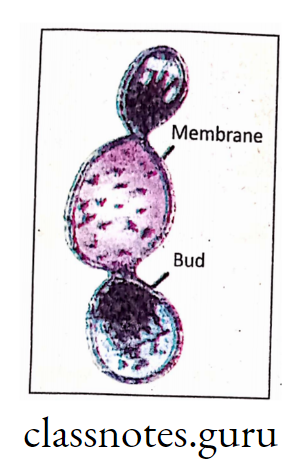
Thus primitive earth was without free O2 (reducing atmosphere). [However, present day earth is with free O2 (oxidising atmosphere)]. H2 also combined with N2 to form IMH3. Probably H2O and NH3 were first compounds on primitive earth.
Early inorganic molecules combined together to form simple organic molecules like glucose, amino acids, glycerol, fatty acids etc. These organic molecules assembled together to form microsphere that could grow by budding.
As earth started slowly cooling down, water vapour condensed to form cloud from where rainfall started and thus initiated water cycle. Rainwater was flowing from higher to lower level—thus formed fountain, hilly river, big river, sea and finally ocean.
During this downward flow of water, various salts, minerals and other chemical compounds get mixed with water and carried to oceanic water.
During rainfall, there was definitely thundershower. Thunder or lightning caused high voltage electric current that could be one of the major sources of external energy for various chemical reactions.
In this way probably a variety of complex organic molecules like protein, fatty acids, nucleotides etc. were formed and accumulated in sea or oceanic water.

Theory of ahiogenesis or chemical origin of life (Oparin and Haldane, 1923)): Definition: The formation of complex organic molecules from simpler inorganic molecules, through chemical reactions in the oceanic water during early history of earth is known as chemical evolution.
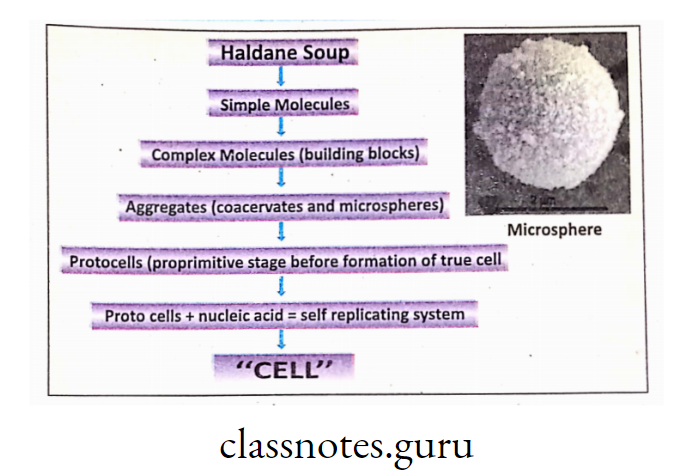
Experiment of Miller and Urey :
Stanley Miller and Urey (1953) provided an experimental proof of the theory of abiogenesis. (Miller was student of Urey). They created a laboratory condition similar to probable early earth.
Experimental procedure :
Water in a closed small flask was taken (that resembled primitive sea). Water was heated to produce water vapour that moved into a second flask placed at a higher level.
Second big flask contained a mixture of methane (CH4); ammonia (NH3) and hydrogen (H2) gases in the ratio of 2:2:1. This resembled the primitive atmosphere.

The gas mixture in the upper flask was subjected to high voltage electric discharge/ current (60,000 volts) at 800°C temperature from tungsten filament. This resembled
vigorous lightning and violent electrical storms in early earth.
The mixture was then condensed in raining water and dissolved molecules were collected at the bottom of the condenser. Miller continued the experimental set up and procedure for one week.
Samples formed in the condenser were collected and analysed.
Observation: Miller identified a variety of organic molecules like some amino acids (alanine, glycine etc.), long chain carbohydrates, formaldehyde etc. in the formed samples.
Inference: F.rom the above observation, Miller concluded that organic molecules might have been synthesized abiotically in early earth probably by the energy of high
voltage electric current of thundershower and other external sources of energy like solar radiation etc. (There was no ozone layer in pre-historic earth).
Therefore, the “theory of abiogenesis of origin of life” has been proved experimentally.
Major evolutionary events: Evolution has involved gradual transformation from simple, unicellular, underdeveloped form to complex multicellular, well differentiated forms of plants
and animals.
Major evolutionary events can be explained with a schematic diagram as follows :
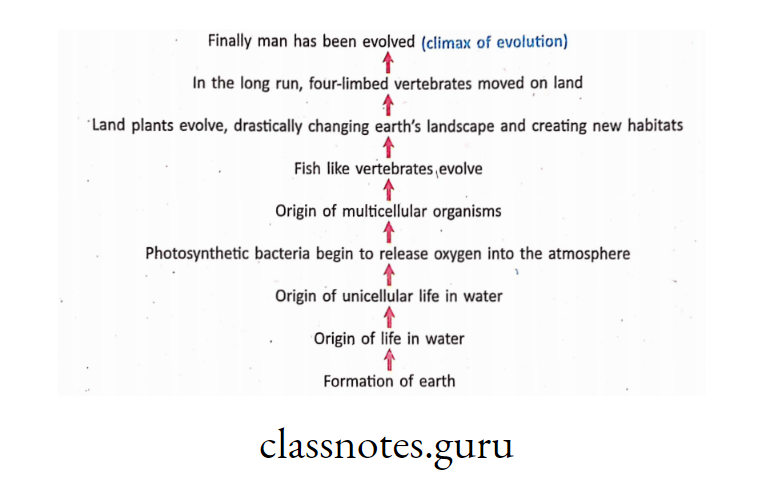

Theories of Evolution :
A number of theories have been put forward in order to explain evolutionary process taking place in plants and animals. However, Linnaeus proposed a scientific explanation of this evolutionary process, stating that, each and every species originates or evolves from some preexisting forms.
The theories of Evolution were put forward by Jean Baptiste de Monet Lamarck and Charles Robert Darwin. These theories are known as Lamarckism and Darwinism respectively.
Lamarckism
Jean Baptiste de Monet Lamarck was born at Bajastin in France in 1744. His theory on evolution was published in his book “Philosophic Zoologique” in 1809. His theory is known as ‘Theory of Inheritance of Acquired Characters’, and popularly known as Lamarckism. Lamarck proposed two ideas in order to explain his theory.

The ideas are : (i) Law of use and disuse of parts and (ii)Inheritance of acquired characters.
Class 10 Science: Evolution and Adaptation Key Concepts
Lamarck’s theory :
Continuous increment in size—All living organisms increase in size due to growth.
Conscious effort and Environmental effect—All organisms are influenced by environment. So change in environment brings about changes in organisms that develop new
demand to produce new structures in the organisms.
Thus the organism can adapt in the changing environment.
Use and disuse of organs—Lamarck proposed that by constant use; a particular organ in organisms gradually develops more and more whereas by constant disuse, the organ
becomes smaller in size and ultimately degenerates.
Inheritance of acquired characters—Due to continuous increment in size, environmental effect together with use and disuse of organs, new characters may develop in an organism
known as acquired characters.
These characters are inherited to successive generations. Gradually these acquired characters are accumulated over the generations to give rise to new species. . .
Examples in favour of Lamarckism: Lamarck explained his theory citing following examples :
Effect of use::
Long neck of giraffe—The ancestors of present day giraffe had very short neck and forelimb like horse. They used to live in the places having poor surface vegetation. So they tried to stretch their neck and forcllmb in an effort to reach to the foliages of tall trees.
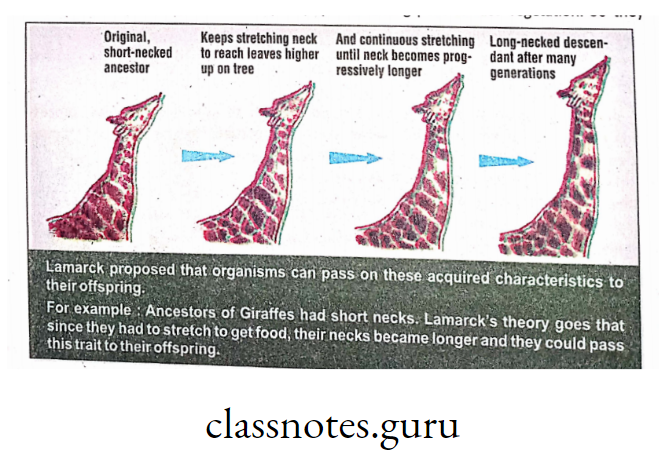
This resulted into little longer neck that was inherited to next generation. Over the generations by similar effort the neck and forelimb gradually stretched more and more thus present day giraffe with long neck and forelimb has been evolved.
Webbed feet in ducks –Oucks swim in water. All the fingers are covered by a flap of skin called webbed feet that help in swimming. This proves that because of constant use
of fingers for swimming, webbed feet was evolved.
Effect of disuse :
Loss of limbs in snake-The present day snakes are without any forelimb or hindiimb. But the fossil records proved that snakes in the prehistoric time had limbs. (Even present
day snakes like Boa, Python have vestigial pectoral girdle and pelvic girdle though they limbless).
Snakes used to crawl on the abdominal muscle (since they had very long body). So their limbs became useless (constant disuse), gradually degenerated, became vestigial and ultimately disappeared.
Criticism against Lamarckism :
Germplasm theory (Weismann)—August Weismann, a German biologist strongly criticised Lamarck’s theory. He experimentally cut off the tails of rats for nearly 22 generations
and allowed the tailless rats to breed, but no tailless offspring was born.
If tailless condition is an acquired character, it was not inherited to any generation. (So acquired character does not always inherit.)
Weismann proposed that in the body of organisms, there are two types of protoplasm germplasm (protoplasm of germ cell) and somatoplasm (protoplasm of somatic cell). Only
germplasm is inherited from one generation to next but not the somatoplasm.
Neo-Lamarckism :
According to modern concept of genetics, Lamarck’s theory has been newly modified called Neo-Lamarckism, that can be stated as follows :
Darwinism
Charles Robert Darwin (1809-1882) was born in England on 12th February, 1809. He published his theory of evolution in his famous book, “On the origin of species by means of natural selection”.
The theory of evolution is known as The Theory of Natural Selection! It is also called Darwinism.
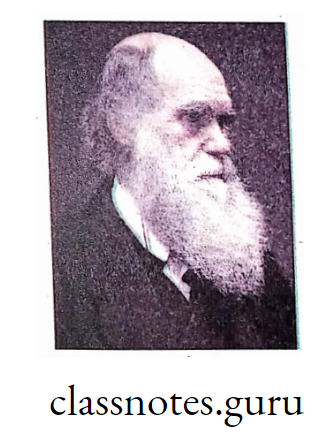
Darwin made arrangements for his assignment scientist in a voyage for exploration in the famous historical H, M. S. Beagle. The ship went on voyage on 27th December, 1831. It visited many islands of the Atlantic Ocean and South Pacific and some coasts of South America.
The Beagle returned safely on 2nd October, 1836 after 5 years of extensive survey. Darwin took extensive notes and collected lot of specimens of the Galapagos island and other places.
The name of the island was Galapagos (Spanish word for tortoise) as there were plenty of giant tortoise. Darwin observed Giant tortoise, Iguanas (Reptiles), Insects, Lizards, and thousands of birds (called Finches).
He stated his observations in his book entitled, “On the origin of species by means of Natural Selection” in 1859..
Darwin’s theory of Natural Selection: The theory is a mixture of some observations and inferences drawn from it.

Principles of Darwin’s Theory of Natural Selection are discussed as follows :
Rapid multiplication and over production—Every living organisms multiply by the process of reproduction. Thus they increase in number in geometric progression.
Prodigality of production—Even though all species produce a large number of offsprings, population remains more or less constant. This means more youngs are produced than to survive.
For example, a female Ascaris (round worm) produces about 7,00,000 eggs in 24 hours; a salmon fish produces about 28,00,000 eggs in one breeding season; an oyster produces 114,000,000 eggs and so on.
All these eggs will not hatch or grow upto adult. So many eggs are eaten up by other predators; some of eggs may be decomposed; some offsprings may be eaten up by other predators of food chain etc.
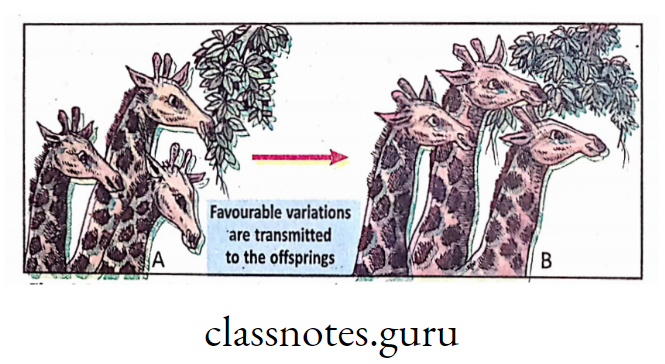
Evolution in Nature: Class 10 Science Notes
Constancy of food and space—Amount of food and space in a particular area remains more or less constant although the organisms increase in number.
Struggle for existence—A struggle between members of same species and of different species for food and Space is called struggle for existence. Usually there are three types of struggle found in nature, such as—
Variation—No two organisms are exactly same (except the identical twins). So, there are differences among the organisms and these differences are called as variation. Darwin
proposed that these variations are continuous (gradual).
Some variations are advantageous and can adjust better with the environment than that of others and these variations (adaptive features) are known as favourable variation that are inherited generation after generation.
Survival of the fittest—The individuals, which can environmental conditions are successful in struggle for existence. Struggle for existence eliminates the unfit individuals. The fit individuals possessing favourable variations survive and reproduce. So there will be survival of fittest and elimination of unfit.
Natural selection—The individuals possessing favourable variation enjoy a competitive advantage over the others. They are better adapted to their environment, survive more and
produce more offsprings.
The individuals with disadvantageous variation fail to adapt properly to their environment and therefore get eliminated by natural selection.
Inheritance of useful variation and origin ofmew species (Speciation)—The favourble variations of selected organisms gradually accumulate by reproduction generation after
generation and ultimately this may give rise to a new species known as “Origin of Species”.
Examples in favour of Darwinism :
According to Darwin’s theory of Evolution, the ancestors of giraffe showed necks and forelimbs of different lengths. As giraffes were forced to reach leaves on tall trees, the giraffes with longer neck and forelimbs had advantage over others.
Thus these giraffes had better chances of survival (fit) and were selected by nature. When they reproduced, the offsprings possessed the same advantageous variation. This explained how present day giraffes with long neck and forelimbs came into existence.
Giraffes with short neck and forelimbs (unfit) starve and die. This example justifies the idea of survival of fit and elimination of unfit.
Criticism against Darwinism :
Darwin had no idea about chromosome, DNA, gene, mutation. So, he could not explain the cause of variation, mechanism of inheritance of variation. On the contrary, he proposed
theory of pangenesis that was not accepted by the scientists.
Neo-Darwinism: In the light of modern genetics, Darwin’s theory has been newly interpreted known as Neo-Darwinism (also called as synthetic theory of evolution), which may be explained briefly as follows :
Comparison between Darwinism and Lamarckism :
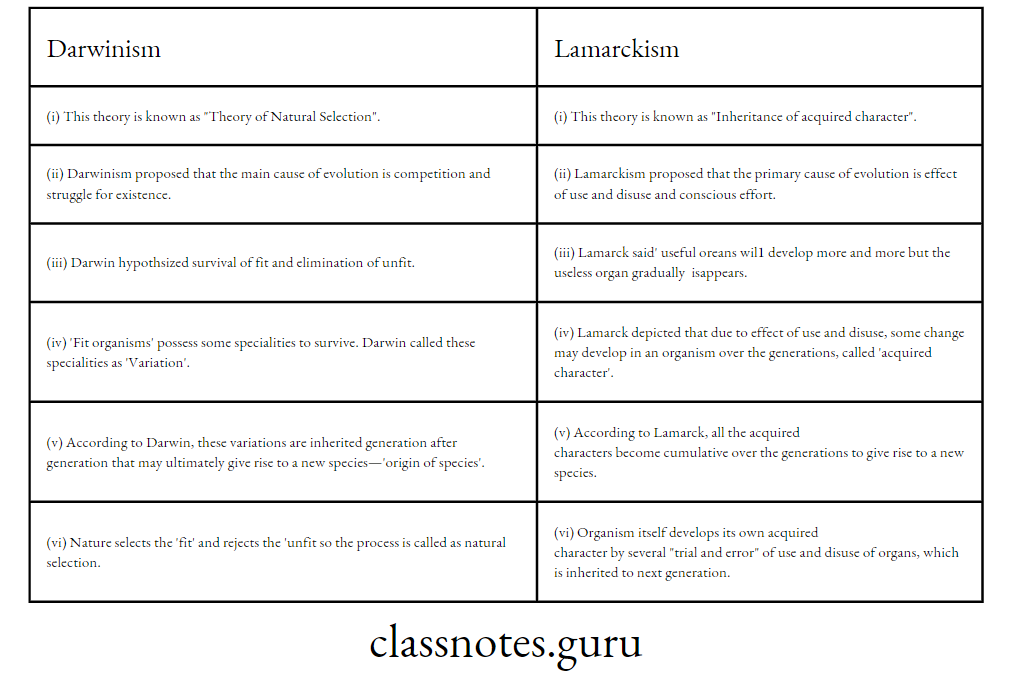
Evidences for the theory of Evolution: (What are the evidences of evolution ?)
Palaeontological (Gr. Palaeos = ancient) evidences of evolution :
Palaeontology is the branch of science (Geology) that deals with the fossils. Thus palaeontology links geology with biology.
Definition of Fossil: The fossils are the remnants of any hard part of the body of prehistoric organisms or its impression on any layer of earth strata, that are preserved by nature.
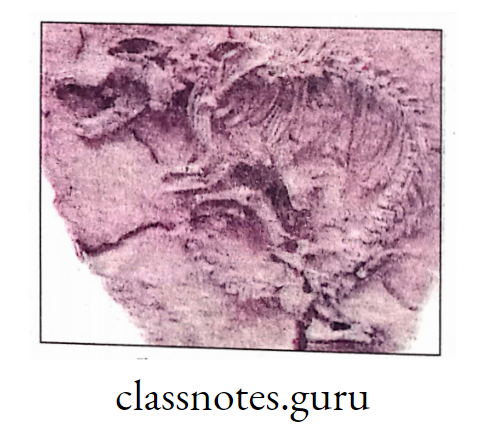
Importance of fossils :
Fossil history of horse :
Many complete fossils of horse have been discovered from different parts of the earth, Modern horse have reached the highest grade of cursorial adaptation. Whole of structural
organisation of horses is primarily due to food-getting mechanism and to attain speed. It took nearly 60 million years to complete the phylogeny of horse. The first fossil horse was
discovered in USA.
Continuous change of character during evolution is referred to as evolutionary trend Major evolutionary trends of horses were-
Evolutionary history of horse may be briefly described as follows :
Stage 1—Eohippus: First fossil of horse is named tohippus (‘dawn horse’) that was discovered from North America. It was evolved nearly 60 million years ago.The size of the
animal was like a fox. It was 11″ high at the shoulders, with short head and neck.
The forelimb was with four complete fingers (2, 3, 4 and 5) and one it of finger 1 whereas hindlimb was with three functional fingers (toes)-2, 3 and 4 with two splints of finger 1 and 5. (Splints are vestigial side fingers of horse).
Evolutionary Theory and Adaptation: NCERT Class 10 Science Notes
Stage 2— Meso’nippus : Mesohippus evolved from Eohippus. This is intermediate horse, evolved nearly 40 million years ago. The size of the animal was like that of present day sheep, about 24″ high at the shoulders.
Forelimb with three fingers (2, 3 and 4) and 1 splint of finger 5 whereas hindlimb had three fingers (2, 3 and 4) where finger 3 was longest and supported most of body weight.
Stage 3— Merychippus: This was evolved from Mesohippus, nearly 25 million years ago, about 40″ high at shoulders, with longer neck. Both forelimb and hindlimb had three fingers where middle finger (3rd) was longest and supported entire body weight.
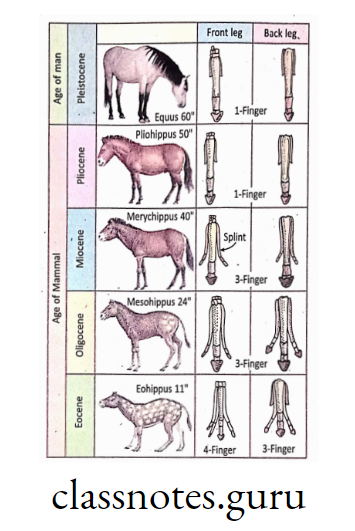
Stage 4—Pliohippus: Pliohippus evolved from Merychippus about 10 million years ago. It was nearly 50″ high at the shoulders. Both forelimb and hindlimb had strong complete finger 3 with splints of 2 and 4. Thus Pliohippus might be considered as first onetoed horse.
Stage 5— Equus: This is modern horse that was evolved from Pliohippus nearly 1 million years ago in North America and later spread throughout the world (except Australia). It is
about 60″ high at the shoulders with a long head and neck. Each forelimb and hindlimb has one very strong complete finger (finger 3) with two splints.
Therefore the line of progression of evolution of horse is
Eohippus —> Mesohippus —> Merychippus —> Pliohippus —> Equus (Modern horse)
Evidences from comparative anatomy and morphology :
Homologous Structures: Definition: The organs that have similar origin and structure but differ in shape, size and functions are called homologous organ.
Examples :
Forelimb of man, whale, bat, bird. The forelimb of all these animals have same basic structure but different shape and functions. In man, forelimb is used for grasping, in whale for
swimming (paddler/flipper), in bat for flight (patagium), in bird for flight (wings).
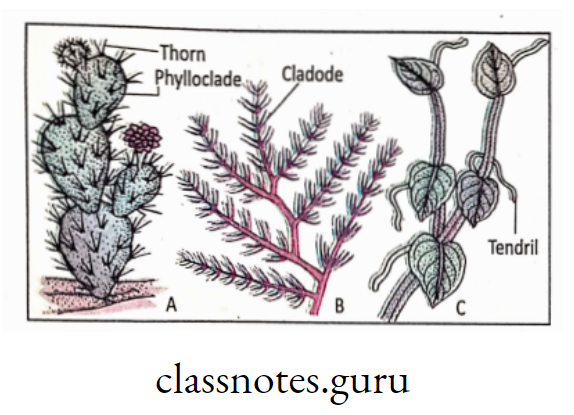
Tendril of pea plant and spine in cactus. Both of them are modified leaves but tendril helps to provide support whereas spine helps in protection, reduces transpiration.
Analogous organs/structures : Definition:The organs having different origin and structure but perform similar function are called analcgous organ.”
Examples :
Wings of birds and wings of insects. The have different structure but perform same function of flight.
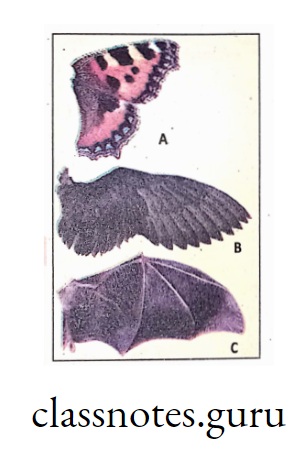
Phylloclade in cactus (modified stem) and stipules in pea plant; Tendril in pea plant (modified leaf) and tendril in passiflora (modified axillary bud of stem)
Differences between Homologous and Analogous organs :

Convergent evolution: Definition:lt is the process where different groups of organisms independently evolve analogous structures having similar functions to adapt in similar
environment Analogous structures are the result of convergent evolution.
Example: In aquatic environment, so many animals are living, such as, Invertebrates (e.g. prawn, lobster), so many Fishes, Amphibia (e.g. toad and frog), Reptilia (e.g. crocodile, turtle), birds (e.g. ducks), Mammals (e.g. whale, dolphin) etc.
Evolution and Natural Selection: Class 10 Science Notes

Any aquatic animal must have the common function of swimming, steering and balancing. All these animals have developed different structures to serve those common functions.
Divergent evolution: Definition:lt is the process where similar groups of organisms develop different functional structures to adapt in different environment. Homologous
structures are the result of divergent evolution.
Example: The forelimb of man, tiger, whale and bat have same basic structural plan—i.e. same type of bones, muscles etc. But the forelimbs of these animals have different shapes
and functions.
In man, hands are used for various functions as well as grasping; in tiger for running as well as catching the prey; in whale the forelimb is modified into flipper or paddler for swimming; in bat it is modified into patagium (wing) for flight.
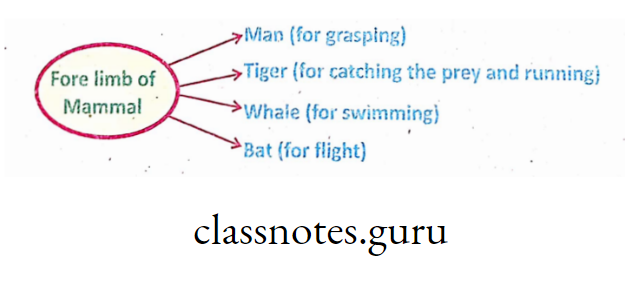
Differences between Convergent and Divergent evolution :

Vestigial organs: Definition: The organ which is useless and functionless but present in the body in much reduced form is known as vestigeal organ. (The organ is believed to be
fully formed and functional in the ancestor).
How does vestigial organ justify evolution?
These rudimentary functionless organs found both in animals and plants are evidences of organic evolution. Biologists believe that these vestigial structures can be explained only on the basis that, previously (in the ancestors) these structures were present in their full-form, but now they have turned completely functionless.
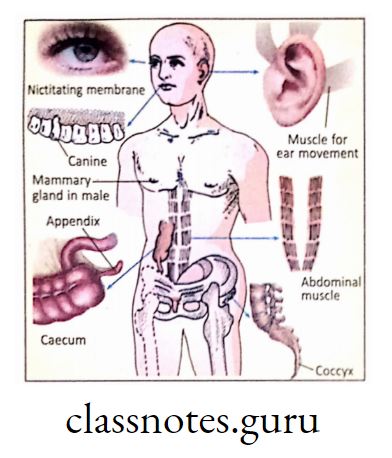
The vestigial organs that have lost their adaptive functions still continue to persist in a reduced condition. It seems as if ition is a filterin and by its automatic operation useful structure will develop more and more whereas useless structure will be gradually atrophied and ultimately disappear in the long run.
Examples of vestigial organs :
Some examples in animals—Weidersheim has listed nearly 100 such characters in human, few are mentioned here.
Vermiform appendix—The vermiform appendix of the caecum of man is perhaps the best example of vestigial organ. It serves no useful purpose in man. It often becomes infected and inflammated and has to be removed by surgical operation.
Adaptations in Organisms: NCERT Class 10 Science Notes
In other primates, however, this structure is much longer. In the rabbit, for example, the appendix of the caecum is a functional part of the digestive system. The appendix of man, hence, is understandable as a degenerating inherited structure from his ancestor.
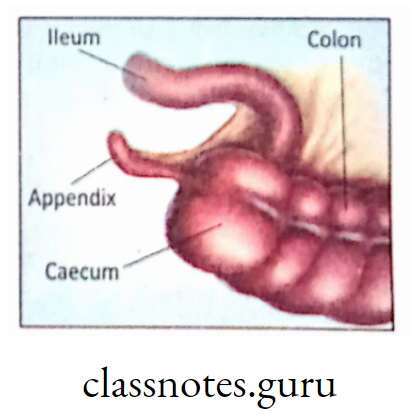
Nictitating membrane- It is the rudimentary structure present in the inner corner of the eye. It Is another example of a vestigial structure in man. This is the remnant of the fully functional nictitating membrane of other vertebrates. These structures, however, has no function in man.
Other vestigial organs- In human being, there are a nurmber of vestigial organs such as —a vestigial tail or coccyx at The end of vertebral column, mammary gland in male/segmental abdominal muscle, third molar teeth, muscles at the back side of the pinna, etc.
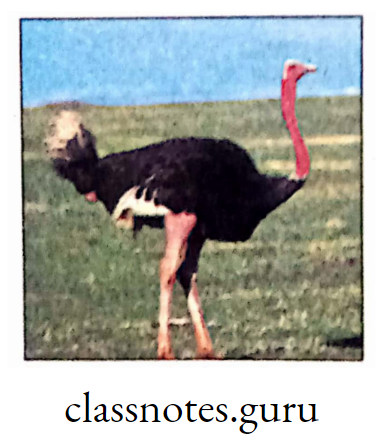
It has been observed that cow, dog and horse for example, are able to move their pinna for the more efficient detection of sound. In man the muscles necessary to move the pinna are rudimentary and functionless.
Some examples of vestigial organ in plants :
Cutin-covered stomata present on the stems of the Cacti.
Sterile stamen (staminode) (only filament without anther) of Mango,Canna, Cashew nut flowers, etc.
Sterile carpel in Coconut flower.
Functionless synergids and* antipodals ‘n the embryo Sac of the mature megagametophyte of the angiosperms.
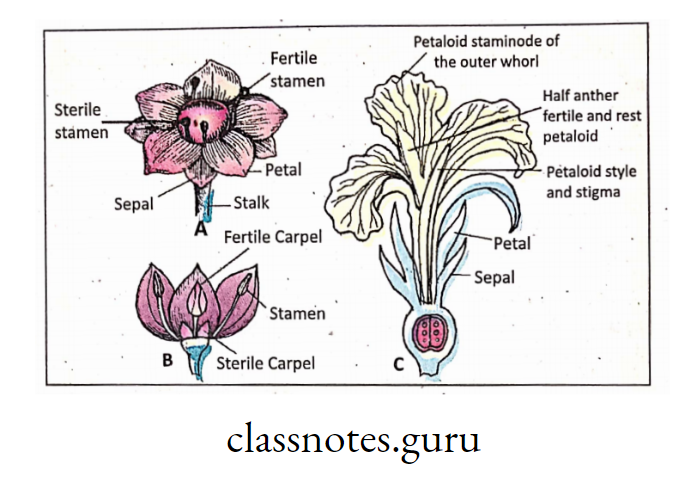
Useless flagella on the-cycad sperms (that are passively transported to the egg), etc.
Structure of vertebrate heart: Heart shows interesting homologies,
In fish— Two chambered heart Of fish (venous heart) consists of one auricle (atrium) and one vertricle only. It is transformed into four chambered heart in birds and mammals through the intermediate forms like amphibians and reptiles, the two chambered heart of fishes is not only simple, but also efficiently adapted to the aquatic environment.
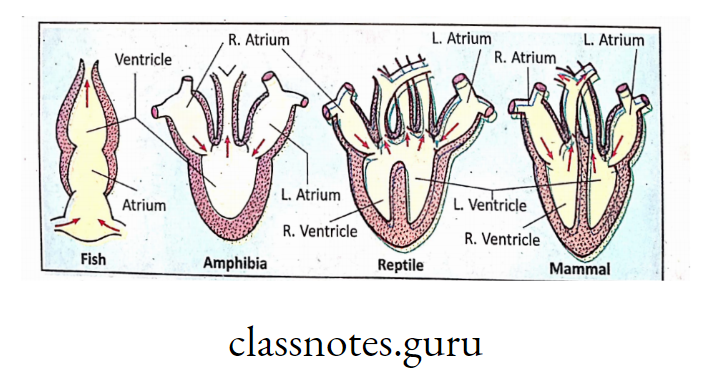
ln amphibia—With the change of habitat the amphibian heart became three chambered to prevent the admixture of the oxygenated (arterial) and deoxygenated (veneous) blood. But even then, it was, not sufficient to serve the purpose.
In reptiles—The heart of reptiles is basically three chambered, but the single ventricle is partially partitioned by a vertical septum. Thus it is also called 3} chambered heart. (But in crocodiles the ventricular partition is complete but there is an opening in the heart called Foramen of Panizza through which oxygenated and deoxygenated blood get mixed.)
In birds and mammals—The ventricular partition is complete, thus the heart is completely four chambered. Due to this arrangement, the arterial and venous blood remain completely separated.
Above examples of evolution of heart in vertebrate series (Fish, Amphibia, Reptiles, Birds and Mammals) signified that simple form of heart in fish (2-chambered) gradually becomes
complex (4-chambered) in Birds and Mammals for greater advantage—such that poikilothermal or cold-bloodedanimals (Fish, Amphibia and Reptilia) become homeothermal or warm-blooded animals (Birds and Mammalia) due to complete separation of oxygenated and deoxygenated blood.
Evidences from /Comparative embryology :
Embryology deals with the embryonic developmental stages since zygote till birth of the young one. (newborn). These evidences are based on comparative study of the embryos of various animals.
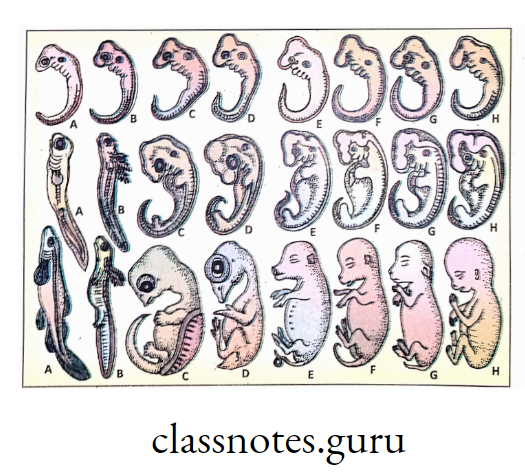
Evidence of Evolution: Fossils, Embryology, and Comparative Anatomy
If a comparative study is made with embryos of different vertebrates (such as fish, amphibia, reptilia, aves and mammalia), striking similarity is observed among the embryos as follows :
Introduction: A wide variety of living organisms are present in this planet Earth. They survive in a vast range of habitats. By constant interaction with environment, they survive
through adversities.
In order to gain maximum benefit from surrounding environment to ensure their survival, their long interactions with the environment bring about.certain morphological, anatomical, physiological, and behavioural changes.
The favourable changes which help an organism to thrive in their habitat are called adaptive features and the process bringing about their adjustment to their surroundings is called adaptation.
Cumulative adaptive features over the generation may lead to origin of new species called evolution.
The living organisms react directly to their environments in which they grow and live. As the environment is constantly changing, in order to survive in that changed condition, living
organisms may undergo certain structural modifications, otherwise there is a chance of their extinction.
These external and internal structural changes enable the living organisms to survive in their struggle for existence on earth.
Relation between adaptation and evolution :
The adaptive features enable the organisms to make the best of the conditions under which it lives. Organisms which are not able to adapt themselves to particular environment gets
eliminated, as they become weaker and weaker with successive generations, and gradually become extinct.
Organisms adapting themselves to new environment, may undergo genetic changes (mutation) which may result in production of some new varieties of organisms.
The variety of living organisms we see today is a consequence of evolution, where each variety is being modified gradually by adaptation for living in its own way. Thus adaptation is the cause and evolution is the effect/outcome.
Behaviour and adaptation : (Why is behaviour important in the process of evolution ? How does adaptation evolve in the population of an organism ?)
An adaptation can bestructural which means it is a physical part of the organism but an aptation can also bebehavioural which means the way an organism acts.
A behaviour is an action carried out by an organism under the control of the nervous system in response to an environmental stimulus (cue) or to the actions performed by an organism.
A cue (stimulus) may be an odour (eg. pheromone), sound (eg. call of Cuckoo) or visual signal behaviour is what an animal does. Behaviour allows animals to survive and reproduce and is, thus, extremely important (critical) to evolutionary process.
Behavioural adaptations include activities that help an animal to survive. Examples-Special behaviour (some animals live in groups eg. honey bee, ants etc. called social insect );Protec
behaviour (that helps to protect the animal, eg. opossum plays dead after watching beer), animal migration (for better climate, food, safe place to live and reproduce).
Behavioural adaptations can be inherited or learnt eg. swarming behaviour of honey bee. Adaptation to extreme climate (eg. cold like snowy region, dry like desert etc.) needs special
behaviour and physiology.
Behavioural pattern describes an animal’s dominant way of life eg. arborea’ An’ma* like monkey lives in trees, noctural animals like owl are active at night and so on.
Adaptive features develop because of genetic mutation. Some mutations help an organism to survive better than others (nonmutants). Adaptive character or adaptation evolve in a
population of organisms by the process of natural selection.
Definition: Proper structural, functional, physiological and behavioural modifications of an organism over generations in response to environmental change in order to survive and
reproduce is called adaptation.
Examples of adaptation :
(How does adaptation occur in organisms living in different environments ?)
Morphological adaptive features :
CACTUS (Conversion of leaf into spine or reduction in the number of leaf) :
In cactus, leaves are small, much less in number, scaly and often modified into sharp pointedsP’nes- This modification helps in checking loss of water by transpiration (since in desert, there is acute scarcity of water). Spines also help indefensive mechanism of the plant.

In some xerophytes, leaves are thick succulent and the epidermis is covered by a waxy coating.
Swim Bladder Of Fish :
Swim bladder of bony fish is a thin walled sac, elongated in shape and filled with gases. It is located in the dorsal side of the body cavity below the vertebral column.
The Swim bladder (or air bladder) consists of two chambers, of which the anterior one is smaller than the posterior. The bladder is supplied with blood capillaries called retia mirbbilia
or red gland. The swim bladder is connected with the gut by a small duct called pneumatic duct.

The bladder is called hydrostatic organ. When the fish absorbs gases into the sac, body becomes lighter in weight, buoyancy increases and the fish floats up. On the contrary, if
gases go out of the air sac, body becomes heavier in weight, buoyancy decreases and the fish sinks down. Contraction of body muscle causes increase or decrease of volume of air in the sac allowing the fish to swim freely at different desired depth of water.
Air Sac Of Bird :
Lungs of flying birds (e.g. Pigeon) are supplemented by thin wall sacs called air sacs. There-are generally nine major air sacs and four minor air sacs. In the air sac, there is no alveoli. Hence there is no gaseous exchange in the air sac but it can only store warm air.
This air makes the body light in weight that helps to increase buoyancy for flight in air ocean.

Extra energy is required for volant adaptation that comes- from double respiration. The lungs in bird are comparatively smaller in size and contain alveoli where gaseous exchange takes place. During inspiration, air comes in contact with alveoli causing first gaseous exchange and then air enters into air sacs.
During expiration, air goes out of air sac and flows over the alveoli when air comes in contact with the alveoli for the second time causing second gaseous exchange. Thus, in one complete breathing cycle (inspiration and expiration), gaseous exchange takes place twice.
So the process is called double respiration. This provides increased functional efficiency of lungs, greater oxygen supply, higher rate of respiration and energy production—that are all useful for flight.
Mechanisms of Evolution: Variation, Mutation, and Adaptation
Physiological adaptive features :
Mechanism Of Salt Adaptation In Sundri :
Sundri (Heritiera sp.) is halophyte since it grows in saline soil. It is also known as ‘looking glass tree’ (as ventral surface is pale green in colour and dorsal surface is dark green). The plant grows in Sundarban delta (but now a threatened species).
High salt content interferes with cellular metabolism and high soil salinity makes it difficult to extract water from soil. The plant deals with this strong salinity of soil and water in several ways as follows :

Salt exclusion—They have significantly impermeable roots that are highly suberised which prevent entry of sodium salts. It has been shown that approximately 90% of salt has been excluded at the roots by special enzymatic mechanism.
Salt secretion- Most of the salts that enter the roots is transported with water through the xylem to leaves. Sometimes structure like salt glands eliminate excess salts by active transportation with the help of special enzyme system.
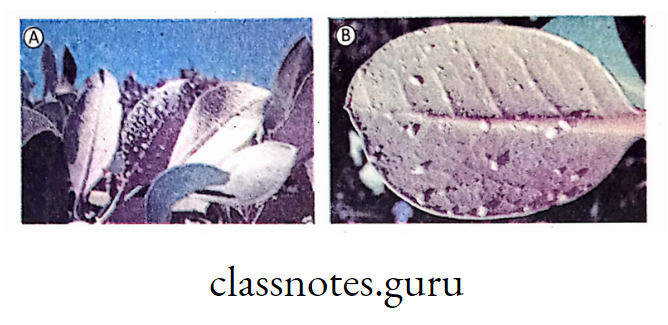
Salt storage—Within the cells, salt is stored in the vacuole (vacuolization) whereas organic solutes are stored in cytoplasm. The vacuolar membrane (tonoplast) of cells of Sundri has a modified lipid composition to prevent leakage of Na+ back to cytoplasm.
In the leaves, there are large vacuoles where the salt is stored and later eliminated during shedding of leaves.
Water conservation—There are thick leaves with leaf hair, waxy cuticle to prevent water loss by transpiration so that spit concentration is maintained in dilute form.
Camel’s Ability To Withstand Extreme Water Loss And The Shape Of Rbc In Camel :
Osmoregulation and Thermoregulation:
Camel can travel great distance in desert without food and water for several days (almost a week). Hump is the source of energy and water. There are two types of camel-(l) With one hump (Dromedary) found in Middle East and Africa and (2) With two humps (Bactrian) found in Central Asia (Baby camels are born without any hump).
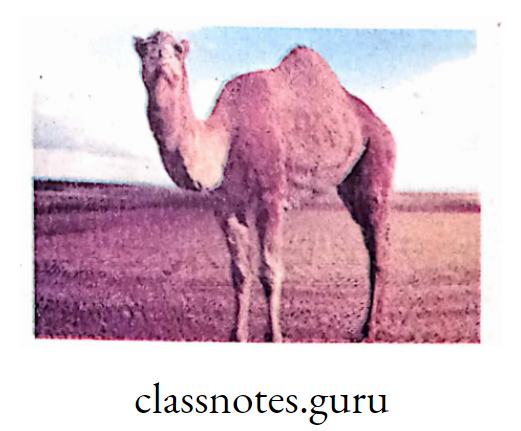
Hump stores fat (about 10-15 kg) and also protects other tissues from heating due to sunburn. Hump fat is metabolised to produce water (about 1111 gm of water per 1000 gm of humpfat).
There are several adaptive features in camel to withstand extreme water loss and thus to adjust osmoregulation and thermoregulation.
Thick skin—Camel’s thick skin insulate them from intense heat radiated from desert sand.
Tolerance of fluid loss-Camels can lose up to25% of their body fluid without showing any sign of dehydration. This provides; an extra tolerance against long term water shortage. However, they can tolerate water loss up to40% of their body weight.
Formation of dry faces—Camel reduces water loss by removal of almost dry faeces (used as fuel by Bedouins directly without further drying) by active absorption of water and salts in colon.
Body temperature and sweating—Camel can regulate body temperature in a very special way. Their body temperature ranges from 34°C at dawn upto a steady increase.to 40°C
by sunset and cool off at night again. Sweating will occur beyond 40°C temperature.
This type of unusual tolerance in extreme heat helps them to preserve approximately 5 litres of water per day.,
Role of kidney—Kidney decreases glomerular filtration rate (GFR) and can reabsorb water tremendously. If they don’t drink water, urine volume will be 500 gm/day. On the other hand, if water is abundant urine volume may go up to 7 litres/day.
After reabsorption,the urine becomes as thick as syrup and has twice the salt content of sea water.
Role of nostrils—During expiration water vapour is trapped in the nostrils and reabsorbed into the body to conserve water.
Food habit—Camel eats green herbs and thus can ingest sufficient moisture to maintain body’s hydration.
Shape of RBC and Osmoregufation :
RBC of camel is nucleated, oval in shape (found in no other mammal) which resist clumping in waterloss (dehydration). Plasma volume is maintained by absorbing tissue fluid, so that circulation is not impaired
Water is scarce in desert and needs to be stored in large amount when available. Amazingly, camels can drink upto 150-200 litres of water at once, (A 600 kg camel can drink 200 litres 3 minutes). They do this to compensate previous fluid loss.
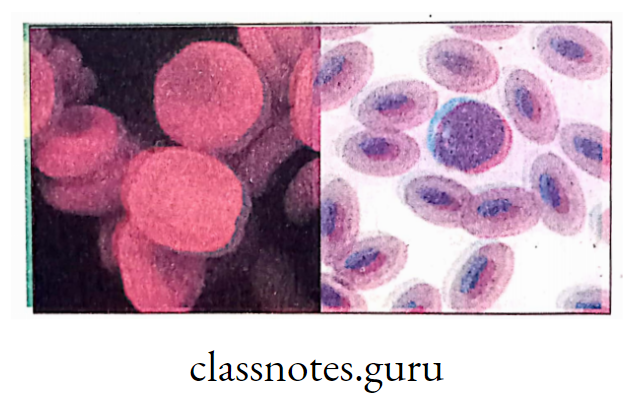
Drinking so much of water in such a short time could be a problem that may induce water intoxication and severe osmotic probiem. The oval shape of camel’s RBC and their ability to swell upto doub adjust this situation.
Water is absorbed very slowly through their stomach and intestine, allowing time for equilibrium. Moreover, RBC can swell upto 240% of normal size without bursting (while other species can only go upto 150%).
NCERT Class 10 Science Notes: Evolution and Adaptation in Plants and Animals
Behavioural adaptive features :
Problem-Solving In Chimpanzees :
Termites are favourite food of chimpanzee. They take a twig of a tree, remove the leaves from the twig. Then they use the stick like a “fishing rod” to “fish” the termites. Chimpanzee inserts the leafless stick (twig) into one of the holes in termites mound, waits for a moment, then slowly pulls it out.
The termites sticking to the twig are eaten up by chimpanzee.
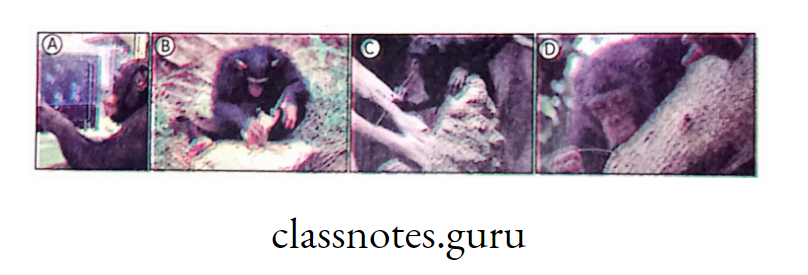
Chimpanzee also can crack open nuts using pieces of woods in a hammer and anvil” technique.
It has been also observed that chimpanzee eats leaves of medicinal plants when infected with certain parasites.
Communication In Honeybees :
Honeybees go out to locate food source.’ A honeybee returns to the hive after successfully locating a source of food. The foraging worker bee dances at a dance floor close to the entrance of bee hive.
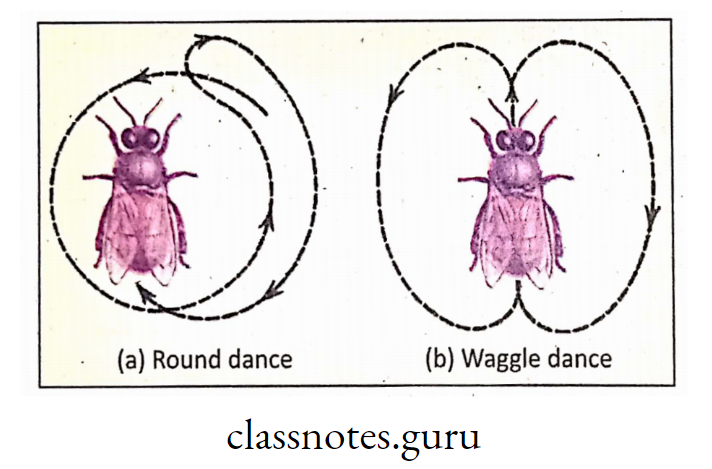
The worker bee (collector). is a sterile female who performs a set of skilful movements (manoeuvres) on the honeycomb that resembles a figure 8 (8) while waggling her abdomen. Based on the way of her dance, other bees are able to leave the hive and quickly locate the food she is dancing and the duration
source.
Life cannot exist without nitrogen. The atmospheric air contains 77-17% nitrogen. It is an essential component of all proteins. It is required- immensely for the synthesis of amino acids, enzymes, chlorophylls,’ nucleic acid, etc.
Nitrogen gas forms approximately 4/5th of.the atmosphere and neither plants nor animals can fix N2. Plants can take nitrogen in the form of nitrates which they absorb from the soil, J and animals obtain nitrogen by eating plants.
The mechanisms which replace nitrates in the soil may be divided into 2 types—
NCERT Class 10 Science: Environment and Resource Conservation
Definition of Nitrogen cycle: The complete series of cyclical events which occur partly in the micro-organisms of the soil and partly in the tissues of higher plants and animals are collectively known as the Nitrogen cycle.
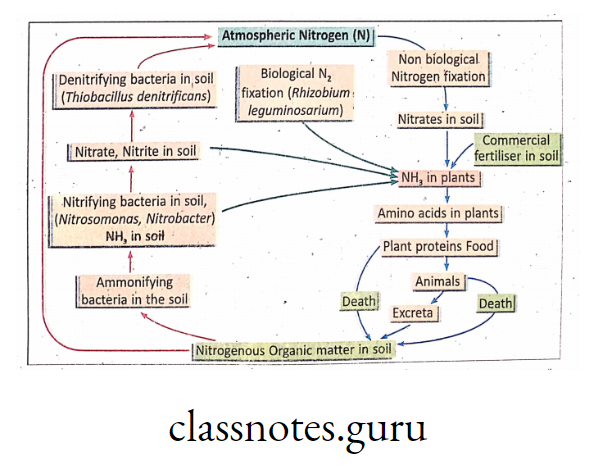
Stages of Nitrogen cycle: Nitrogen cycle consists of the various steps such as,
Nitrogen fixation; The process of conversion of nitrogen of atmosphere into the biologically acceptable form or nitrogenous compounds is referred to as nitrogen fixation.
Read and Learn More Class 10 Science
This process is of two types such as physico-chemical or non-biological nitrogen fixation and biological nitrogen fixation.
Physico-chemical process of nitrogen fixation—In this process the atmospheric nitrogen combines with oxygen during lightning of electrical discharges in the clouds and produces different nitrogen oxides.

These nitrogen oxides get dissolved’ in rain water and on reaching earth surface react with mineral.compounds to form nitrates and other nitrogenous compounds.

Biological nitrogen fixation—The process of conversion of molecular nitrogen of the atmosphere into nitrogenous compounds through the agency of some living organisms is called biological nitrogen fixation.
Certain bacteria, blue-green algae, leguminuous plants etc. can fix atmospheric nitrogen and are grouped as follows—
Autotrophic—
Heterotrophic—
Symbiotic bacteria-Bacteria of this type use carbohydrate and atmospheric nitrogen to make compounds which are eventually released into the soil as nitrates.
They live inside the root cells of leguminous plants e.g., peas, beans, clover, etc. where they cause tiny swellings called root nodules.
They obtain carbohydrate from the plant cells and in return release nitrates into the plant tissues and the soil. An association of this kind in which two different organisms benefit from living together is called symbiosis, e.g., Rhizobium leguminosarum.
Many non-leguminous plants are able to fix atmospheric nitrogen. They are—Casuarina, Alnus, Podocarpus, Pinus mycorrhiza, Pavetta, Chomelia, etc.
The whole process of biological nitrogen fixation is controlled by the action of different enzymes like nitrogenase, nitrate reductase, hydroxylamine reductase and so on.
These enzymes are present in some bacteria, few blue green algae etc. but not in other plants and animals (including man). So these microbes can fix nitrogen whereas animals and plants not.
Moreover, a special Nif gene is present in N2-fixing organisms but not in other plants and animals.
The overall process of nitrogenÿ fixation may be represented as follows :

Industrial nitrogen fixation—Nitrogen fixation is essential fc>r agriculture and manufacture of fertilizer. Ammonia is a required precursor to fertilizers. The most common industrial method is the Haber process (Haber—Bosch process)

Ammonification: The process of release of ammonia and its formation to ammonium ions is known as ammonification.
The proteins of the dead plants and animals pass into the soil, that are acted upon by soil micro-organism, which decompose protein with the liberation of NH3 (ammonia).
Soil water contains a large number of hydrogen ions (H+) which chemically unite with the free ammonia to form’ ammonium ions (NH4+). The micro-organisms influencing the process are mainly, Bacillus mycoides, Bacillus ramosus and Bacillus vulgaris.
Nitrification: The process of converting ammonia to nitrate via nitrite is known as nitrification.
The ammonium ions are oxidised by a group of bacteria in the soil known as the nitrifying bacteria. Nitrosomonas converts ammonium (NH4+) ions into nitrate ions (NO2+), and Nitrobacter converts nitrite ions to nitrate ions (NO3– ).

Nitrogen assimilation: The process by which inorganic nitrogen in the form of nitrates, nitrites and ammonia are absorbed by green plants and are converted into nitrogenous organic compounds is called nitrogen assimilation.
Nitrates are converted into ammonia which combines with organic acids to form amino acids. Amino acids are used for the synthesis of protein, enzymes, nucleic acids, chlorophylls, etc.
During digestion, plant proteins are broken into amino acids which are transformed into animal proteins, nucleic acids, etc.
Denitrification: The process which involves conversion of nitrates and nitrites Into ammonia, nitrous oxide and nitrogen is called denitrification.
The process is accomplished by the denitrifying bacterias lik Bacillus denltrificans, species of Pseudomonas, Micrococcus, etc. Several autotrophs like Thiobacillus denltrificans, Thiobacillus thioparus, etc., also take part in this process.

Human activities and nitrogen cycle :
Human activities (such as use of fertilizers) greatly increase the amount of nitrogen in the environment. This excess quantity of nitrogen cycles between the living world and biosphere (soil, water and air).
This may result into some disastrous effects as follows :
Increased global concentration of nitrous oxide (N2O) may cause serious greenhouse effect (since N2O is a potent greenhouse gas).
Increased regional concentration of other nitrogen oxides like NO may result into bad air pollution that may cause bronchitis, pneumonia and other lung diseases.
Due to deposition of acids of nitrogen, substantial acidification of soil and water may cause soil pollution and water pollution respectively.
Nitrogen oxides (NOX) damages leaves of plant, growth of saplings, reduction in the rate of photosynthesis.
Excessive NOX is responsible for acid rain which is very harmful to flora and fauna.
Significance of Nitrogen cycle :
So, nitrogen cycle represents an excellent example—how nitrogen circulates around and through the physical and biological world, restoring (the balance of nature.
Concept of pollution. (What is pollution ?):
Environment denotes the sum total of physical and biological factors that directly influences the survival, growth, development and reproduction of organism. Environment means biosphere which includes atmosphere, hydrosphere and lithosphere.
The whole of the earth including all its living organisms and nonliving substances are together called as biosphere.
Any unfavourable change in physical, chemical and biological characteristics of surroundings (consisting of air, water and soil) due to several human activities which ’cause harmful effects on Our or other desirable species and cultural assets is known as environmental pollution.
Pollution is an undesirable change in the physicochemical and biological characteristics ofÿhe biosphere that have adverse effects over living organisms and the environment.
Types of pollution
(HGW does pullution affect our daily life ?)
Air Pollution :
Many pollutants (either natural or man made) may cause disruption of norrnal composition of atmosphere known as air pollution. There, are many causes and effects of air pollution.
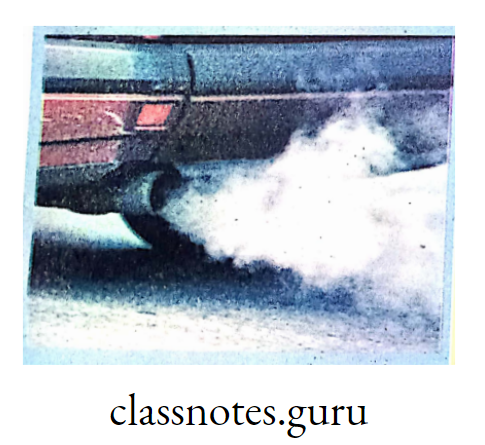
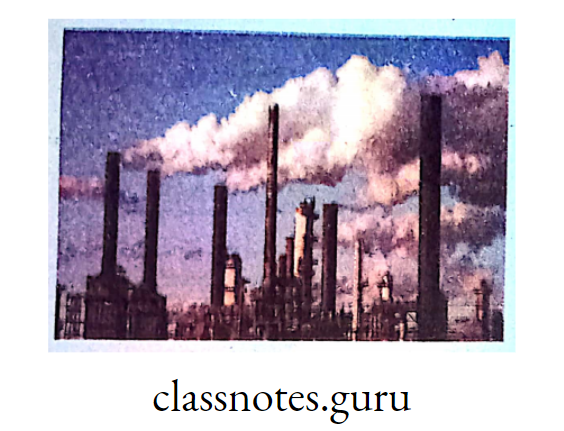
Water Pollution :
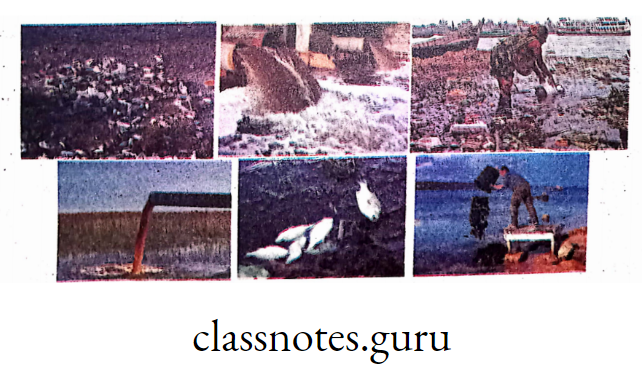
Water pollution means the adverse changes in the composition and condition of water such that it becomes unsuitable for use.

Soil Pollution :
Soil pollution (land pollution) is the deterioration of the earth’s land surface, naturally or man made, which decreases the quality and productivity of plants and ground water.

Noise Pollution :
Unwanted, irregular, unpleasant and annoying sound which is caused by the vibration of matters is known as noise and the pollution caused by them is called noise pollution.
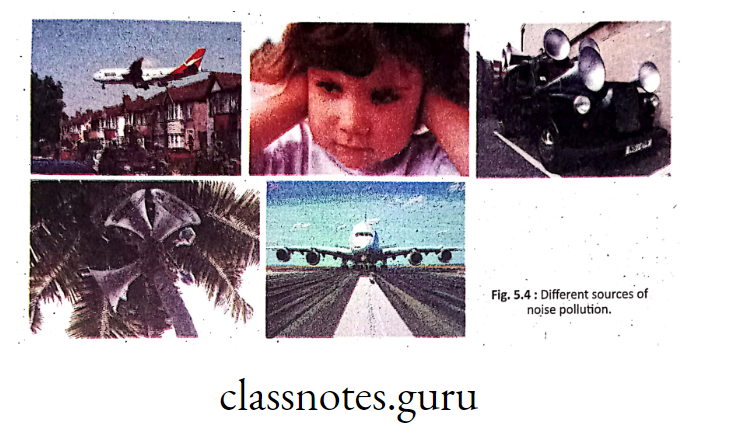
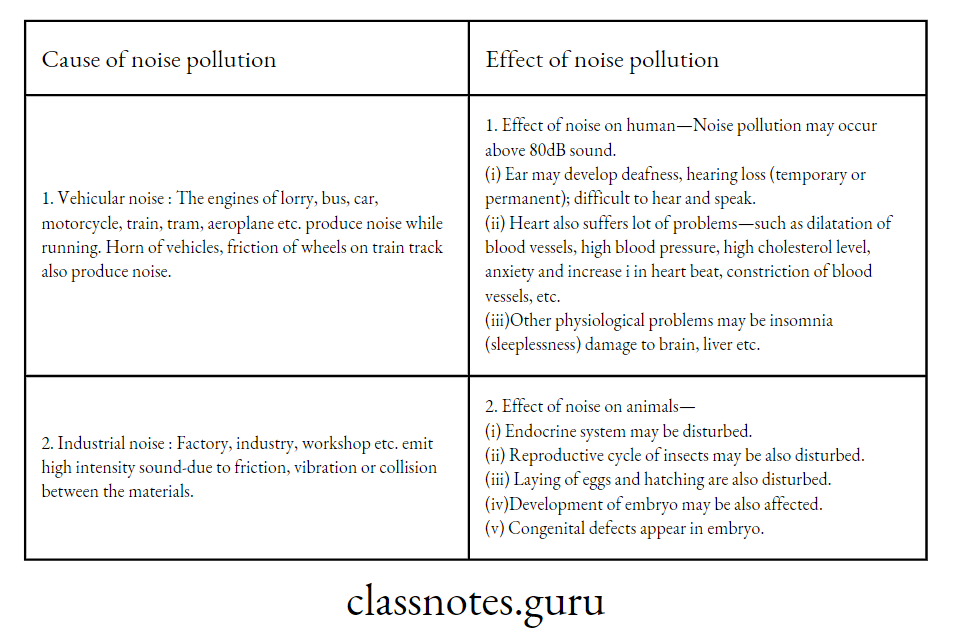
Environment, Resources, and Conservation: Class 10 Science Summary
Problems of ever-increasing population:
(What are the problems caused by ever-increasing population ?)
Environment in the sum total of living and nonliving things which exert influence on living organisms present in a particular area. The natural surroundings of an organism, which affect its life by directly influencing its activities is called art environment.
It consists of lithosphere (soil, rocks etc.), atmosphere (air), hydrosphere (water).
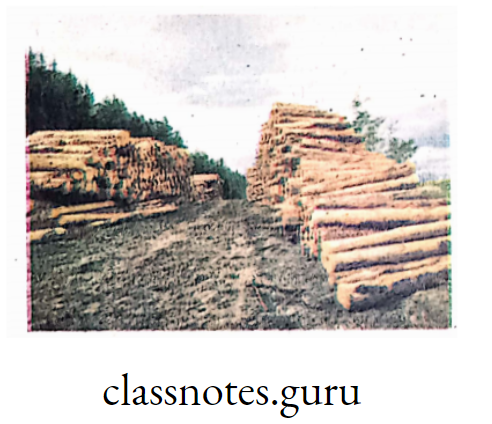
Throughout the world, all the problems may be summarised as Bp’s—pollution, population and poverty. Ever increasing human population (over population) is creating lot of devastating pollution and overconsumption that can be summarised as follows :
Overexploitation and depletion of natural resources—Man is overexploiting natural resources like fossil fuel (coal and petroleum).
Deforestation and loss of ecosystem-forest trees contributes valuable quantity of oxygen to global atmosphere and thus helps to maintain O2-CO2 balance. By deforestation huge amount of forest area is decreasing causing lot of pollution hazards.
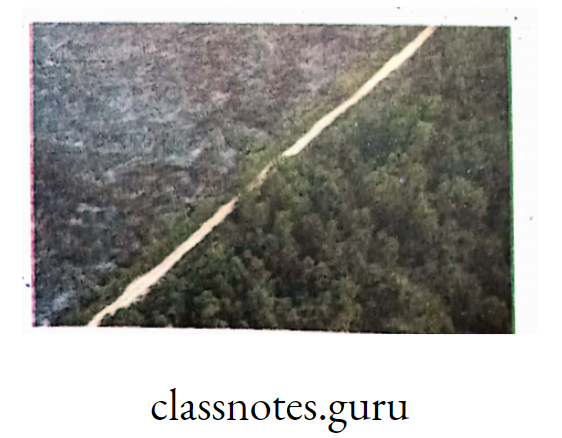
About eight million hactares of forest are lost each year.
Shrinking of agricultural land Because of extensive urbanisation, industrialisation, establishment of townships etc. agricultural land is decreasing 3/4th. of the earth is water and only 1/4th is land.
This area barren land, mountain, desert, forest, township, industry etc, So very small land area than 10%) is- available for agricultural purpose but this area is still squeezing by progressive urbanisation.
This is a big threat to global ecosystem.
Shortage of fresh water- Due to overpopulation, there is acute shortage of fresh water for drinking, regular household works and for agricuIturaL crops.

Air and water pollution—Because of overpopulation, there is parallel pollution of air, water, soil and so oh. Overexploitation of underground water by shallow and deep tubewells results into arsenic poisoning.
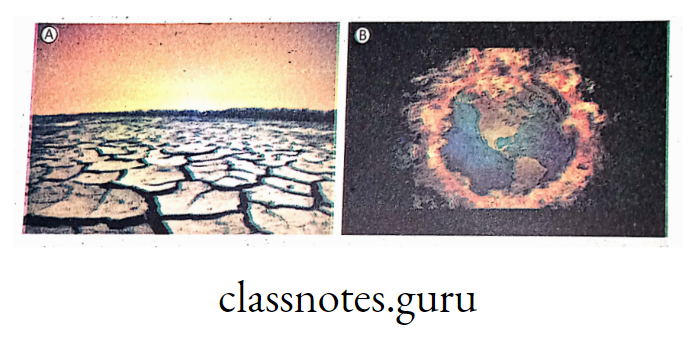
Changes in atmospheric condition and global warming—Due to excessive production of greenhouse gases(CO2, CH4, CFC, N2O -etc.) by industrialisation, modernisation, atmos pheric condition is gradually changingresulting into green house effect (global warming).
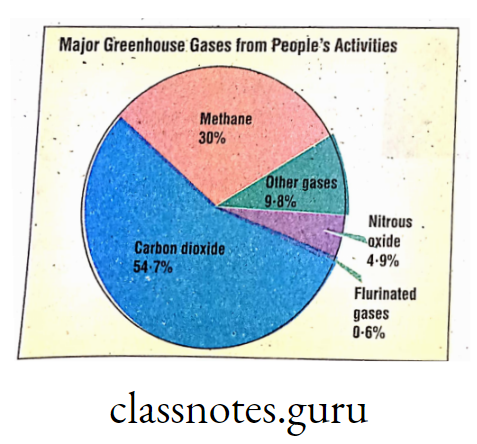
Destruction of wetland and its consequences—Natural or manmade aquatic habitat where water may be running (lotic) or stagnant (lentic) is called wetland. Wetlands are very useful as water reservoir, ponds for cultivation of fish etc.
They are nature’s kidney but wetlands are also threatened.
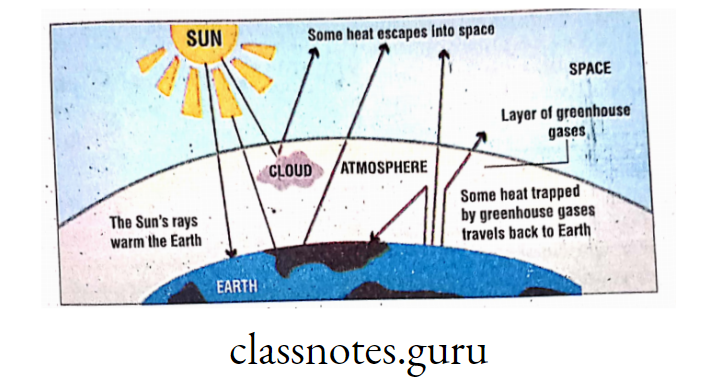
Scarcity of food-Qverpopulation leads to competition, ‘struggle for existence’ causing scarcity of food ‘and increase of price.
Environment and human health :
Various lung diseases, cancer etc. may develop due to environmental pollution and increasing population.
Lung diseases :
Asthma: This is a chronic lung disease where respiratory airways become narrow,produces extra mucus which results into difficulty in’ breathing, triggers coughing and wheezing (a whistling sound during breathing), develops chest congestion.

Some environmental triggers for asthma may be—
Bronchitis: It is inflammation of the membrane in the bronchus of respiratory system, which causes pain (spasm) and coughing. Bronchitis may be either acute or chronic Common causes of bronchitis may be-
Cancer: Various environmental toxins or poisons may cause cancer,
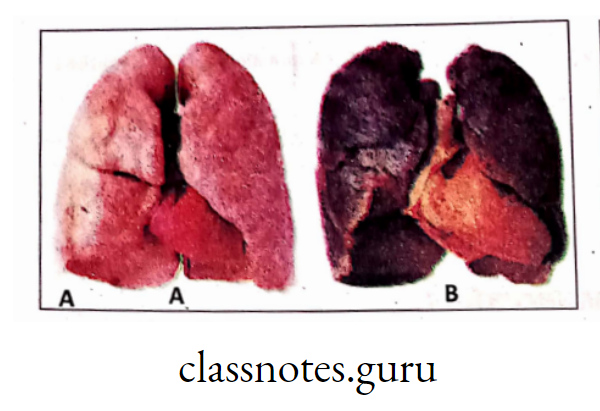
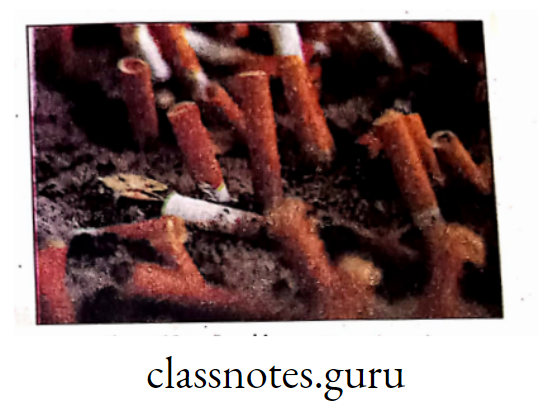
Tobacco smoking or chewing are actually ‘wrong life style’ that can increase the risk of cancer.
Class 10 Science: Natural Resources and Their Conservation
Biodiversity and its importance :
(How the variety of fife forms in the environment help us ?)
The term “biological diversity” was first used by Dasmann (1968). Later the term is modified into “biodiversity” by Rosen in 1985. However, the term ‘biodiversity’ is popularised by Wilson to describe combined diversity of millions of organisms on earth.
Definition: The variety of iife on earth which includes piants,- animals and other living organisms’ along with their genotype and ecological interaction are together called as biodiversity.
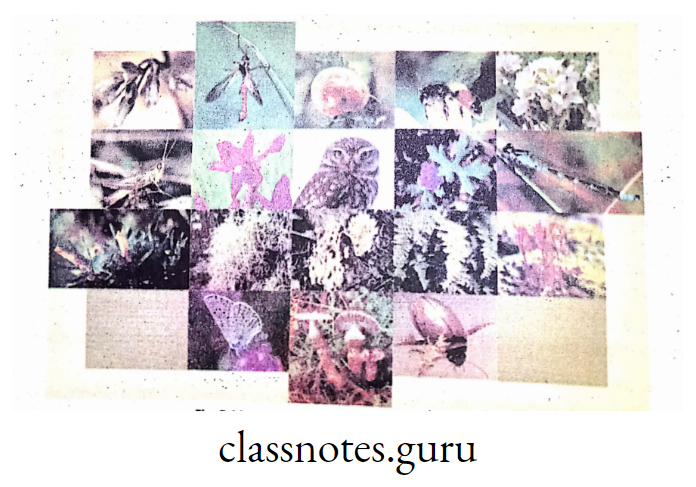
Total number of known plant and animal species on earth is approximately 15 million of which nearly 70% are animals and only 22% plants.
The species found to grow in a definite geographic area and not found elsewhere, is said to be endemic to that area. Example—one horned Rhino (Rhinoceros unicornis) is found in Jaldapara, Kaziranga forest zone but nowhere else in the world.

Importance of biodiversity :
Production of food—Different plants and animals provide us food.
Production of ‘ drugs and medidnes-Most of the plants are medicinal plants that produce drugs and medicines. Some animal products, fungus and microbes also provide us medicines.

Maintenance of ecological balance—Ecological balance is maintained by plants (producers), animals (consumers) and microbes (decomposers) through food chain, food web and energy flow.
Climate control-Climatic condition is maintained by the interaction of diverse plants,animals and microbes through biogeochemical cycles as well as conservation of biodiversity.
Economic importance—Various plants and their products
of house, household furniture, production of paper, gum, resin etc.
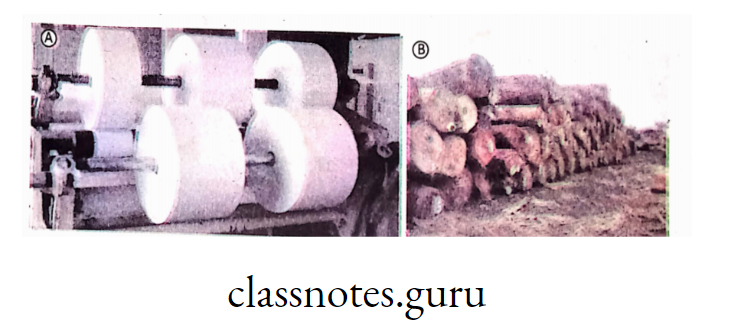
Various animal products like honey, beewax, dairy products,leather, silk, wool, fishery pearl etc. are very useful to us.
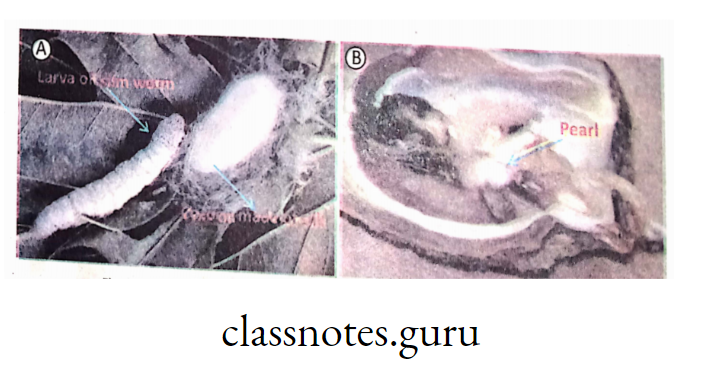
Influence on art and literature— Biodiversity helps us to study natural history.
Birdwatching, gardening, fishkeeping are due to diverse plants/flowers, animals. Biodiversity inspires musicians, painters, writers, other artists with its natural beauty. Biodiversity has intrinsic aesthetic and spiritual value.
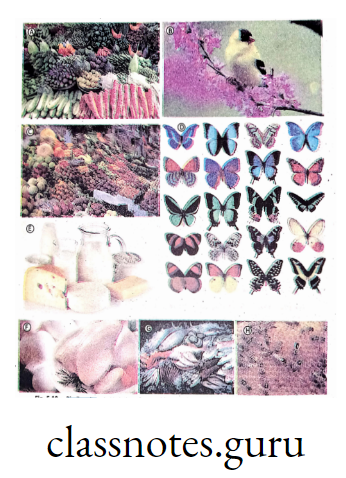
Biodiversity hotspots
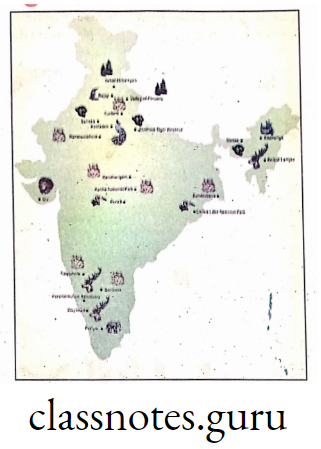
Definition: The geographic areas that contain high level of species diversity but are endangered to extinction are known as biodiversity hotspots.
34 biodiversity hotspots have been identified all over the world of which four important hotspots are in India, they are Eastern Himalayas, Indo-Burma, Western Ghats and Srilanka, Sundaland.
The Eastern Himalayas—This is the region that includes Bhutan, North-Eastern India, Nepal. This is wide mountain range from where major rivers arise. This hotspot has lot of globally threatened species viz. one horned Rhinoceros, Golden langur, Wild dogs, Sloth bears, Black bear etc.

Indo-Burma—This region includes North-Eastern India, Eastern Bangladesh, Myanmar, Malayasia, Vietnam, Thailand. This region is endemic to several animals like Monkeys, Langurs,Gibbons and many birds. Many plant species are also endemic to this region. Ginger is native to this region.
The Western Ghat—These are a chain of Hills that run along the Western edge of Peninsular India upto Srilanka.
They have high rainfall, close to Indian ocean. There is moist deciduous forest as well as rain forest having lot of species diversity. Varieties of amphibians and reptiles are endemic to this area.
Sundaland—This is a biogeographical region that comprises Indonesian islands of Borneo,Sumatra, Java, Bali and Malay peninsula. (However, these area do not belong to India). This ecoregion contains a diversity of freshwater habitats including hill streams.
So many fresh water fishes are endemic here.
Loss of biodiversity ;
(What are the threats to biodiversity ?)
Primarily, because of human interference (anthropogenic), large number of plant and animal species are extinct from earth or become endangered on the verge of extinction. Some common reasons behind loss of biodiversity can be explained as follows :

Environment and Ecosystem Conservation: NCERT Class 10 Science Notes
Destruction of habitat due to change in land use pattern— This is the most important cause for loss of biodiversity. Overpopulation, urbanisation,industrialisation require huge land area. So there is destruction of natural habitat by.
filling wetlands, ploughing grasslands, cutting down trees, burning forest. So there is loss of wild natural habitat. So many plantsand animals die out. Animals requiring large area (eg. mammals and birds) are badly affected. Migrating animals are also threatened.
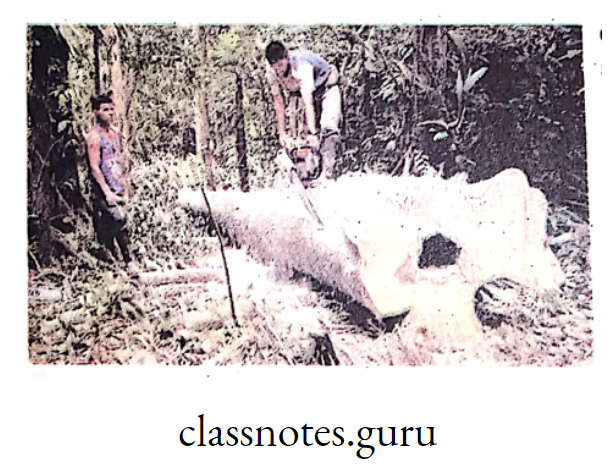
Parallelly there is also spread of agriculture—so grassland, wetland, forests are destroyed that results into extinction wi S0, there is a,so reduction in biodiversity.


Hunting and poaching—Once upon a time hunting in the forest was an example of bravery. Over the years many wild animals like tiger, cheetah, leopard, panther, deer, elephant, dolphins, whales, rhinoceros have been brutally killed.
Even today, the poachers are still killing the wild animals. Thus many animals become extinct or endangered. Presently by Government rules and laws, hunting is strictly prohibited.
Global warming and climate change—There is change of temperature, humidity, rainfall etc.—so climatic change occurs. In the history of earth, there was iceage when many organisms became extinct.
Presently, due to greenhouse effect, there is global warming when there is gross change in climate—decrease of rainfall; expansion of desert, melting of iceberg. Thus
penguins, seals, whales are also threatened.

Pollution— Excessive use of pesticide has polluted waterbodies, ground water, where many species died. Overuse of pesticide may cause biorriagnification which is more dangerous for biodiversity. There is sharp decrease of carnivorous birds like falcon, kingfisher etc.
“Run off” of fertiliser from cultivating field into nearest waterbody results into eutrophication which will cause excess demand of oxygen (BOD—Biological Oxygen Demand) which is harmful for the primary aquatic animals like
Overexploitation—Overexploitation of any species will lead to reduction in the size of population (eg. Hilsa fish and other marine fishes) so that they may become vulnerable to extinction. In last 500 years—Dodo and others have become extinct due to overexploitation by man.
Natural calamities—Cyclone, Tornado, Tsunami, volcanic eruption and other devastating natural calamities caused tremendous loss of biodiversity all over the world at different time.
Those are irrepairable, irreversible damage of biodiversity that can not be compensated.

Example—During Tsunami, coral bed at Andaman area has been badly fragmented
and swayed away at different parts of Indian Ocean.
Introduction to exotic species—Exotic species (Alien species) are those that have been imported from foreign countries of world which are growing and reproducing well in our climate.
Sometimes they become very invasive and drive away the local species to extinction.Exotic species may be harmful to both aquatic and terrestrial ecosystem.
Example—Water hyacinth (Eichhornia) was brought from Amazon Basin of South America and introduced in Indian water to resuce pollution but it has resulted into death of many indigenous aquatic plants and animals causing oss o hiodiversity.
Environmental problems of the Sundarbans
(What ails the environment of the Sundarbans ?}
Sundarban covers around Sundarbansquare kilometremeans “beautifulout of whichforest”.60% belongsThere areto BangladeshSundri trees.nd 40% in India. Sundarban is the largest mangrove wetland ecosystem in the world.
Sundarban is included under UNESCO world heritage site. It has the largest Royal Bengal Tiger reserve. It contains diverse fauna—about 35 species of reptiles, more than 270 species of birds, 42 mammals (including last population of tiger inhabiting mangroves in the world).
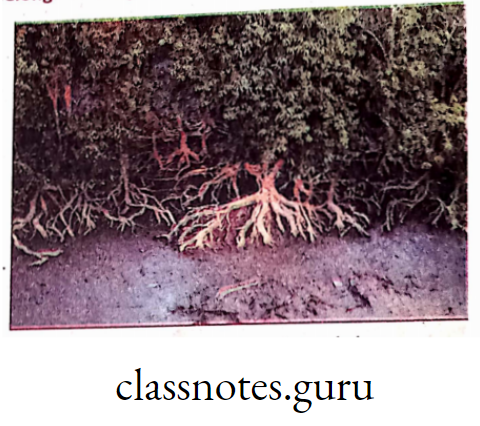
Some common local species are – tiger (Panthera tigris), Saltwater Crocodile (Crocodylus porosus), Water Monitor (Varanus sp.), Rhesus Monkey (Macaca sp.), Jackal (Canis aureus).
However, this unique coastal tropical mangrove is most threatened in the world. The threats to the mangrove ecosystem are arising partly due to natural biotic pressure from the surrounding environment and partly due to human induced (anthropogenic).The causes of threats can be outlined as follows :
Destruction of mangroves due to urbanization—Lot of forest trees are cut off for building, shops and urban development.
Agriculture—Agricultural expansion results into clearance of mangrove trees.
Eresh water crisis— Reduced flow of sweet water into Sundarban mangrove system results into fresh water crisis.
Destruction of habitat –There is continuous deforestation and destruction of habitat by cutting trees to meet the demand of small timbers and fuel wood for local consumption.
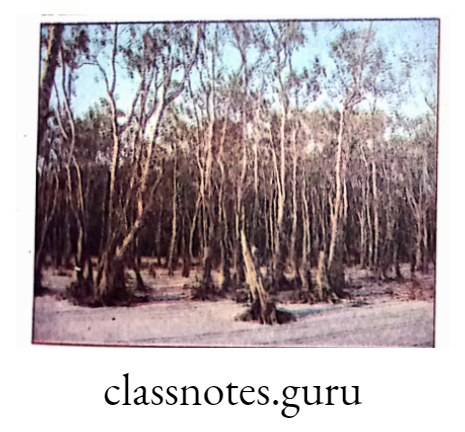
Pollution — Chemical pollution by I marine points, hydrocarbons, sewage and industrial pollution results serious threat to flora and fauna at Sundarban.
Disbalance in prey-predator number-uncontrolled collection of prawn seedlings,uncontrolled fishing, trampling of river banks by fisherman, poaching of tiger, spotted deer, wild boar, marine turtle, horse shoe crab etc. resulted problem in food chain and food web of the ecosystem.
Submergence of islands due to rising sea level —This has made worst effect on human settlement in nearby blocks. Their main livelihood—agriculture and fishing are also affected.
Climatic factors-Various natural disaster like cyclone, flood, storm etc. seriously affect this mangrove ecosystem.
Resource Conservation and Sustainable Development: Class 10 Science
Conservation of biodiversity
(What measures can be taken to conserve biodiversity ?)
Biodiversity is threatened by reduction in space, smaller and fragmented habitats, over exploitation by man, climatic change, pollution etc.
Conservation of biodiversity is a method for protection and scientific management of biodiversity to its optimum level and derive sustainable benefits for the present as well as future generations.
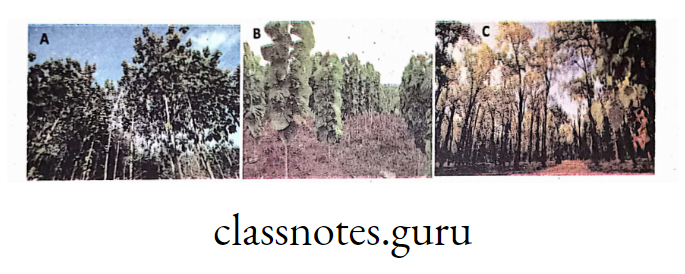
Various methods could be applied for conservation of biodiversity. These methods are divided into two major categories depending on the place of conservation. In one type life forms are conserved in their original habitat (ip-sfcu conservation) and in. another type conservation is done outside the natural habitat of the organisms (Ex-situ conservafton)
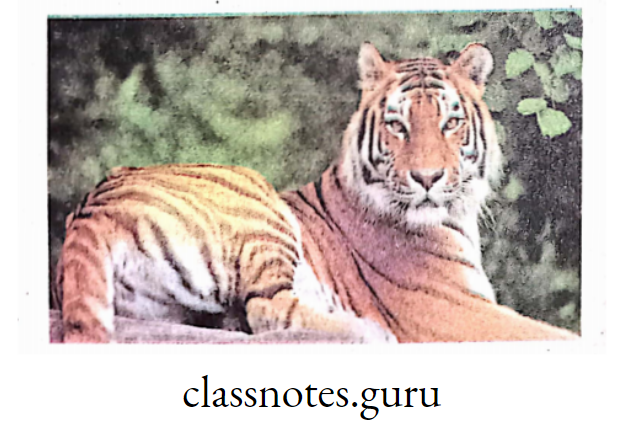
In-situ conservation: The method of conservation of biodiversity in the natural habitat of the organism is known as in-situ conservation, eg. conservation of rhinoceros in Gorumara, Jaldapara, Kaziranga forest; Royal Bengal tiger in Sundarban forest etc.
Ex-situ conservation: The method of conservation of biodiversity outside their natural habitat in the man-made system is known as e>esitu conservation, eg. conservation of different plants in Botanical garden, conservation of different animals in Zoological garden etc.
Different methods of Ex-situ conservation :
Zoological garden-
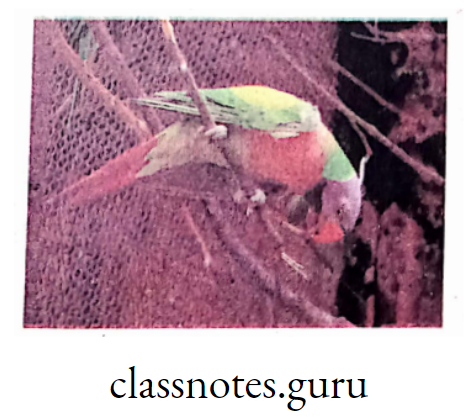
Example: Alipur Zoological Garden in Kolkata, West Bengal.
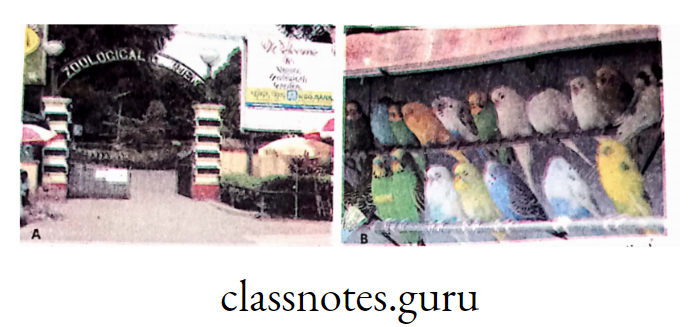
Botanical Garden—
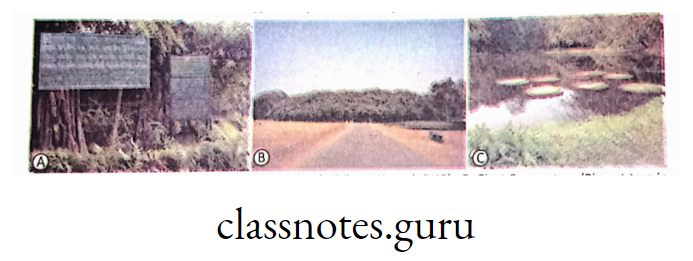
NCERT Class 10 Science Chapter: Environmental Issues and Solutions
Cryopreservation— Some plant tissues, seeds, embryos or other parts of plant may be preserved at -196″C in liquid called cryopreservation. The cryopreserved material is revived through special technique as and when required.
In order to prevent extinction, parts of endangered organisms may be cryopreserved to help in conservation.
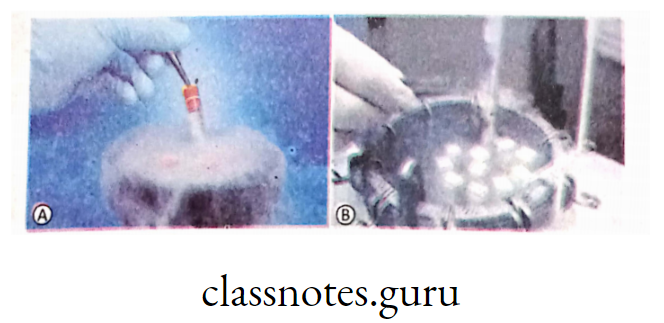
Role of JFM -aptd -P-BR in -conserving biodiversity :
(How can common people participate in conservation efforts ?)
Joint Forest Management (JFM): This was instituted by the 1980s. It was initiated to meet the demands of the people and save forests from destruction. It involves the participation of common people in the protection and management of forests.

It was realised in 1980s by Government of India that participation of local communities around the forest area is urgently needed for conservation of forest and its natural resources. So the concept of JFM developed.
This is a joint committee of Government people and people of local communities who work together for protecting and managing forests. In return for their services to the forest, the communities get benefit of various forest”products like fruits, gum, rubber, medicine etc. and thus the forest can be conserved in a sustainable manner.
The pioneer project of JFM started in 1971 for restoration and management of degraded Sal forests (Shorea robusta) by the local inhabitants of the Arabari forest in Paschim Midnapore district in West Bengal.
JFM is the official and popular term in India for partnership in forest movement involving both the state forest departments and local JFM are communities.
The policies and objectives of in 1990. detailed Usually a in village National committee Forest Policy known of as India Forest (1988) Protection and the Committee guidelines were(FPC)prepared and the Government Forest Department enter into JFM agreement.
JFM originated accidentally at Arabari Forest Range in West Midnapore in 1971. The Major hardwood of Arabari is Sal which is commercially profitable forest crop. Ajit Kumar
Banerjee, a silviculturist, working in the Forest Department as Divisional Forest Officer (DFO), conducting trials which were constantly being disturbed by grazing animals and illegal harvesting by the local population.
The forest officials formed an adhoc Forest Protection Committee which include eleven local villagers and negotiated the terms of a contract. The contract agreement was—
The experiment on Arabari Sal Forest was very successful and was expanded to other parts of West Bengal and India as well. After initial success in West Bengal, followed by Haryana, JFM schemes received national inportance in the legislation in 1988.
Presently, nearly 63,000 FPCs involved in JFM of over 140,000 km2 of forested land in India.
Class 10 Science: Water, Air, and Soil Conservation Techniques
People’s Biodiversity Register (PBR): Biodiversity Management Committee (BMC) will be constructed involving local people along with government officials who will prepare People’s Biodiversity (PBR) in consultation with local people.
The register contains comprehensive information on availability and knowledge of different
local biological resources—their medicinal use,commercial use and so On as per Biodiversity Act, 2003.

This documented register is prepared to know the history of the biological resources of a particular place, changes in resource and people’s opinion about management of that resource.
A number of PBRs have been prepared in different parts of India since 1995 with the initiatives of many NGOs and educational institutions along with local communities and village councils (Panchayat).
PBR is actually a documentation of local biodiversity (flora and fauna). It includes—cultivating land, water bodies (pond, lake, canal, river etc), forest (any special variety of plant), plants (crops, vegetable, fruits medicinal plant), animals (wild animals, domestic animals, varieties of insects, birds), any other important notable feature of the place and so on.
Significance of PBR :
These attempts have motivated common people to create awareness about management of natural resources. PBR will have an important role to piay in promoting conservation, sustainable use and equitable sharing of benefits of biodiversity resources in coming decade.
Some endangered species ofIndia and their conservation :
Conservation efforts of Tiger, Rhinoceros, Lion, Crocodile and Red Panda in India : (Name and place of the projects undertaken by Government of india).
For the proper conservation of all the above mentioned endangered animals, many projects have been adopted by the Government. In those projects, hunting and poaching are strictly banned.
Forest guards, pfficers, scientists are appointed to look after the wild animals.with proper care.
Wild life traditionally refers to undomesticated animal species but now it includes all plants, fungi and other organisms that grow or live wild in an area without being introduced by humans. Wildlife can be found in any ecosystem.
The four most general reasons that lead to destruction of wild life includes—
Conservation of tiger (Panthera tigris):
Tiger is the national animal of India, the most majestic cats in the world. Tiger conservation aimed to prevent the animal from becoming extinct and preserving in its natural habitat.
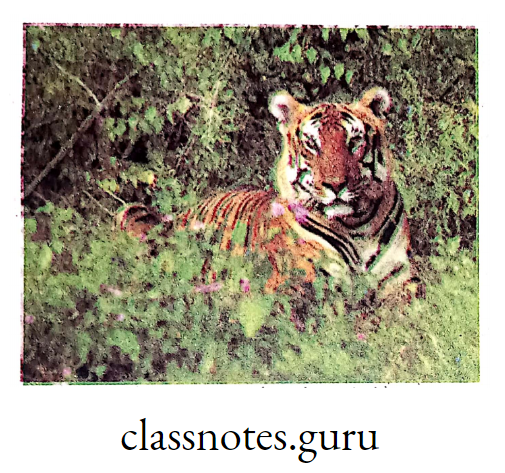
Conservation efforts: In India, Project tiger was started in 1972 to conserve tiger in-situ.(in its natural habitat). At the beginning 0f 20th century, tiger population in India was approximately 40,000 whereas in 1972, it has become only 1827.
Project undertaken: Project tiger signifies national ban on tiger hunting and poaching. Project tiger was initiated by Mrs. Indira Gandhi in 1973.
Site of project/conservation: Today, there are 27 Project Tiger wildlife Reserves in India, covering an area of 37,761 km2.
Some important sites are—
Methods of conservation:
Present situation/status: As a result of this program of project tiger, the population of Bengal tiger had increased from about 1200 in 1973 to an impressive 3500+ in 2007. Presently (2015) the tiger population is approximately 2226 in India.
According to report of West Bengal Forest Department, 2013, the minimum identified tiger count in Sundarbans stands at 103.
Conservation of Rhinoceros, (One horned Rhino, Rhinoceros unicornis) :
Among terrestrial land mammals In Asia, Indian Rhinoceros is second in size only to the Asian elephant They have thick grey—brown skin and a single black horn, present in both male and female.
The horn is made of keratin protein (which is present in our hair and fingernails). Rhinoceros is listed as Vulnerable on the IUCN Red list. In 2015, a total of 3555 Indian Rhinoceros are estimated to live in the wild.
They are found in Duars, Assam, North East India. Indian Rhinos were hunted relentlessly; poaching of Rhinoceros horn was the most important reason.
Conservation efforts: Indian Government has taken major steps towards conservation of Rhinoceros especially with the help of WWF (World Wild Life Fund for Nature) and other NGOs.
Project undertaken: Rhinoceros project.
Site of project/conservation :
Methods of conservation :
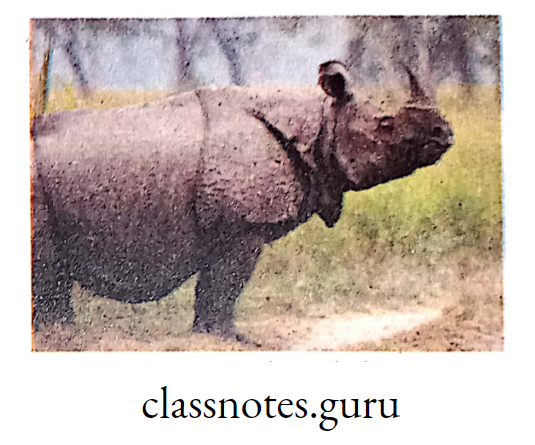
Present situation/status: In Kaziranga National Park 2048 Rhinos were estimated in 2009; in Jaldapara National Park, 108 in 2002. They must be properly preserved in order to increase their population, to protect them against extinction.
Conservation of Asiatic Lion (Panthera leo persica) :
(Also known as Indian lion or Persian lion.)
The Asiatic lion is a lion subspecies that exists as a single population in Gujrat state of India. It is listed as endangered by IUCN. Since 2010,the lion population in the Gir Forest National Park has steadily increased.
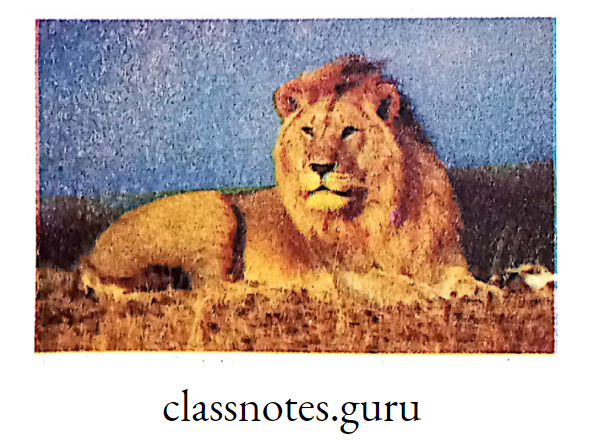
Conservation efforts: The Asiatic Lion Reintroduction Project is an initiative by j Government of India to provide safeguards to Asiatic lion from extinction in the wild by means of reintroduction.
The only single population in Gujrat faces threats of epidemics, natural disasters etc.
Project undertaken: Leo project to preserve Asiatic lion.
Environmental Conservation and Its Importance: Class 10 Science
Site of project/conservation :
Methods of conservation :
Present situation/status: As per census in May, 2015, the lion population was estimated as 523 individuals of which 109 were adult males, 201 adult females and 213 cubs.
Conservation of Crocodile (Crocodylus porosus) :
Crocodile population decreased and threatened by loss of riverine habitat, depletion of fish resources and entanglement in fishing nets. They are enlisted as critically endangered on IUCN Red list.
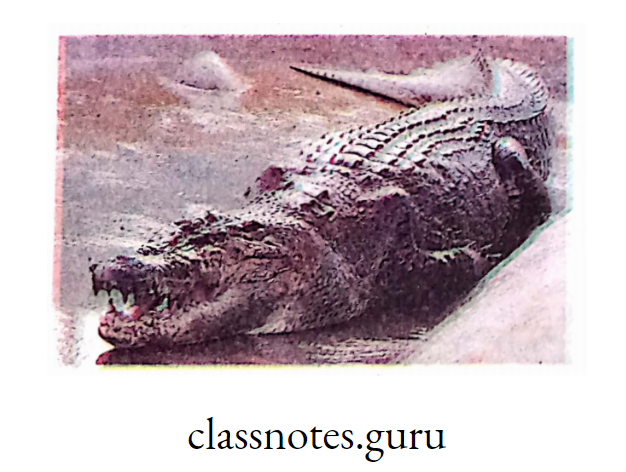
In 1974, a survey was made by Government of India on the three species of Crocodiles present in India. They are—
Conservation efforts: In response to declining crocodilian populations, Government of India launched a Crocodile Conservation Program in 1975.
Project undertaken: Crocodile project
Site of project/conservation :
Methods of conservation :
Collection of eggs with subsequent incubation and rearing of young until they become suitable in size to release in water—thus to boost reproductive output,
To locate, establish and manage a series of crocodile rehabilitation centres and sanctuaries in suitable habitats.
Present situation/status: 16 crocodile rehabilitation centres and 11 crocodile sanctuaries have been established. A total of 879 Gharials, 190 Estuarine Crocodiles and 493 Mugger are reared and released..
The greatest achivement is the reestablishment of viable Gharial breeding population.
Conservation of Red Panda (Ailurus fulgens) :
The red panda (also called, the lesser panda, the red bear-cat, red cat-bear) is a mammal native to eastern Himalayas. It has reddish brown fur, a long shaggy tail. It is slightly larger than a domestic cat.

It is arboreal, feeds mainly on bamboo leaves and shoots. It is active at night from dusk to dawn. It is classified “endangered’ by IUCN in 2008. They are found in Assam, Sikkim. The primary threat to red panda is uncontrolled killing or poaching, habitat destruction (due to deforestation).
Conservation efforts: India has 20 protected areas with known red panda population in Sikkim, Arunachal Pradesh. In West Bengal, there are Kanchanzonga National Park, Singalila
National Park, Namdapha National Park etc. for conservation of Red Panda.
Natural Resources and Their Conservation in Class 10 Science
Project undertaken: Red Panda Project (as mentioned above).
Site of project/conservation: In Sikkim, Arunachal Pradesh, West Bengal.
Methods of conservation :
Present situation/status: The population of red panda has increased considerably due to development of protected areas. They breed in captivity and then can be introduced to natural habitats.
All living organisms are made up of cells, which are the structural and functional unit of life. It is independent and self reproducing under favourable condition. Shapes and sizes ofcells vary.
A division of labour exists among the cells forming a multicellular plant or an animal body. “Omnis cellula e cellula”, means every cell is derived from a pre-existing cell.
Starting with a single fertilized egg cell (Zygote), the first division produces two cells; when these daughter cells divide, four cells are produced—thus number of cells increases called hyperplasia.
Class 10th Life Process
Interrelationship among chromosome, DMA and gene (What are hromosomes? How are they formed ?) :
Inside the nucleus of eukaryotic cell, there is thread-like intertwisted network called chromatin network. These are actually nucieoprotein threads consisting of DNA and protein.
DNA is a large biomolecule.
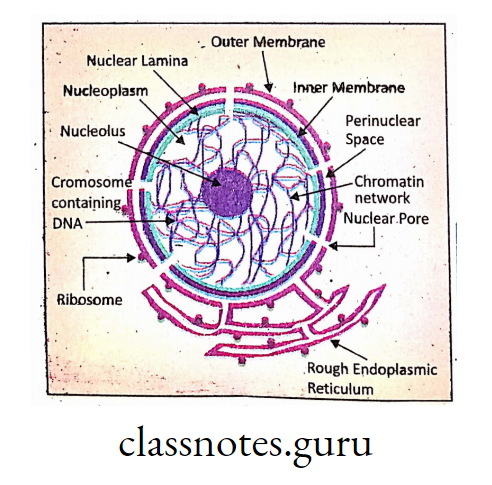
Inside the nucleus, DNA remains in partly open and partly folded condition to form the network, also known as chromatin reticulum. In the folded condition, DNA is looped tightly around proteins.
This folded structure of DNA is termed as chromosome.
Read and Learn More Class 10 Science
So the difference between chromatin and chromosome is that chromatin is unfolded, uncondensed, extended DNA while chromosomes are condensed DNA.
Chromosomes are condensed chromatin and chromatin is unfolded chromosome. Chromatin is present in a cell normally in Interphase, while the chromatin threads get condensed into chromosome during cell division.
Thus chromatin or chromatin reticulum and chromosomes are actually different folding condition of DNA molecule.
Continuity of Life: Class 10 Science Notes
Chromosome (Gr. Chroma-colour; soma—body) :
The intranuclear gene bearing, self dividing, fixed numbered, rod shaped structures which become dearly visible during metaphase and anaphase of cell division are known as
chromosomes that control all cellular activities.
Chromosome was first named by W. Waldeyer In 1888. During metaphase of the cell division the chromosomes are clearly visible and countable under compound microscope.
Class 10th Life Process
DNA double helix :
Gene (Where are genes located ?) :
Gene is the hereditary unit consisting of a particular sequence of bases in DNA and specifying the production of distinct enzymatic protein in the cell. Gene Is the functional unit of DNA.
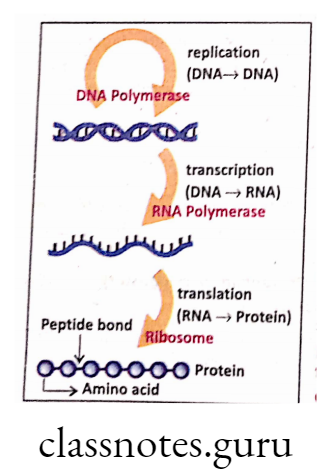
Genes are responsible for transmitting the hereditary traits from parents to offspring. Series of genes are present on each DNA.
How does gene act ?
Gene is a particular part of DNA that carries specific code. From DNA (gene) m RNA is synthesized by the process of Transcription. From m RNA specific protein Is synthesized by a process known as Translation.
This specific protein may be a structural protein or enzyme protein. The enzyme alters metabolic rate (profile) in the cell or organ of the body leading to the expression of different characters Is an organism.
Thus gene acts In the cell indirectly through the formation of enzymes.
Class 10th Life Process
Types of chromosomes: Functionally, chromosomes are of two types :
Autosome— The chromosomes that are responsible for controlling all the somatic characters of the body except sex determination are called autosomes.
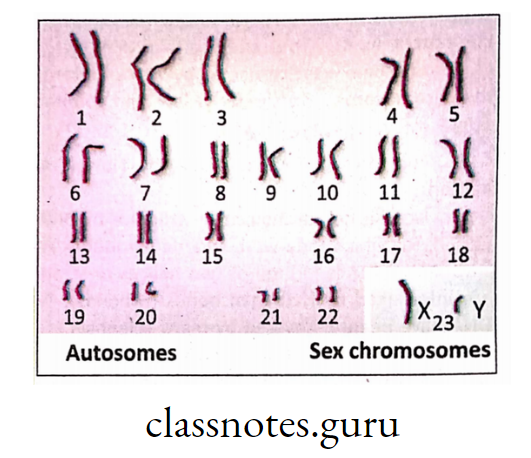
Example— in each human somatic cell,number of autosome is 22 pairs. Somatic character means height of the body, skin complexion, texture of hair etc.
Allosome (Sex chromosome)— The chromosomes that are primarily responsible for sex determination (maieness or femaleness) of an organism are called allosomes or sex chromosomes.
Example—In each somatic cell of man, number of allosome is 1 pair. In human male, two allosomes are named as X and Y whereas in human female, two allosomes are named as X and X.
So, in human female, two sex chromosomes are identical (one pair of X) but in human male, they are nonidentical—one X and one Y. X and Y differ in size and morphology.
Karyotype (type of chromosome) of human c? = 44A + XY
” ” ” ” ? = 44A + XX
Chromosome number :
The characteristic number of chromosomes present in each somatic cell of an organism which is constant for any particular species of plant or animal is known as chromosome number of that species.
e.g. chromosome number of man (2n = 46), Fruit fly (Drosophila nelanogaster) (2n = 8), Pea plant (Pisum sativum) (2n = 14), Honey Bee (Apis indica) (2n = 32).
Somatic cell (Body cell): Any cell of a multicellular organism other than the reproductive cell is called somatic cell. e.g. In human body all cells of liver, kidney, blood, brain etc. are called somatic cells.
Generally, somatic cell contains diploid (2n) number of chromosome.
Class 10th Life Process
Germ cell and germ mother cell: A cell that contains half the number of chromosomes (n) of a somatic cell and participates in fertilization of sexual reproduction is known as germ cell. e.g. sperm in male, ovum in female.
The mother cell from where the germ cell is formed is known as germ mother cell. e.g.Spermatogonia in testis, oogonia in ovary.
Diploid— When the nucleus of a cell contains two complete sets of chromosomes paternal set (from father) and one maternal set (from mother), the cell is called diploid.
It is represented by 2n. In man, diploid number of chromosome, 2n = 46, is found in the somatic cells like hepatocyte (in liver), WBC (in blood), neuron (in brain) etc.
Haploid — When a single set of unpaired chromosome is present in the nucleus of a cell,the cell is called haploid. It is represented by n. In man, haploid number of chromosome, n = 23, is found in the germ cell like sperm in testis, ovum in ovary.
Difference between haploid and diploid :
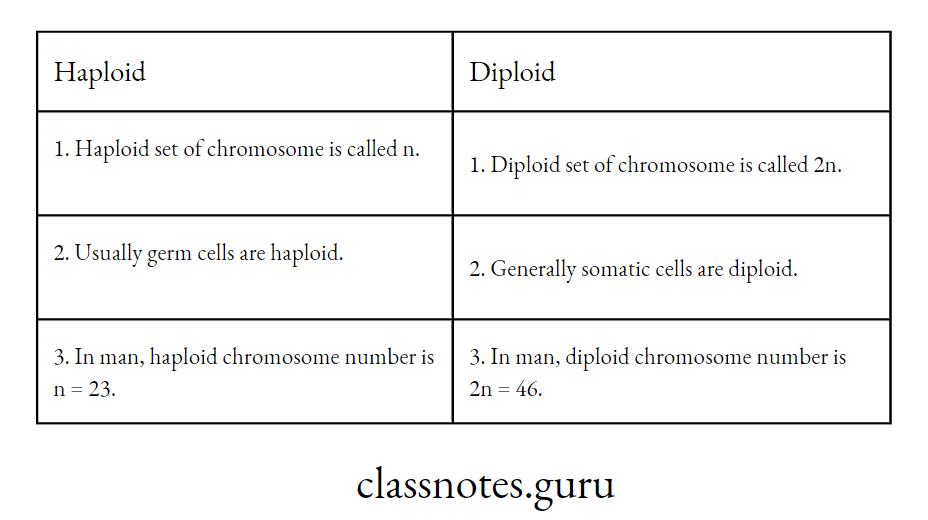
Structure of chromosome (what are the parts of a typical chromosome ?) :
Morphology of Eukaryotic rchromosome: Chromosome is microscopic threadlike structure.
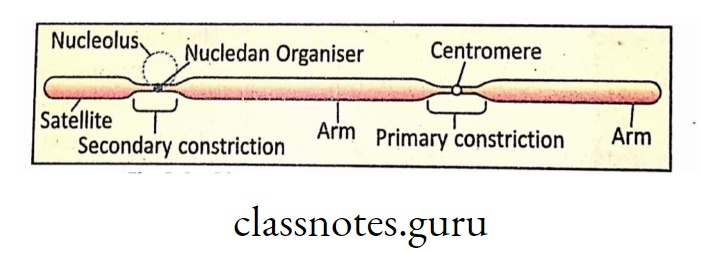
NCERT Class 10 Science Notes: Continuity of Life
Function of chromosome :

Chemical components of Chromosome :
The major chemical components of eukaryotic chromosomes are nucleic acids and proteins (basic proteins).
The nucleic acids are of two types i.e. about 45% Deoxyribonucleic acid (DIMA) and about 5% Ribonucleic acid (RNA).

DNA combines with histone, a simple basic protein, to form nucleoprotein which is conjugated protein They remain with the ratio 1:1. The RNA and acid protein vary in amount quite widely from one kind of cell to another.

Primarily chromosome contains 90% DNA + basic protein and 10% RNA + acid.protein
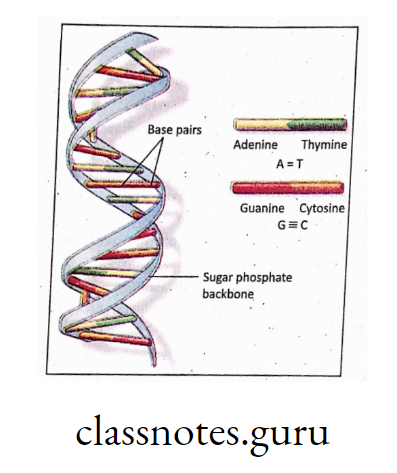
DNA:
RNA :
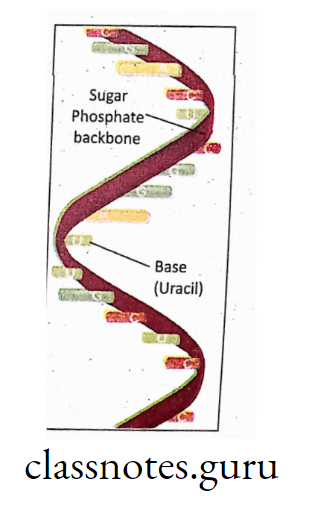
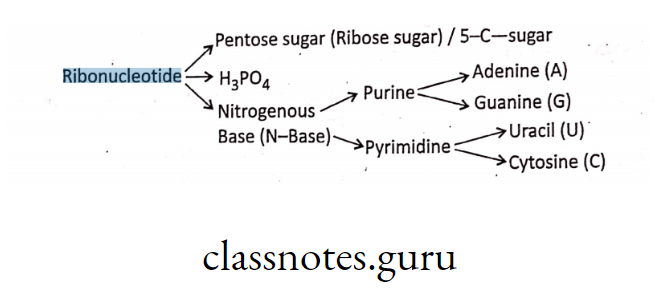
Types of RNA: Mainly RNA are of two types—Genetic RNA and Non-Genetic RNA.
Genetic RNA—Here RNA bears hereditary characters (genes) only e.g. Most plant virus and some animal virus like, influenza virus, HIV.
Non-Genetic RNA—Here DNA forms the genetic material. This type of RNA originates from the DNA of the cell and helps in protein synthesis.
They are of three types—
Protein: In addition to DNA and RNA, the chromatin (nucleoprotein) contains histone protein (basic protein) and non-histone protein (acid protein). The alkaline protein,histone, mainly contains amino acids like arginine, lysine, histidine, whereas, the acidic protein generally possess amino acids like tryptophan and tyrosine.
Class 10th Life Process
Nucleoside and Nucleotide :
Nucleoside—It is made up of pentose sugar molecule and a N2 base (without H3P04).
Nucleotide—It is made up of a pentose sugar molecule, N2 base and phosphate group.
Difference between DNA and RNA :
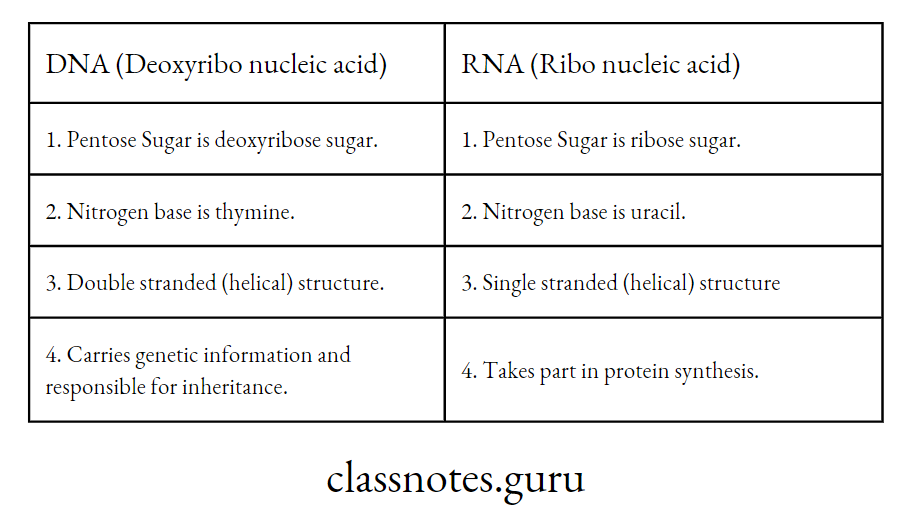
Continuity of Life: Reproduction in Living Organisms
Euchromatin and Heterochromatin :
Euchromatin—The uncoiled part of chromosome, which is genetically active in interphase is called euchromatin.

Heterochromatin—The densely coiled part of chromosome, which is genetically inactive in interphase is known as heterochromatin.

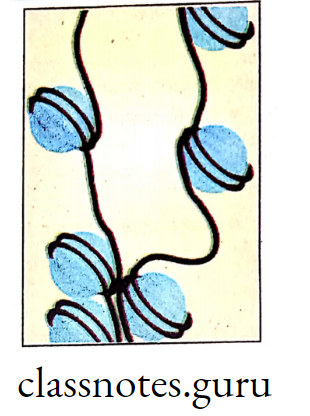
Difference between Euchromatin and Heterochromatin:
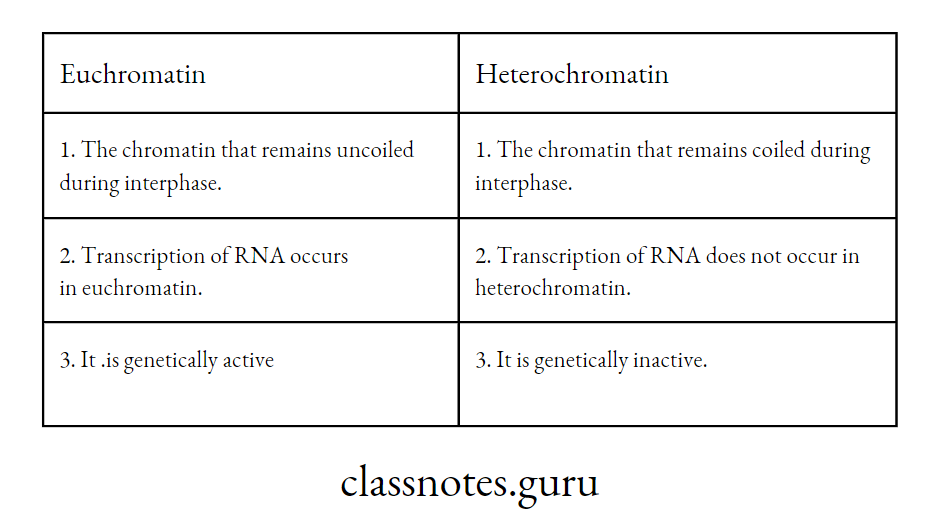
Cell organelles and structures involved in cel! division :
Cell is the smallest organised unit of living body which is self-reproducing under favourable condition.
Prokaryotic arid Eukaryotic cells:

Prokaryotic cell: The cell which lacks a nuclear envelope, nucleolus and well defined cytoplasmic organelles, such as endoplasmic reticulum, Golgi body, mitochondria, centriole, etc. is known as prokaryotic cell.
Examples—Bacteria (Azotobacter, Clostridium), Blue green algae [Nostoc, Anabdena), Mycoplasma.
Eukaryotic cell: The cell in which the nucleus has a definite nuclear membrane, nucleolus-ana well defined cytoplasmic organelles like endoplasmic reticulum, Golgi bodies, mitochondria, lysosomes, etc. is known as eukaryotic cell.
Examples— Cells of higher plants and animals.
Difference between Prokaryotic and Eukaryotic cell :
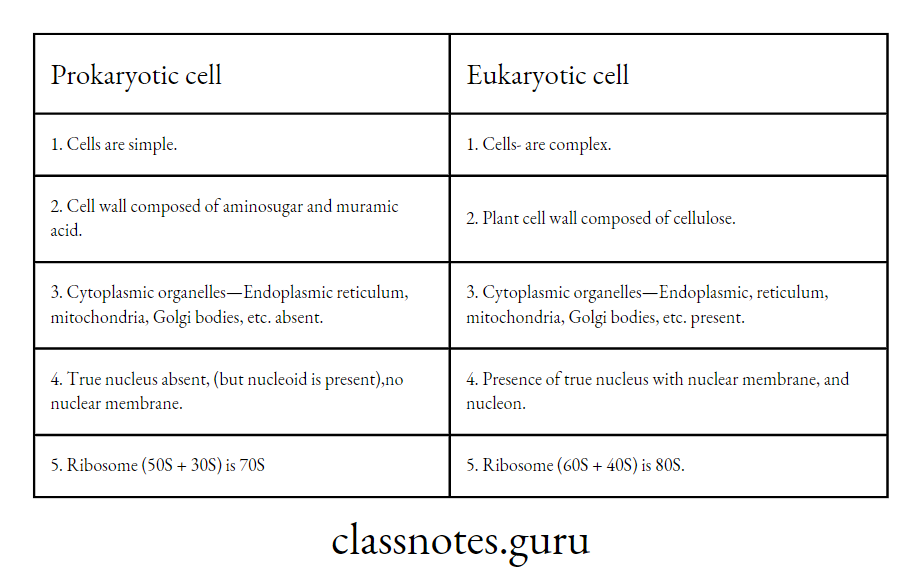
Role of cell organelles in cell division :
Some cell organelles play significant role in cell division as follows :
Nucleus—It is largest cell organelle where number of chromosomes are present in form of a chromatin network in interphase. During cell division, these chromosomes will be first divided into two chromatids and then separate chromosomes will be formed through different stages of karyokinesis. So, nucleus is the site of division of chromosomes.
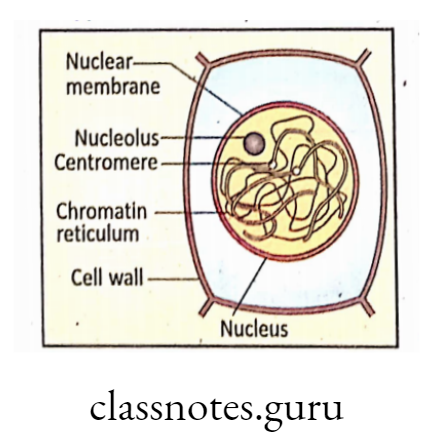
Centrosome and microtubule—Centrosome is present generally in animal cells and few exceptional lower plant cells. One centrosome consists of two centrioles,perpendicular to each other.
Centrioles are formed of nine triplet sets of microtubule (9 + 0 cart wheel model). Each microtubule is formed of tubulin protein.
During cell division, a diamond shaped structure is formed in the middle of the cell called Spindle. The spindle is made of many spindle fibres. In animal cell, these fibres are formed from centriole.
During cell division, two centrioles are separated and pushed apart to opposite poles of the cell by the elongation of spindle fibres in between them.
In animal cells, the spindle having centriole with aster at two poles is called or astral spindle or amphiastral spindle but in most plant cells, spindle withoutcentricasterspindle(astral rays) Is called as acentric spindle or anastral spindle.
So, in animal cell, spindle is formed from centriole whereas In plant cell the spindle is formed from cytoplasm and nucleoplasm.
Ribosome-This is the cell organelle responsible for protein synthesis. Huge amount Of protein is required for cell division-like tubulin for spindle fibre, enzyme protein etc. All these are synthesized by ribosome.
Mitochondria—There are Lot of metabolic functions during cell division, for which sufficient quantity of energy is required which is supplied by mitochondria.
Cell division and its significance :
The active process by which a matured mother call duplicates itself to give rise to two daughter ceils is called cell division.
Starting with a single fertilized egg cell (zygote), the first division produces two cells. These two daughter cells divide to produce four cells and so on. Thus starting from a single cell, four consecutive divisions will produce 24 = 16 cells, 10 division will produce 210 = 1024 cells.
It would require only 43 divisioin cycles to produce 5 trillion cells in the body, starting from a single cell. This increase in number of cells by cell division is called hyperplasia.
Significance of cell division :
Growth—By repeated cell division, number of cells in multicellular organism increases (hyperplasia) which results into overall growth and development of organs and body of the organism.
During embryonic growth, the first formed cell is zygote which undergoes repeated cell division to form an embryo and then into newborn.
Reproduction—Unicellular organism (like protozoa, yeast, bacteria etc.) reproduces by the process of cell divison. Mitosis helps in vegetative reproduction in plants and asexual reproduction in plants and animals.
On the other hand, meiosis helps in sexual reproduction both in plants and animals.
Repair—By cell division, old decaying dead cells are replaced by new cells. At every moment, millions of cells are dying in our body and millions of cells are forming by cell’ division to compensate the loss.
Healing of wound of an injured area is done by repeated cell division of adjoining living cells. Thus the injured area is repaired.
Class 10 Science Chapter: Continuity of Life and Reproduction
Types of cell division :
In animals and plants three types of cell divisions have been distinguished Mitosis and Meiosis.
Amitosis or Direct cell division :
The process of direct cell division in which the nucleus first constricts in the middle to divide into two nuclei and then the cell body undergoes changes without spindle formation and ultimately divides into two daughter cells is known as amitosis.
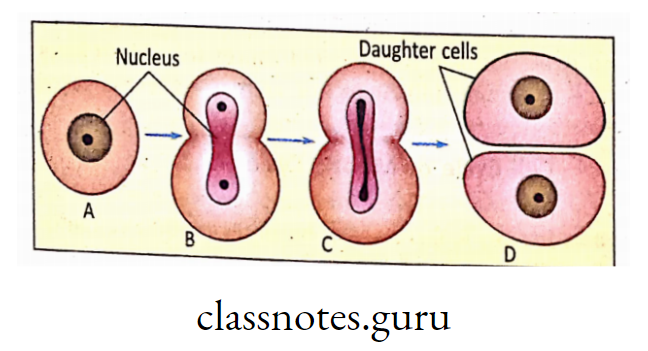
Occurrence :
Mitosis or Indirect cell division :
Mitosis is a process of equational and indirect cell division that occurs in the somatic cells of the body where a mother cell divides itself into two daughter ceils that are qualitatively and quantitatively similar to the original mother ceil.
‘Qualitatively means type of genes (genotype) and ‘quantitatively’ means number of chromosomes of daughter cells.
Occurrence: Mitosis occurs in the somatic cells of the multicellular eukaryotes.
In plants—It occurs in the growing parts like root, stem, leaves, flower buds, apical buds, embryonic buds and in cambium,
In animals—It takes place in all the somatic cells except nerve cells, sex cells and muscle cells.
Mitosis is called an equational division because, the two daughter cells (diploid or 2n) which are produced, remain identical to the diploid (2n) parent cell.
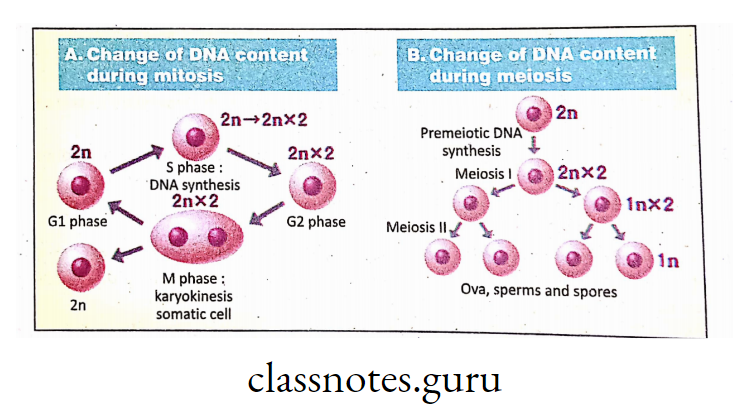
Meiosis or reduction division :
Meiosis is a process of reduction division that generally occurs in the germ mother cell where a diploid (2n) mother cell undergoes two consecutive divisions (Meiosis I & II) to produce four haploid (n) daughter cells.
Occurrence: In higher plants- Meiosis occurs in spore mother cells(2) Of anther and ovule forming four haploid spores(n). In Lower animals and plants – Meiosis takes place in zygote. In higher animals – Meiosis takes place during gemetogenesis i.e in gamete (sperm and ovum ) formation.
Cell Cycle or Mitotic Cycle :
Definition: The sequence of cyclical events and changes through which grows (by G1; S, G2, stages), becomes mother cell and finally divides to fo cells is known as cell cycle.
Phases of cell cycle: In continuously dividing cells, an individual cell pass cyclically through two main phases of cell division. Every cell cycle has a long resting phase called ‘Interphase’, followed by a short divisionary phase called ‘M’ phase.
Interphase is divided into three subphases—G1phase, S phase and G2 phase.
G1 phase—It is a phase when a cell prepares itself for division. Cell grows in size, synthesizes RNA and proteins. DNA content remains unchanged.
S phase or Synthetic phase—In this phase new DNA is synthesized on the mother DNA template. So, the amount of DNA is doubled. Histone protein is also synthesized in S phase. Each chromosome now consists of two chromatids joined at the centromere.
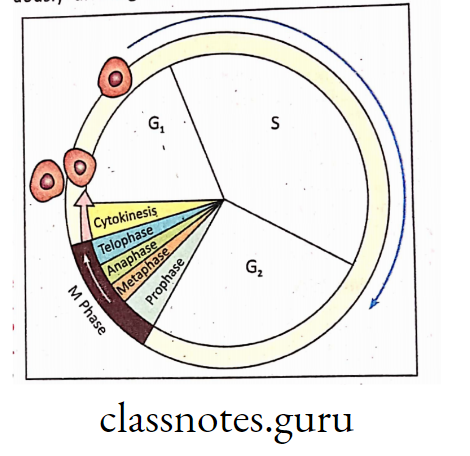
G2 phase—In this phase, cell growth, synthesis of RNA and protein continues.
Cell cycle time: The duration of cell cycle varies from one organism to another and from cell to cell. It ranges from few minutes to years. However, for fast dividing mammalian cells, the length of cell cycle is approximately 24 hours.
Significance of cell cycle :
Preparatory phase- During interphase of cell cycle (G1 S, G2) the cell gets itself prepared for cell division. There are many synthetic metabolic reactions inside the cell at this phase. This is wrongly (misnomer) called as ‘resting phase’. In fact, it is the most ‘active phase’ of cell cycle.
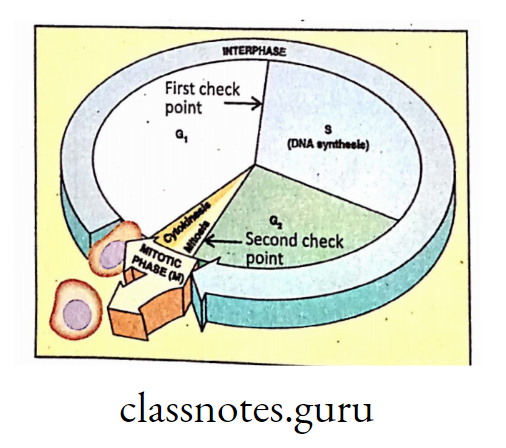
So, interphase is the ‘preparatory phase’ of cell cycle. In a pie chart of 360°, the interphase is nearly 320°-340n whereas the M-phase is approximately 20°-40°. Thus ‘preparation’ is much prolonged than that of ‘actual function’ (cell division).
Checkpoints in cell cycle—Many proteins (like cyclin etc.) and enzymes CDK (Cyclin Dependent Kinase) control cell cycle at different points called check points. First check point is in between G1 and S whereas second check point is in between G2 and M.
Thus the process of cell cycle and cell division is regulated, controlled and balanced.
Loss of control of cell cycle and formation of tumor—In our body at every moment large number of cells are dying called apoptosis. To compensate this loss, large number of cells are forming by cell cycle and cell division.
Thus a balance is maintained between ‘birth rate’ and ‘death rate’ of cell.
If the ‘check points’ in cell cycle do not work properly or if the control of cell cycle is lost,then the process of cell division and cell cycle becomes erroneous which may lead to formation of tumor. Tumor develops due to “uncontrolled cell division” (without differentiation) when a cell starts dividing at a vigorous rate.
Tumor is a type of unnatural swelling in any part of the body. This is richly supplied with blood vessels. Generally, tumor is of two major types—(a) Benign tumor, (b) Malignant tumor.
Benign tumor is noncancerous tumor. These cells do not spread over the body and remain restricted at a particular part of the body.
Malignant tumor is cancerous tumor that may result into cancer. Cancer cells (malignant cells) can spread from origin to different parts of the body called metastasis.
Mitosis :
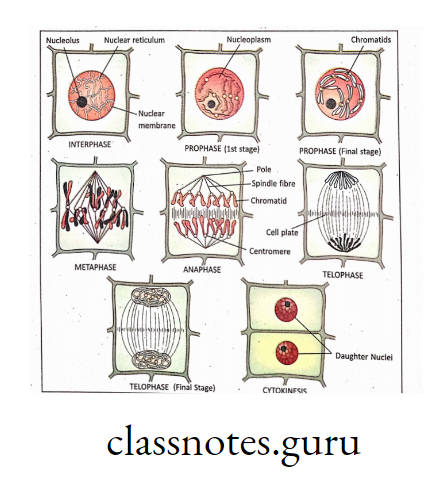
Definition: Mitosis is a process of equational and indirect cell division that occurs in the somatic ceils of the body where a mother cel! divides itself into two daughter cells that qualitatively and quantitatively similar to the. mother cell.
Characteristics of Mitosis :
The process of mitosis and its different stages :
The whole process of mitosis is completed in two phases— Nuclear division (karyokinesis) and cytoplasmic division (cytokinesis).
Karyokinesis—Definition: The process by which the nucleus of mother cell is divided into two daughter nuclei through Prophase, Metaphase, Anaphase and Telophase is known as Karyokinesis.
Prophase (Gr. Pro, First) :
The first stage of mitosis during which the chromosomes condense and become visible within the nucleus followed by the dissolution of the nuclear envelope is known as prophase.
In prophase, most dramatic changes take place both in the nucleus and in the cytoplasm.
It is the longest stage of mitosis.
Important features are as follows :

The aster, the centrioles and the spindle together make up the structure called mitotic apparatus or achromatic figure.
Metaphase (Gr. msta, between):
The stage of mitosis during which the chromosomes attach to the spindle fibres at the centromeric region and arrange in the equatorial plane of the cell is known as metaphase.
Important features are as follows :
Anaphase (Gr. ana, back):
The stage of mitosis during which the centromeres and daughter chromosomes separate and begin to move towards opposjte poles of the cell is known as anaphase.
Important features are as follows :
Sexual and Asexual Reproduction: Class 10 Science Notes
Telophase (Gr. teio, end):
The stage of mitosis during which the chromosomes uncoil and become surrounded by new nuclear envelope is known as telophase.
This stage begins at the end of the polar migration of the daughter chromosomes.
Important features are as follows :
Cytokinesis :
Definition: It is the process where cytoplasm of mother cell is divided into two daughter cells after Karyokinesis. Various cell organelles (mitochondria, golgi bodies) are also distributed
between two daughter cells.
If cytokinesis does not occur after karyokinesis, then the cell will be binucleate.
In plant cell: Commonest method of cytokinesis in plant cell is known as cell plate formation. Golgi bodies (dictyosome) forms small vesicles called phragmosome containing liquid cellulose, pectin etc.
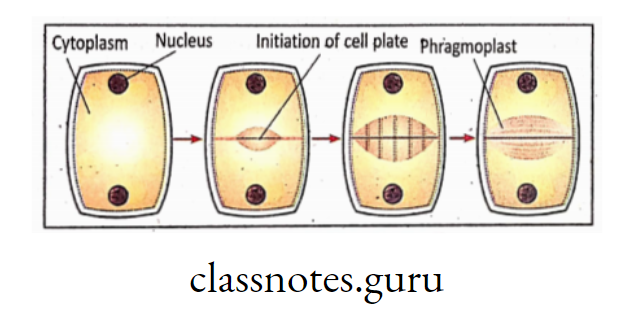
These vesicles line up at the middle of the cell and fusetogether to form a thin film of (phragmoplast) cell plate from the middle towards periphery of cell (centrifugal).
Gradually more cellulose, hemicellulose, pectin etc. are deposited on both sides of cell plate and a complete cell wall is formed separating the cytoplasm of two daughter cells.
In animal cell: Cytokinesis in animal cell occurs by the process of furrowing or cleavage or invagination. During this process, a cleavage furrow develops at the middle of the cell between two daughter nuclei.

The furrow or invagination gradually deepens towards the centre of the cell (centripetal) and fuse with each other. Thus the cytoplasm is divided into two equal halves.
Difference between Plant and Animal cytokinesis :
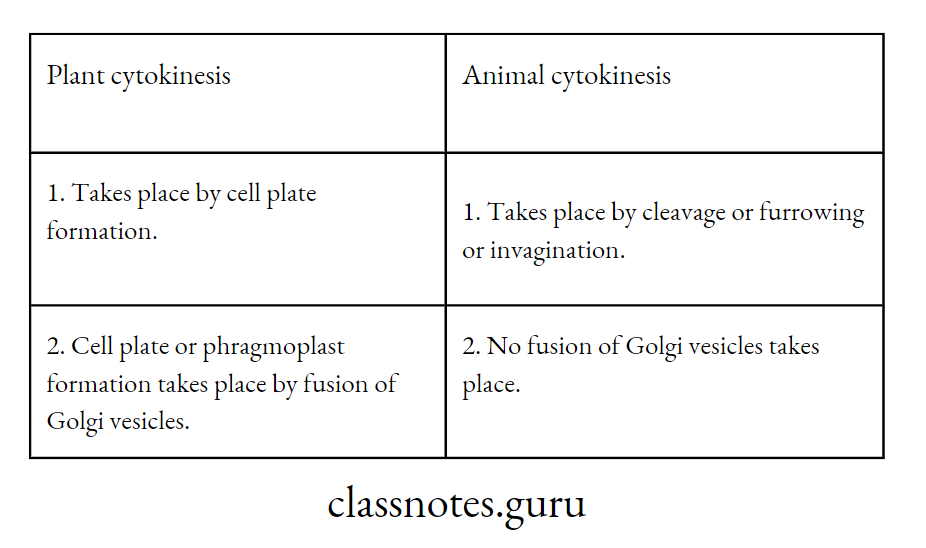
Difference between Mitosis of Plant cell and Animal cell :
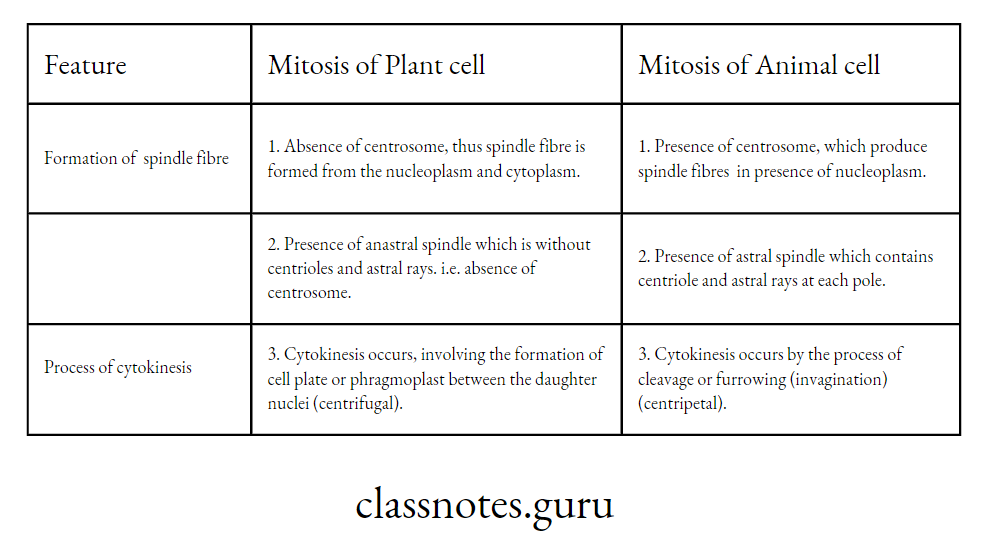
Dltiorence between Karyokinesis and Cytokinesis :

Difference between Amitosis and Mitosis :
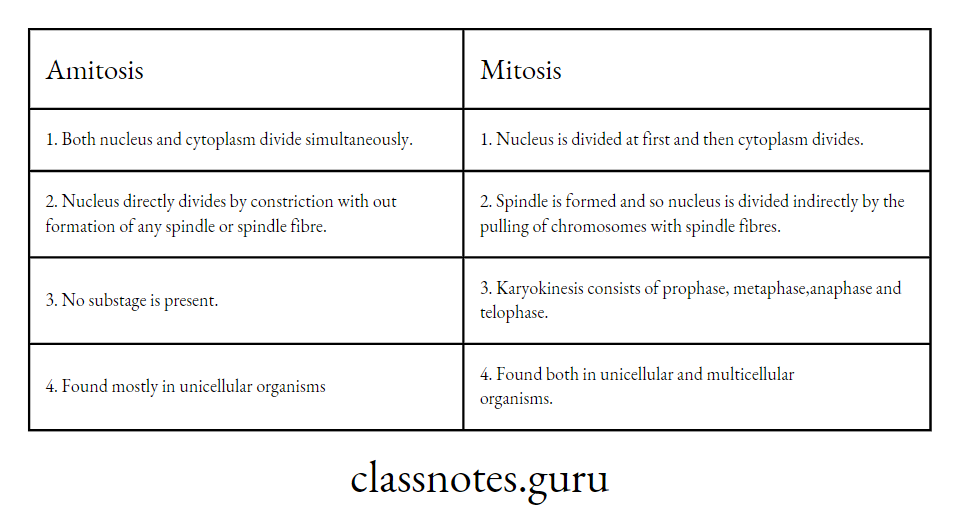
Heredity and Inheritance in Continuity of Life
Significance of Mitosis :
Growth: By repeated mitosis, number of genetically identical cells in multicellular organism increases (known as hyperplasia ), which results into overall growth, development of organs and body of the organism.
In sexual reproduction, the first formed cell is zygote (2n) which undergoes constant mitosis to form an embryo and gradually a newborn.
Cell replacement: By the process of mitosis, old decaying dead cells new are replaced by cells. For example, the skin constantly renews, itself by shedding dead cells from the surface and generating new cells from the deeper layen In most areas of the body, the epidermis has four layers and their transition from inner layer to surface layer takes place as follows :
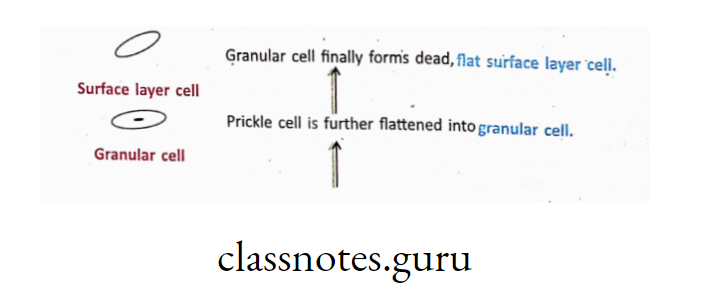
 Repair (Healing of wound): In any injured part of the body,repajr or heaiing of wound is done by repeated mitosis of the adjoining living cells.
Repair (Healing of wound): In any injured part of the body,repajr or heaiing of wound is done by repeated mitosis of the adjoining living cells.
Regeneration: Definition— It is the Process bY which some oreanisms replace or restore lost or amputated body parts by mitosis. Regeneration, of limbs occurs widely in the animals of phylum Arthropods (eg. legs in Crustacea).
This may happen naturally during moulting or removal of leg by any injury or autotomy (Spontaneous loss of body parts). Some Star fish (Phylum—Echinodermata) can reproduce asexually by breaking an arm.

Starfish is well known for its power of regeneration of lost part of the body. Moreover, a complete new animal can grow from a small fragment (e.g. Planaria). The loss of fragment from the body may be due to injury or autotomy (as in house lizard).

Reproduction: So many unicellular organisms reproduce by mitosis. Mitosis helps in vegetative reproduction in plants. Asexual reproduction in plants and animals also takes place by mitosis.
Meiosis:
Definition:The process 0f rec|U(;tion division by which a diploid (2n) germ mother cell divides twice to produce four haploid (n) daughter ceils is known as meiosis.
Characteristics of meiosis :
Occurrence: In higher animals, meiosis occurs in testis in male and ovary in female. In higher plants, meiosis occurs in pollen mother cell and egg mother cell.
Homologous chromosome :
The corresponding paternal and maternal chromosomes that are identical in structure,size (morphology), bearing same genes or their alleles and pair with each other (synapsis) during meiosis are known as homologous chromosome.
Paternal chromosome (that is inherited from father through male gamete).
Maternal chromosome (that is inherited from mother through female gamete).
The genes present in the homologous chromosome are similar—but they may be same or may not be same.
Example—Let us consider gene for human skin complexion is white and black.
In this person, both the homologous chromosomes bear white gene for skin complexion. Both the genes indicate skin complexion (similar) and whiteness (same). So, here the genes are similar as well as same.
In this person, one of the homologous chromosome bears gene for blackness and other for whiteness. However, both the genes indicate skin complexion (similar) but black and white.
Thus, here both the genes are similar but not same. These contrasting genes in homologous chromosomes are called as allele.
Sister and Non-sister chromatid :
Sister chromatids are two identical copies of a single chromosome, that are interconnected by a common centromere.
A sister chromatid referes to either of the two identical copies (chromatids) formed by the division of a single chromosome. Sister chromatids are formed during ‘S’ phase of cell cycle and remain attached by centromere.
Two sister chromatids are separated by division of centromere during anaphase stage of mitosis and during anaphase II of meiosis.
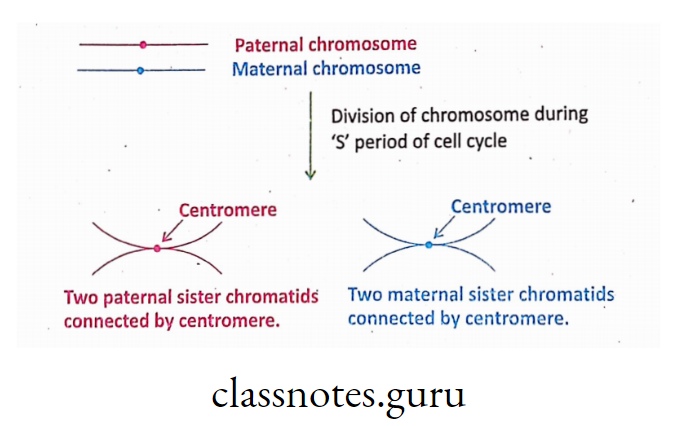
Nonsister chromatid refers to the corresponding paternal and maternal chromatid of the homologous pair.
So in a homologous pair of chromosome two paternal chromatids (produced from one paternal chromosome) are paternal sister chromatids whereas two maternal chromatids (produced from one maternal chromosome) are maternal sister chromatids.
However, any one paternal and any one maternal chromatid of the homologous pair called as nonsister chromatid.
Important features of Meiosis :
Separation of homologous chromosome : Homologous chromosomes (each having one pair of sister chromatids) are separated in Anaphase I of Meiosis I. Anaphase II of Meiosis II is, however, like mitotic anaphase.
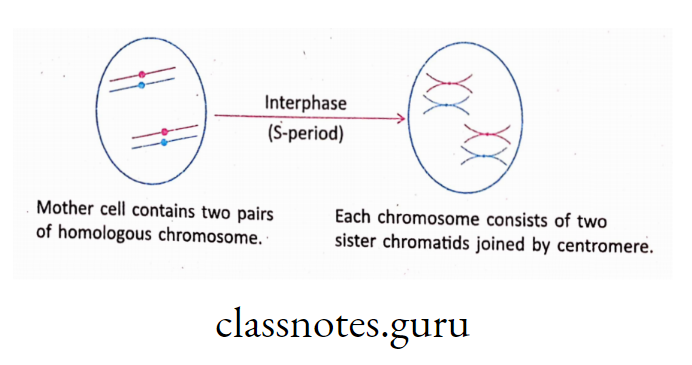
During Mitosis

In Metaphase of mitosis arrangement of chromatids in linear pattern on the’equatorial plate.
In Anaphase of mitosis, centomere of each pair of sister chromatid divides and the seprated chromatids move towards opposite poles.
During Meiosis I

In Metaphase I of meiosis,two pairs of chromatids of two homologous chromosomes (known as tetrad) are arranged on a particular point of equatorial plate of spindle.
In Anaphase ! of meiosis, centromere of sister chromatids does not divide and two chromauds move together towards one pole. Actual reducdon of chromosome number in meiosis occurs at this stage.
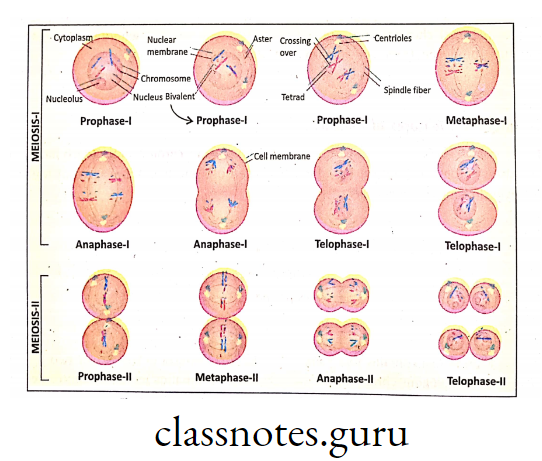
During Meiosis II
In Metaphase II of meiosis, only one pair of chromatid is arranged on a particular point on equatorial plate of spindle.
In Anaphase II of meiosis, centromere of sister chromatids divides and two chromatids are separated. This is exactly like mitosis
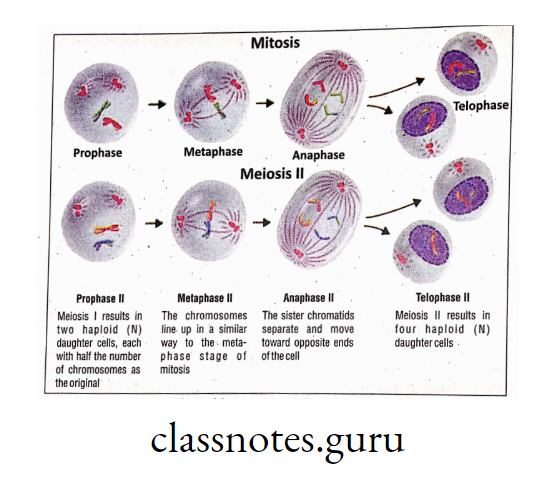
NCERT Class 10 Science: Continuity of Life and its Mechanisms
Reduction in chromosome number: During meiosis, chromosome number of mother cell is reduced to half in daughter cells. So, one diploid (2n) mother cell produces four haploid (n) daughter cells.

Crossing Over: Definition- During pachytene stage of prophase I Of meiosis , nonsister chromatids of the homologous chromosome may exchange their segments (genetic material) reciprocally known as crossing over.
So, there may be mixture of paternal and maternal genes that will result into a new genotype which is partly paternal and partly maternal. However, crossing over is a matter of chance that may occur or may not.
Crossing over of nonsister chromatids results into an ‘X’ like structure called chiasma. Hence crossing over is the cause and chiasma is the effect.
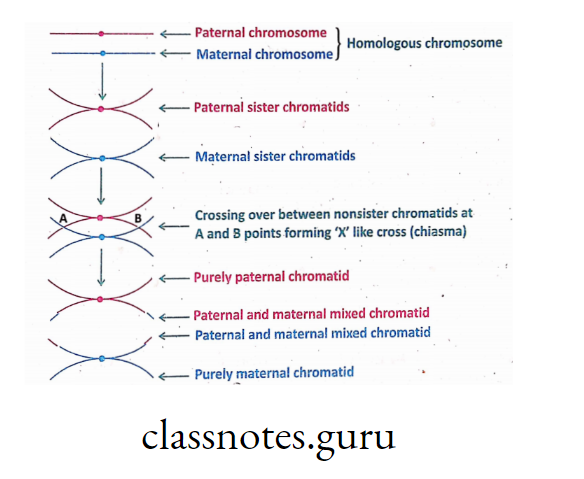
Significance of Meiosis :
Maintenance of constant chromosome number of a species—By the process of meiosis, chromosome number of higher plants and animals (who reproduce sexually) is maintained constant.

From the above chart, it is clear that during meiosis, chromosome number of mother cell (2n) is reduced to half in gametes (n). So, haploid sperm and ovum are formed.
During fertilization (syngamy), two haploid sperm and ovum unite together to form diploid zygote (2n). Hence in meiosis, chromosome number is reduced where as in fertilization, chromosome number is doubled.
That’s why, meiosis is regarded as a compensatory mechanism opposite to syngamy or fertilization and thus constant chrbmosome number of a species is maintained.
Production of variation in organisms—During meiosis, there may be crossing over between nonsister chromatids which results into “shuffling and reshuffling” of paternal and maternal genes. Thus new genotypic variation may occur in the organisms.
Formation of gametes—In higher plants and animals, meiosis takes place in diploid germ mother cells (2n) to produce haploid gametes (n). The process is known as gametogenesis.
Haploid male and female gametes fertilize to form diploid zygote.
Alternation of generation—Meiosis helps in alternation of generation as follows :
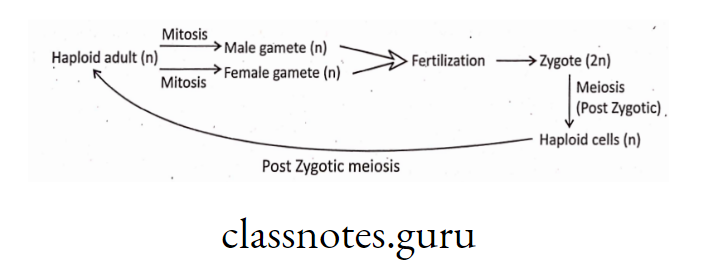
Continuity of Life: Reproductive Health and Process
Difference between mitosis and meiosis :
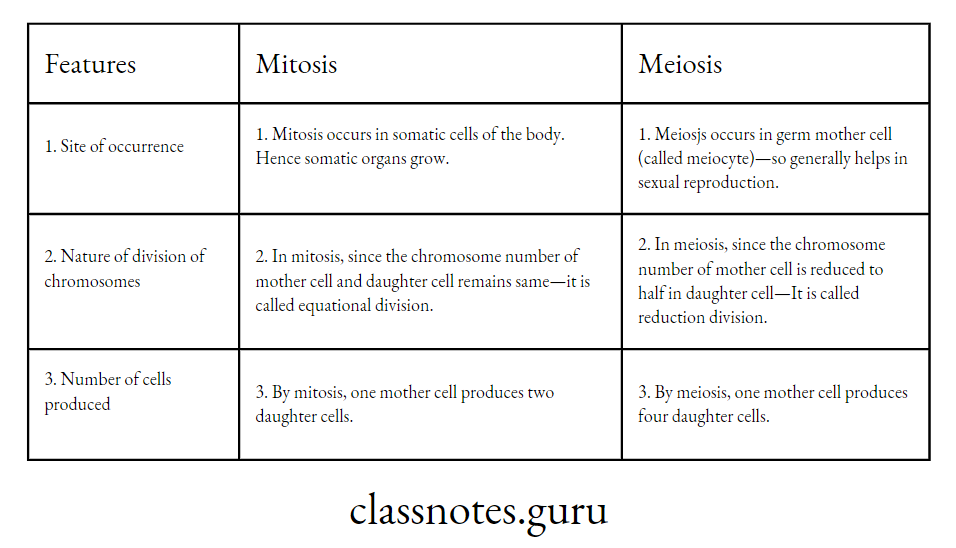
Concept of reproduction (Why is reproduction necessary for an organism?)
Reproduction is the production of a new generation of individuals of the same species. It is one of the most important fundamental characteristic of living organisms. By this process they can reproduce new individuals like ownself in order to maintain the continuity of the species and also to increase in number (multiplication).
Definition: Reproduction is the process of multiplication by which living parental organisms produce offsprings of its own kind by the transfer of genes.
Importance of reproduction :
Living organisms increase in number (multiplication) by reproduction.
By reproduction living organisms maintain the continuity of generation and race.
After a certain span of life, each organism will die. To compensate this loss, there must be new birth by reproduction. Thus death rate (Mortality) and birth rate (Natality) should be balanced.
The existence of living organisms on earth will be endangered if they are incapable of reproducing new ones.
For example, Dinosaurs are extinct from earth now. Why ? There are many theories about this. But what was the exact cause—cannot be concluded.
However, one thing is obvious—that due to some reason or other Dinosaurs failed to reproduce and the eggs did not hatch. Thus due to stoppage of reproduction, Dinosaurs were perished from earth.
Modes of reproduction :
General mode of reproduction in plants and animals is asexual and sexual.
Asexual reproduction: Definition—The process by which reproduction takes place without fusion of gametes is called asexual reproduction. Asexual reproduction occurs in both plants arid animals.
For Example—In animals, asexual reproduction in hydra by budding; in plants, spore formation in moss, fern, fungi etc.
Characteristics and Importance :
Sexual reproduction: Definition—The process of reproduction which involves the fusion of unicellular units called gametes to develop genetically distinct offsprings is called sexual reproduction. Sexual reproduction occurs in both plants and animals.
For Example—Pollination and fertilization in higher plants; in animals, fertilization of sperm with ovum to form zygote.
Characteristics and Importance :
Vegetative Propagation (How do plants reffroduce by vegetative means?):
The reproduction by ‘which daughter plants are produced simply from the vegetative parts of a plant is called vegetative reproduction. Higher plant body consists of vegetative parts (root, stem and leaf) and reproductive parts (flowers, fruits and seeds).
Characteristics and Importance :
Types of vegetative reproduction :
Vegetative reproduction (vegetative propagation) or multiplication is basically a special type of asexual reproduction in plants. This may be natural or artificial.
Natural methods of Vegetative Reproduction :
It is the process of reproduction which occurs naturally by any vegetative (somatic) part of the plant body. Generally, vegetative part means root, stem and leaves in higher plants.
Some common examples are as follows—
Root: In sweet potato (Ipomea batatus), adventitious buds are
M produced from the root of the plant, that develop into new plant.
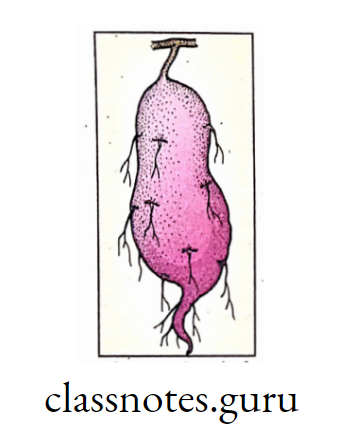
Stem: Water hyacinth (Eichhornia) is floating aquatic plant. It develops a short, thick, spongy, horizontal branch from the axil of leaves,known as offset. It is, in (Ipomea). fact, a small internode in between two consecutive nodes.

Each node bears a rosette of leaves above and a tuft of roots below. The offset often breaks away from the mother plant and develops into a separate daughter plant.
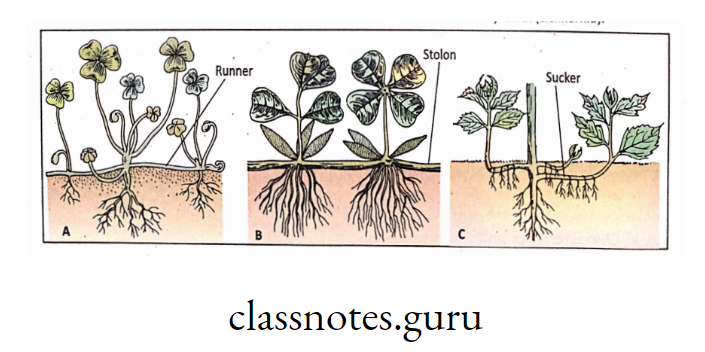
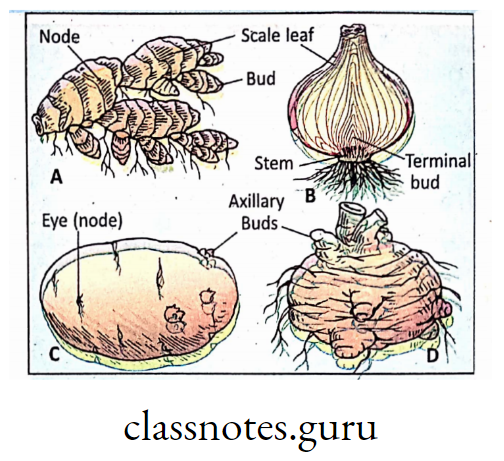
Reproduction and Continuity of Life: NCERT Class 10 Explanation
Leaf: In Bryophyllum, a series of adventitious buds’are formed on leaf margins, which usually develop into new plants.
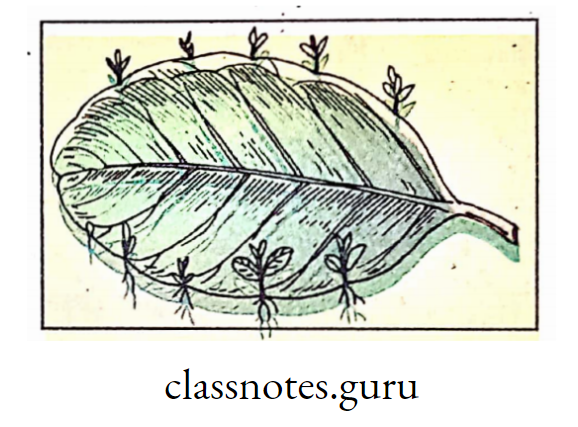
‘Artificial method of Vegetative Reproduction’:
It is the pruuÿss of reproducuon (Vegetative Propagation) where a plant part is removed from the mother plant and placed in a suitable environment so that it can grow into a whole new plant, which is genetically identical to the parent.
This process is usually practised for the reproduction (propagation) of those plants which produce either very few seeds or do not produce any viable seeds. There are various artificial methods like Cutting, Grafting, Layering, Gootee (Air layering) etc.
Cutting: It is commonest artificial method of vegetative reproduction practised by man. mature stem of a plant bearing nodes and lateral buds can be cut and planted in moist soil.

After few days new roots develop from underground cut end and the cutting becomes a new plant. Root formation at underground cut end is stimulated by treatment Of plant hormone like IAA,IBA,NAA etc.
Now-a-days, many plants are raised by stem cutting like sugarcane, banana/pineapple, orange, grapes, rose,chinarose etc.
Gafting : Definition-It is the process of artificial method vegetative reproduction where the cutting of desired variety of plant (called scion or graft) is transplated on another rooted plant (called stock).
After few days the cut ends of two different plants of the same species) fuse by their tissues to become a single, unit. The fused unit starts forming shoots and grows into a new plant, e.g. mango, litchi, guava etc. In these plants, grafting is done for preservation of original characters of the scion parent.
Micropropagation: The production of large number of individual plantlets (genetically identical to parent) from a small piece of parental plant tissue, cultured in proper nutrient medium is called micropropagation.
Basically, micropropagation is the propagation of plants by tissue culture. This process is used for propagating plants like Orchids, Dahlia, Chrysanthemum etc.

Outline of the process :
Significance (Importance/Application) :
Alternation of generation : In the life cycle of some plants and animals, the phenomenon of alternation of two generations asexual or sporophytic or diploid and sexual or gametophytic or haploid,in a cyclic manner is called alternation of generation e.g. Fern, Moss etc.
Example of alternation of generation from Fern :
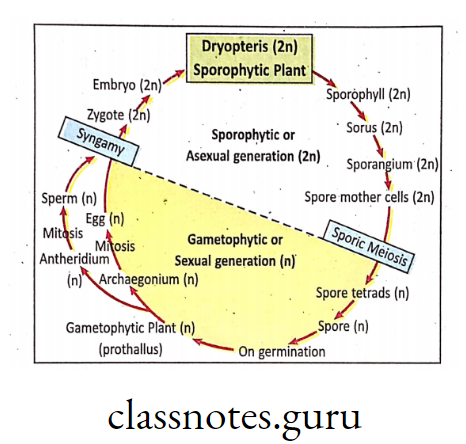
Flower Is sexual reproductive structure 6f plants, especially in angiosperms. It is modified reproductive shoot and helps in sexual reproduction of plants. It consists of thalamus on which four sets of floral whorls are arranged in orderly manner.
The arrangement of flower on the floral axis is called Inflorescence or Anthotaxy.
Different parts of a typical flower :
A typical flower consists of a thalamus with four sets of floral leaves—Calyx, Corolla, Androecium and Gynoecium that are successively arranged.
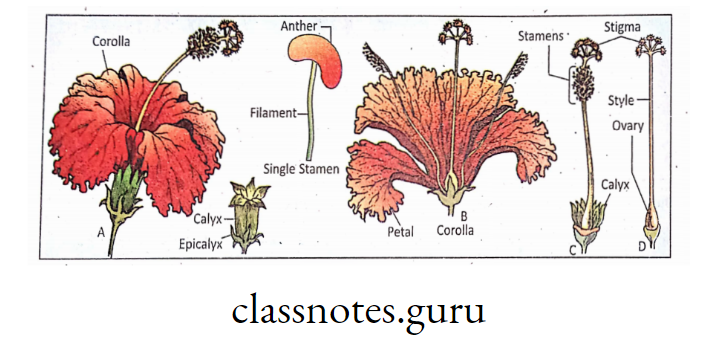
Calyx: It is the outermost part of the flower and consists of some green leaf like structures known as sepals.
Function—Sepals protect the inner parts of flower in bud condition from heat, cold, rain etc.
Corolla: It is the second inner floral set, consisting of several leafy structures called petals. Generally they have bright colour or beautiful smell or both. Function-Petals protect the inner Androecium and Gynoecium.
Androecium: It is the third inner floral whorl consisting of a number of male reproductive organs known as stamens. Each stamen consists of a slender stalk called filament and a saclike structure at the top of the filament, known as anther (pollen sac).
The pollen sac produces pollen grains that are commonly yellowish in colour.
Function— Anther of stamen produces male reproductive units of flower called pollen grains.
Gynoecium or Pistil: It is the innermost whorl of the flower. It consists of one or more female reproductive part known as carpel. Each carpel consists of a receptive terminal portion called stigma, a long slender stalk. called style and a swollen basal portion called ovary.
Ovary contains one or more ovule and each ovule contains an egg cell.
Function- The egg cell of ovule is the female gemete that helps in fertilization. After fertilization, overy is modifies into fruit and ovule is modifies into seed.
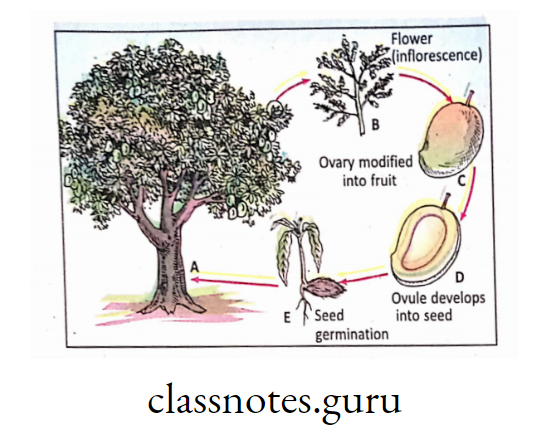
Pollination:
The flowers mature in due course of time when matured pollen grains are transferred from the anther to stigma. Fertilization does not occur until pollination takes place.
Definition
The transfer Of Pollen grains from the anther of the stamen to the stigma of carpel of the same flower or of a different flower of same species is called pollination.
A Types of Pollination :
Pollination is of two types- Self pollination or Autogamy and Cross-pollination or Allogamy.
Self-pollination of Autogamy: When the pollen grain is transferred from anther of one flower to the stigma of the same flower, it is called self-pollination. Self-pollination generally occurs in bisexual flower, e.g. Pea, Soyabean, Orchid, Sunflower, Wheat, Rice, Barley, Oats,Tomato, Potato etc.
Cross-pollination or Allogamy: When the pollen grain is transferred from anther of one flower to the stigma of another flower of a different plant (but of same species), it is called cross-pollination. Unisexual flowers are always cross-pollinated. Some common plants performing cross-pollination are apple, grapes, maize, orchid, guava etc.
Merits and demerits of self and cross-pollination:
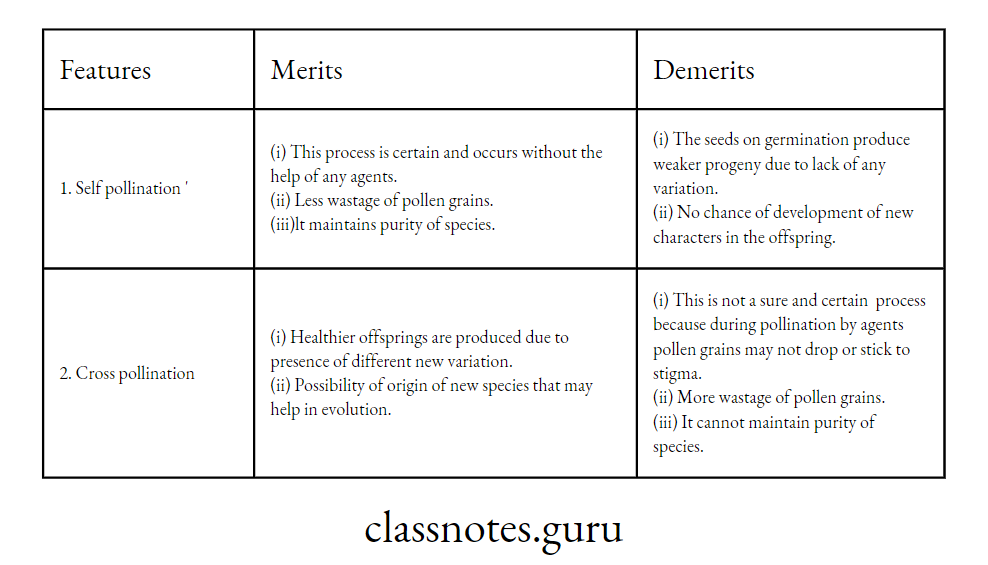
Continuity of Life: Key Concepts, Terms, and Definitions in Class 10 Science
Various agents of pollination with common example :
Agents of- pollination. The process of pollination requires agents (pollinators) that carry or move the pollen grains from the anther to stigma. Some common agents of pollination in flowers are—
Fertilization and Development of a Mew plant : (How is a new plant produced ?)
The process of union between two dissimilar haploid gametes (anisogametes) is known as fertilization or syngamy,
During fertilization male gamete (n) and female gamete (n) unite together to form diploid zygote (2n). The zygote undergoes repeated mitosis to form an embryo (2n) which gives birth to the adult plant after germination.
The sequence of events can be explained as follows :
Polination-ln this process pollen grains are transferred from anther to stigma. There is a method of selection by which the stigma selects a particular pollen grain of matchingtype.
Formation of male germ cell—Pollen grain produces haploid male gamete which passes down the style through the pollen tube. Male gamete enters the ovule in the ovary.
Formation of Female gamete—Haploid female gamete or egg is formed in the embryo sac of the ovule.
Fertilization –The haploid male gamete (n) unites with the haploid egg (n) in the embryo sac of ovule to form a diploid zygote (2n).
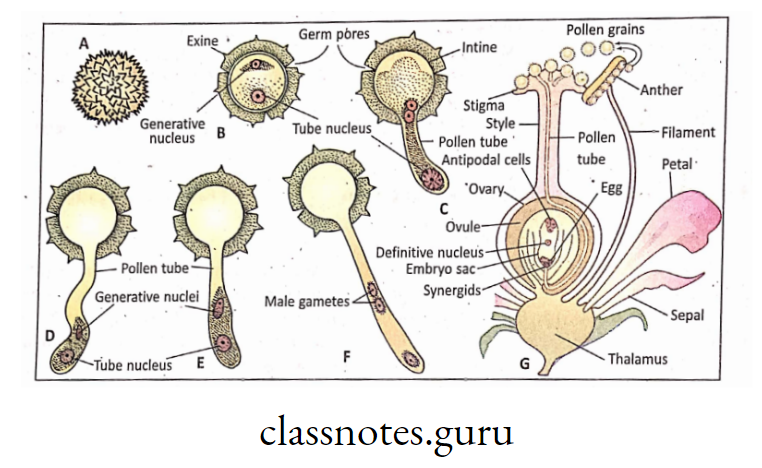
Division of zygote to form embryo—The diploid zygote undergoes repeated mitotic division to form diploid embryo within the ovule.
Formation of fruit and seed—After fertilization inner ovule is gradually modified into seed and outer ovary is modified into fruit.

Seed contains the futyre plant—Seed contains the embryo which is the future plant. Under appropriate conditions (in presence of proper quantity of water, air and sunlight), the embryo germinates into a seedling which grows into complete plant in course of time.
Concept of growth (How does an organism grow ?) *
Growth Is a fundamental characteristic of all living organisms. This process Is complex In nature and regulated by protoplasm. Growth Is expressed by a permanent irreversible increase in length and volume.
A dry cork when soaked In water Increase In volume due to absorption of v/ater but it returns to original state on dehydration. Hence, the volume of cork v/as Increased temporarily which should not be referred to as growth.
Moreover, the dry weight of cork has never been changed. Here the cork Is formed of dead cells and the increase in volume is not controlled by protoplasm. In facts, most conspicuous sign of growth is an increase in dry weight accompanied by an increase in size and volume of the living o ganism.
Growth is an outcome of some metabolic processes, some of which are anabolic and some are catabolic In nature. When anabolism exceeds over catabolism, then growth takes place. Once growth occurs in a living body, it can not be reversed.
Development:Definition: Development can be defined as the increase in series of progressive, nonrepetitlve, organized changes complexity) through cellular differentiation and growth by which multicellular living organism is formed from the zygote.
Phases of growth :
The life of a multicellular organism starts from zygote (2n) which is formed bythe union of haploid male and female gamete.
The zygote grows through three distinct phases as follows:
Cell division—It is the process of increase in cell number (hyperplasia) as a result of repeated mitotic cell division. In plant body, meristematic cel! divide mitotically to form innumberable daughter cells.
In animals, zygote divides to produce bunch of cells (moruia) which form biastula, gastruia and other progressive embryonic stages.

Cell enlargement—It is the process by which daughter cells produced by mitosis enlarge both in length and volume (hypertrophy). This is mainly due to increased rate of anabolism than catabolism. The cells take in more water resulting into higher turgor pressure. At the same time,’various biomolecules are synthesized in the cells (anabolism) resulting into increase in dry weight of protoplasm
Cell differentiation—In this phase, full I grown cells are genetically differentiated to form various tissues that carry out diverse functions. So, during cell differentiation, a common type of cell becomes more specialized for a specific function.

In plants and animals, growth of the somatic organs is called somatic growth and that of reproductive organ is called reproductive growth. Somatic growth in plants is the growth of root,stem, leaf etc. whereas in animals, somatic growth is the growth of heart, lung, liver, muscle m and all other organs.
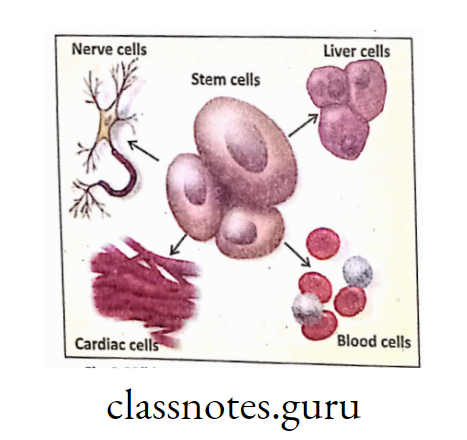
Reproductive growth in plants is the growth of floral bud, flower, fruit, seed animals reproductive growth signifies growth of testis in male and ovary in female
Several factors influence growth in both plants and animals—c.g. Internal factors {nutrition, enzyme, hormone, genes) and External factors (water, food, etc.)
Phase of human development :
There are five phases of human development—
Infancy—
Childhood —

Adolescence—
Often, puberty and adolescence are used synonymously. However, puberty refers to physical changes adolescence’s Period of psychological and social transition between childhood and adulthood. Puberty is the process of bodily changes by which adolescent reaches sexual maturity.
Heredity and Inheritance in Continuity of Life
Adulthood—
Senescence (Late adulthood)—
Detection of change in environment and mechanism of response in plants :
Living organisms exist in a changing environment. Some changes are favourable and advantageous, while others are unfavourable or harmful. Sensitivity is the ability of organisms to detect change and respond to it.
Changes which are detected and lead to responses are referred to as stimuli. All living organisms respond to stimuli. Stimulus is a kind of energy.
Definition: Any physicochemical change of energy in the surrounding environment of an organism that can generate an impulse or response in the organism is called as stimulus.
The stimulus may be external like water, temperature, oxygen, air etc. Whereas internal stimulus; may be hormone, nutrient etc.
Any sort of change in direction or position found in living organisms is called movement. When movement is associated with change of place it is termed locomotion.
Read and Learn More Class 10 Science
Definition: The process by means of which the living organisms, spontaneously or due to the influence of stimuli, can move any part of their body is called movement.
In higher plants, movement is a common phenomenon. However, some exceptional plants like chlamydomonas, volvox can very slowly swim in water and are not fixed at a particular place.
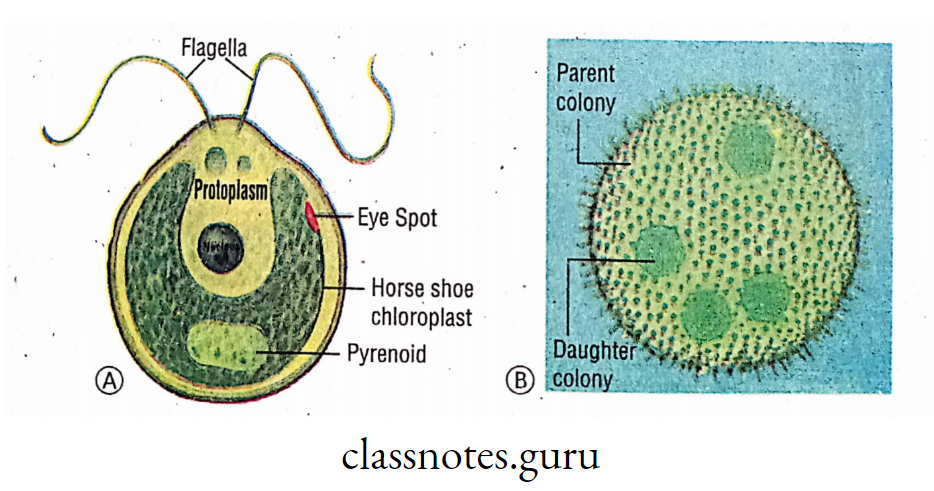
When the whole body of an organism is shifted from one place to other place, it is called locomotion. This is generally found in animals. However, Sponge, Coral, Ascidia etc. are fixed at substratum—they exhibit little movement but. no locomotion. These animals are called as sedentary or sessile animals.
Control and Co-ordination in Living Organisms: Class 10 Science Notes
Relation between movement and locomotion :
In fact, the basic relation between movement and locomotion is that movement of locomotory organs result into locomotion e.g. movement of wings in birds result into flight.
As most plants are anchored organisms, plant responses are less evident than those of animals. Rapid movements by plants are extremely rare. Generally, plant responses are slow growth movements or turgor movements.
Plant sensitivity and response in Mimosa and Desmodium: Both the plants are extremely sensitive. When the leaflets or Mimosa puriivC (touch-me-not/Lajjabati) is touched, they droop down—this is commonly known as seismonastic movement.
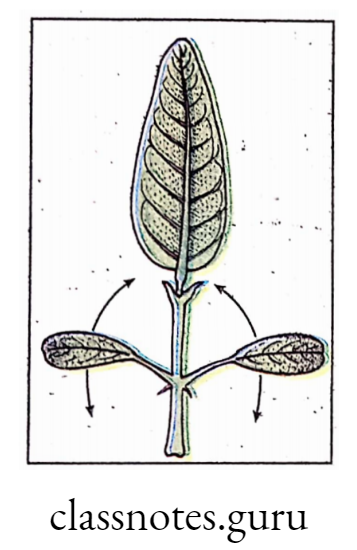
In fact,below the leaf stalk there is a swollen structure called pulvinus. In the pulvinus, there are highly sensitive motor cells. Touch causes vibration when water droplets ooze out of the pulvinus into intercellular spaces resulting into decrease in turgor pressure. So the leaflets droop down.
In Desmodium gyrans (Indian Telegraph plant), there is spontaneous movement of curvature caused by the reversible change in turgor pressure which is known as movement of/ variation.
Due to variation in turgor pressure the leaves move up and down rhythmically, as if the plant is dancing or sending out telegraph message. The leaves of the plant will “dance” only when there is light to absorb maximum solar energy for photosynthesis. In the evening, the leaves droop downwards
Question. How does a plant sense environmental changes ?
Like animals, plants sense changes in their surroundings and respond to them. Plants are able to detect and respond to light, gravity, changes in temperature, chemicals, moisture, infections, ; sound, touch etc.
Unlike animals, plants do not have nerves or muscles, so they can not move very fast. A plant usually responds to change by gradually altering its growth rate or direction of growth or turgor pressure.
Plants sensing direction of light : In the morning sunflower faces towards east and as the day progresses, it gradually -bends towards west.
Plants sensing duration of light and I temperature: Some plants bloom in summer (e.g. Mogra, Jasmine etc.) whereas some others bloom in winter (e.g. Dahlia; Chrysanthemum) which reflects that plants can respond to long day (LDP) and high temperature of summer or short day (SDP) and low temperature of winter.
Plants sensing contact with hard object: Some plants respond to contact (e.g. climbers like Pea plants, Passion flower) by curving their tendrils (thigmotropism).
Plants sensing magnetic field: Some plants can perceive magnetic fields using cryptochromes (a type of flavoproteins, sensitive to blue light).
Plants producing signalling molecules: Injured tomatoes can produce methyl-jasmonate having volatile odour. This chemical produces an alarm signal to alert the neighbouring plants who will produce chemicals to protect themselves.
Plants develop action potential: Plants can produce several proteins found in animal neuron like Acetylcholine esterase etc. Although plant body does not contain any neuron, they can be electrically excitable with action potential to environmental stimuli.
Electrical responses can cause the synthesis of numerous organic molecules.
Plants produce various biochemir.ais in response to stimuli: A plant’s reactive behaviour is mediated by phytochromes, kinins, hormones, antibiotics etc.
Plants can fight off pests: Plants have many strategies to fight off pests. For example, they can produce different toxins (phytoalexins) against pests after pest attack.
Photo-sensitivity in plants: Many plant organs contain photosensitive compounds (photo tropins, cryptochromes, phytochromes)—each of which reacts very specifically to certain
wavelength of light.
These light sensors tell the plant if it is day or night, how long the day is, how much light is available and from where the light comes. Shoots grow towards light (phototropism), root grow away from light (skototropism).
Plants sensing quality of light: Plants are also able to sense the quality of light and respond appropriately. For example, in low light conditions, plants produce more photosynthetic pigments. If the light is very bright of if the levels of harmful UV increase, plants produce more protective pigments that act as sunscreens.
Plants sensing gravitational pull: In the root cap, there is a special subset of cells, called statocytes which contain some specialized arnyloplast that are involved in perception of gravity by plants causing geotropism/gravitropism.
Hypersensitivity in Mimosa:-Pulvinus is a group of cells at the base of leaf or leaflet in certain plants, that rapidly loose water, brings about changes in the position of the leaves (eg. Minosa pudica).
Plant,sensing mechanical stimulus: Motor cell is a type of plant cell that enables the movement of plant parts, such as closing and opening of leaflets in response to intensity of touch or any other mechanical stimulus, or rapid closure of leaf in a carnivorous plant.
Motor cells accumulate 1C1- that causes osmotic uptake of water into the cell, making the cell turgid. Conversely, they can pump K+ out of the cell, which causes water to leave the cell and cell shrinks.
Hypersensitivity of carnivorous plants: Hair cells present on the surface of the leaves of Drosera, Dionaea etc. are sensitive to touch stimulus of insects and others and perform stepwise reactions to trap the insect.
Stimulus and response in plants: Transmission of stimulus in plants is a slow process (since they have no neurons). The time taken by the stimulus to reach to the point of response is called transmission time.
The interval between application of stimulus and production of visible response is called latent period.
Contribution of Acharya Jagadish Chandra Bose :
Sir Jagadish Chandra Bose, first modern Indian Scientist,physicist, discovered radio and microwave optics, invented the instrument Crescograph. He has lot of contribution in the field of Biophysics.

NCERT Class 10 Science Notes: Control and Co-ordination
Crescograph capable of magnifying the motion of plant tissues to about 10,000 times of their actual size. His significant discoveries were-

Plant movement:
Absence of locomotory organs in majority of plants :
Most of the plants are stationary. However Chiamydomonas, Volvox, etc. show locomotion. Higher plants can position of their organs.
Types of movements in plants: Three major types of movements shown by plants are—
Tactic movement/Taxism: Definition: It is the induced movement of locomotion where a plant can move freely or swim from one place to another by the influence of light, temperature, chemicals etc.

Phototactic movement/Phototaxism: The induced growth movement of locomotion in plants which is influenced by light is called phototaxism. eg. Swimming of chiamydomonas, Volvox towards light by flagellar movement.
Tropic movement/Tropism: Definition: It is the induced movement of curvature of any plant part or organ, which is influenced by direction of external stimulus either towards or away. ‘
Characteristics of tropic movement :
Types of tropic movement :
Phototropic movement/ phototropism/ Heliotropism: It is the induced growth movement of curvature of plant organ in response to the direction of light.
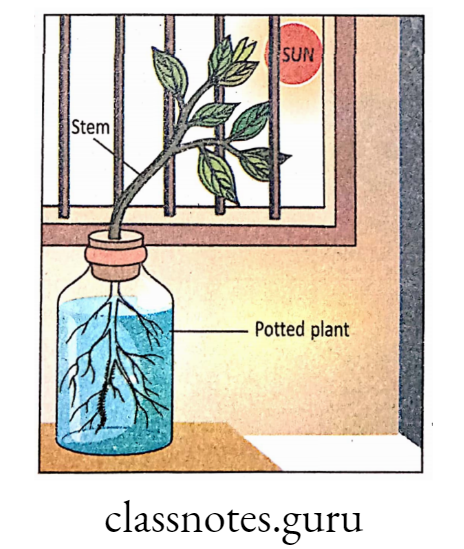
Examples :
Evidence— A potted plant kept near open window bends towards the source of light.
Experiment on phototropism :
Geotropic movement/Geotropism/Gravitropism: It is the induced growth movement of curvature of plant organs in response to the direction of force of gravity.
Examples: Root moves towards the force of gravity and is hence positively geotropic and shoot grows in the opposite direction and is hence negatively geotropic. Lateral roots and branches grow at right angle to the force of gravity and are called transversely geotropic or diageotropic.
Control and Co-ordination in Living Organisms: Nervous System and Hormones
Experiment on geotropism :
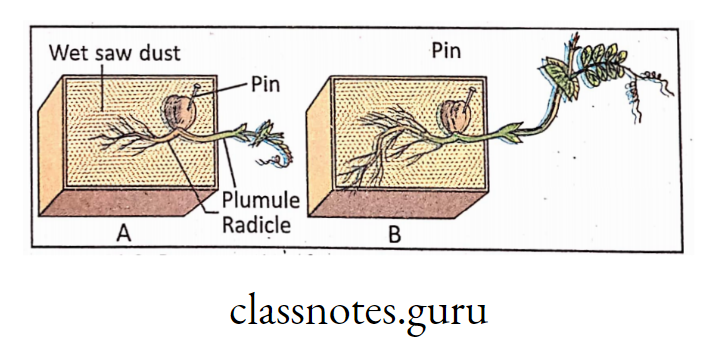
Hydrotropic movement/Hydrotropism: It is the induced growth movement of curvature of plant organs in response to the source of water.
Examples: The roots grow generally towards the source of water and shoot moves away from it. The former is positively hydrotropic, while the latter is said to be negatively hydrotropic.

Experiment on hydrotropism: This experiment has also been shown in the figure. The roots of seedlings are positively hydrotropic which was demonstrated by keeping them on moist hanging sieve container containing moist saw dust.
Observation: It has been observed that, the roots after passing through the holes of sieve, bend and spread on the moist outer surface of the container in search of water instead of going downwards.
Mastic movement/Mastism): Definition: It is the induced movement of curvature of any plant part or organ, which is influenced by intensity of external stimulus (but not by direction).
Characteristics of nastic movement :
Types of nastic movement :
Photonasty—The nastic movement induced by the change in light intensity is called photonasty.
Examples—
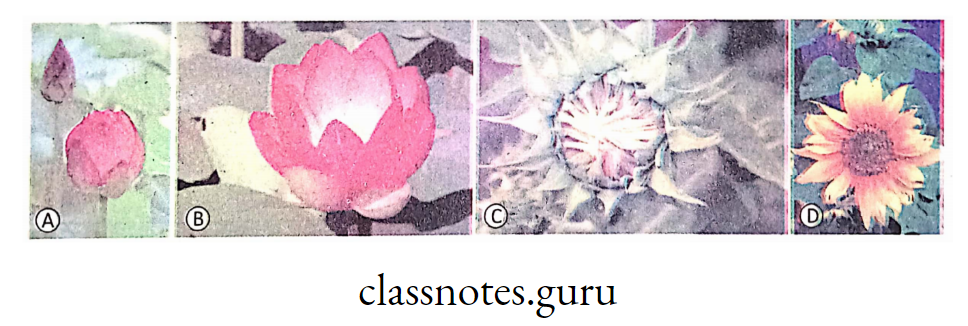
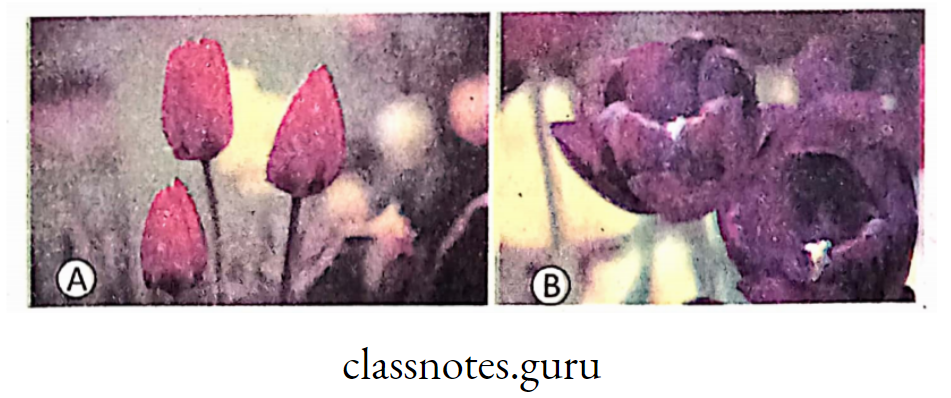
Thermonasty—The nastic movement induced by the variation in degree of temperature is called thermonasty.
Examples— Flowers like Tulip, Crocus, open at higher temperature but close with fall of temperature.
Chemonasty—The nastic movement induced by change in intensity’ of certain chemical substance is called chemonasty.
Examples— Movement of tendril away curving of tentacles of the insectivorous plantresponse to soluble proteins when placed atcentre of the leaf.
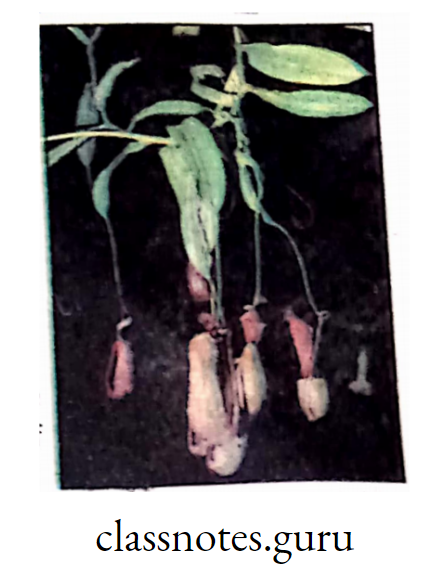
Seismonasty—The nastic movement in response to the intensity of mechanical stimuli such as contact with foreign body, pressure, shock, shaking, etc. is called seismonasty. The
extent of seismonastic movement depends upon the intensity of stimulus, the vigour and age of the plant.

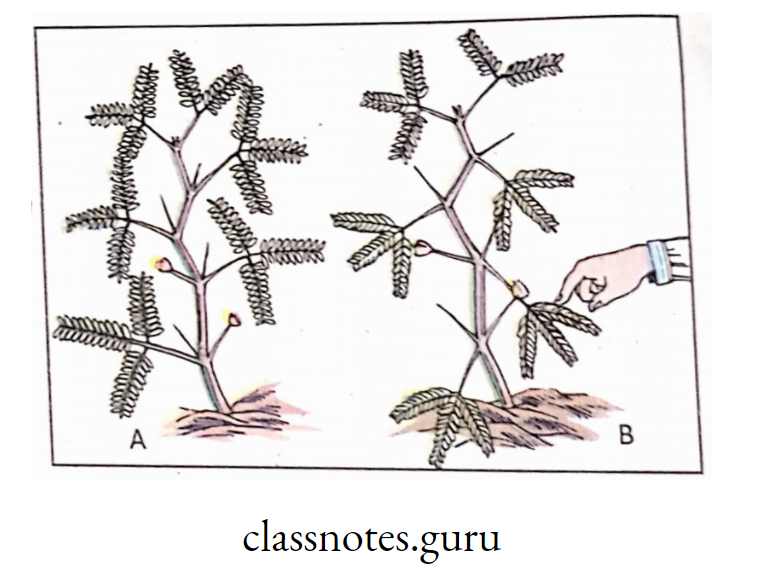
Examples— Leaflets of Mimosa pudica when touched droop down. This movement is based on changes in turgor pressure in the sensitive motor cells of pulvinus, the swollen basal region at leaf base containing sensitive cells.
Class 10 Science: Control and Co-ordination Notes
Comparison among Tactic, Tropic and Nastic movement
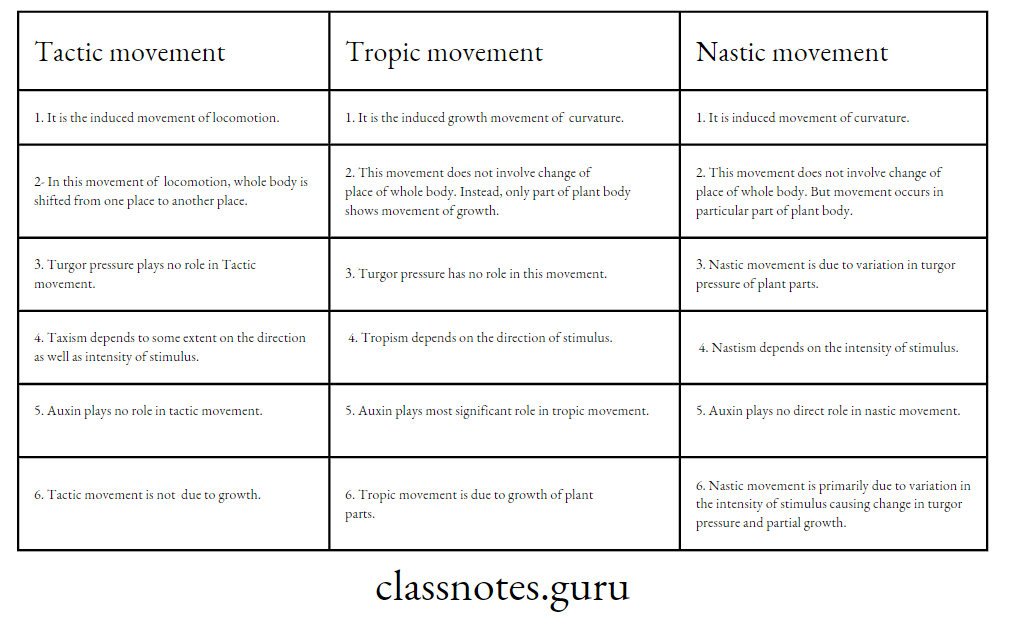
The normal growth of plant body does not depend entirely upon the environmental conditions, but the growth of plant body is also influenced by the chemical substances produced in the plant body.
These growth promoting organic chemical substances are called plant hormones or Phytohormones or “Growth Promoting Substances” (GPS) or “Plant Growth Regulators” (PGR). The term phytohormone was coined by Thimann.
Definition: Phytohormone (plant hormone) Is the organic chemical substance produced in minute amounts naturally in higher plants, controlling growth and other physiological functions on target organs either locally or at a site remote from its place of production.
Need for regulation of different activities of the plant body and the role of hormones :
Phytohormone can regulate various general activities of the plant body as follows—
Discovery of plant hormone :
Charles Darwin and his son Francis Darwin (1880) first postulated presence of some ‘ exciting organic chemical responsible for bending curvature (tropic movement) of seedling.
Later on many scientists like Sachs (1889), Boysen-Jensen (1913), Paal (1919), Went (1932) made different experiments to confirm the presence of “exciting organic chemical” as phytohormone. First plant hormone discovered was auxin.
Characteristics of plant hormones :
Types of plant hormones :
Those hormones which are synthesised within’ the plant body are called natural hormones, e.g., Auxins or Indole acetic acid (IAA) —is nitrogenous hormone, Gibberellins or Gibberellic acid (GA)—is non-nitrogenous hormone, Cytokinins—is . nitrogenous hormone, etc.
Some other important plant hormones: 1
Origin, chemical constituents and role of Auxin, Gibberellin and Cytokinin.
Auxin Definition: The plant hormone containing indole group, produced mostly by apical meristem, and controls the growth of shoot, root and other growing parts of plant is called auxin.
Nervous System and Hormonal Control: Class 10 Science Explanation
Characteristics of auxin :
Origin: Auxin is almost universally present in all plants. It is synthesized at the growing parts of higher plant organs like apex of the stem, young expanding leaves, fruits, flowers, seeds etc.
Auxin is synthesized in the living plant cells through a series of steps from amino acid tryptophan.
Auxin is generally transported from apex to base (basipetal).
Chemical constituents :
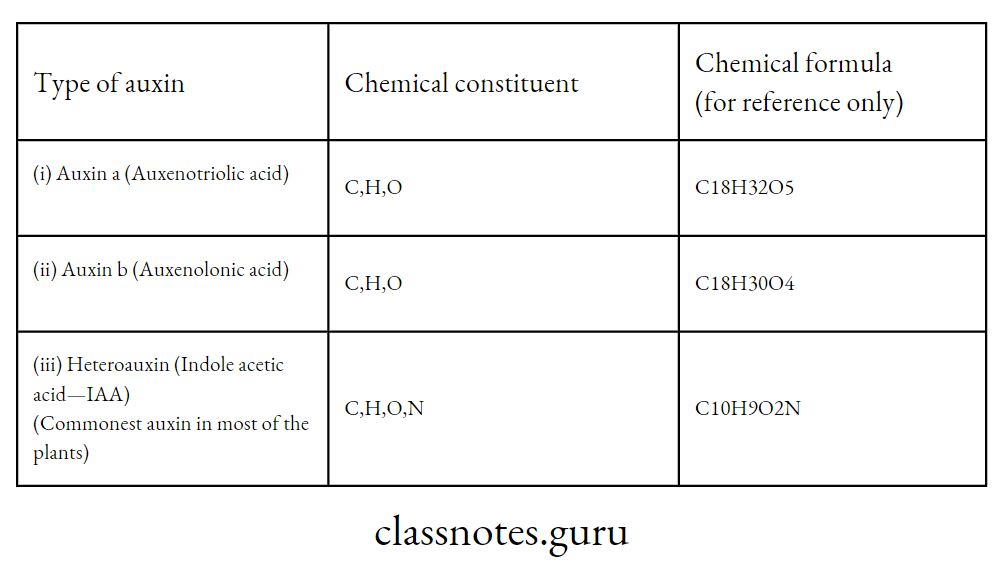
Role of auxin (Function) :
Apical dominance—It is the phenomenon by means of which the growth of the apical bud inhibits the development of lateral buds. When the apical bud is removed, then it stimulates the formation of lateral buds.

Cell division—Auxin takes part in nuclear division and thereby increases the rate of cell division causing increase in cell number (Hyperplasia).
Cell elongation enlargement— Auxin helps to increase the size and volume of the cells (Hypertrophy).
Root growth—In case of horizontal seedling, more auxin is accumulated on the lower (darker) side than to its upper side (illuminated part). This unequal distribution of auxin causes unequal growth rate—thus producing a curvature.
Plant roots grow well at a lower concentration of. auxin (whereas stem grows well at a higher concentration).
High concentration of auxin causes higher growth in stem whereas in root high concentration of auxin retards growth rate. Thus upper part of radicle grows faster than that of lower part.
Hence the root bends downward to soilresulting into positive geotropism.
Fruit growth—After fertilization, due to chemical changes, ovule develops into seed and ovary into fruit. The process of formation of seedless fruits without pollination and fertilization is called parthenocarpy.
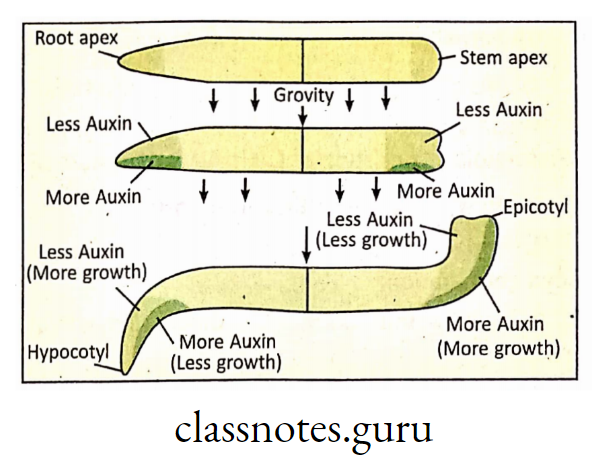
Now-a-days it is possible to stimulate fruit development in flowers without pollination simply by the application of auxin (IAA) to the flower. Due to its effect seedless fruits are produced e.g. Banana, Papaya, Grapes, Tomato, etc.
Control of tropic movement (Tropism)—Tropism is a movement in plant where the direction of root and shoot growth alters according to the direction of stimulus. This tropic movement is influenced by auxin hormone.
Auxin is synthesized in greater quantity towards shady part of plant than bright illuminated part. In stem higher concentration, of auxin accelerates growth rate. So stem is positively phototropic.
Gibberellins :
Definition: The non-nitrogenous organic acid having terpenoid group which act as growth promoting substances in plants are called Gibberellins. So, Gibberellin is non-nitrogenous acidic plant hormone.

Characteristics of gibberellin :
Japanese plant pathologist Kurosawa (1926) first discovered this plant growth substance in Gibberella fujikuroi fungus that caused extensive growth in infected plants. The name Gibberellin was introduced by Yabuta (1935).
Nearly 50 types of gibberellin have been discovered so far (like
GA1 GA2 etc.) of which GA3 is very important.
Origin: Gibberellins are naturally synthesized in the maturing seeds, germinating seedlings, growing tissues of expanding cotyledons, growing leaf, apical buds, root tips etc.
Glbbmollin Is synthesized from Acetate.
Gilhberellin Is, transported In all direction from their site of formation.
Chemical constituents: Glbberellins are colourless acids, non-nitrogenous diterpenoids, consisting of C, H and 0. [Formula of
GA3 is C 19H22O6.]
Role of Glbberellin (Function) :
Mechanism of Control and Co-ordination in Plants and Animals
Cytokinins or Kinins :
Definition: The alkaline nitrogen containing organic compound having a purine group, acts as plant growth promoting substance is called kinins or cytokinins.
Characteristics of cytoklnin:
Miller (1956) first isolated cytokinin from Yeast DNA that can stimulate cell division in plants. They are transported in all directions of the plant body.
Origin: Cytokinins are found in fruits like tomato, apple, banna; in endosperm tissues; abundantly present in coconut milk and water; Cytokinin in corn seed is called zeatia Cytoklnin Is also found in different fruits, vegetative meristem and root tips.
Most of the cytokinins required for the plant body are synthesized in root tips, and then they are translocated to different region of plant body through xylem.
Chemical constituents: Cytokinin is alkaline, water soluble plant hormone and it also contains nitrogen. Chemically it is aminopurine and consists of C, H, 0 and N [ The empirical formula is C10H9N5O].
Role of Cytokinin (Function) :
In presence of auxin, cytokinin stimulates so many-functions in plants.
Promotes cell division— Cytokinin induces cell division (Cytokinesis) in plants. Thus it helps to increase cell number (hyperplasia) resulting growth of plant. It promotes synthesis
of protein, RNA and other essential substances for cell cycle
Promotes lateral bud growth-Cytokinin promotes growth of lateral buds in plant. Thus apical dominance (growth of apical bud) is- counteracted. (So, in this point auxin and
cytokinin are reverse in function.)
Delay leaf senescence—Cytokinin delays senescence of leaves—thus it prevents shedding of immatured leaves, flowers and fruits.
Comparison among auxin, gibberellin and cytokinin :
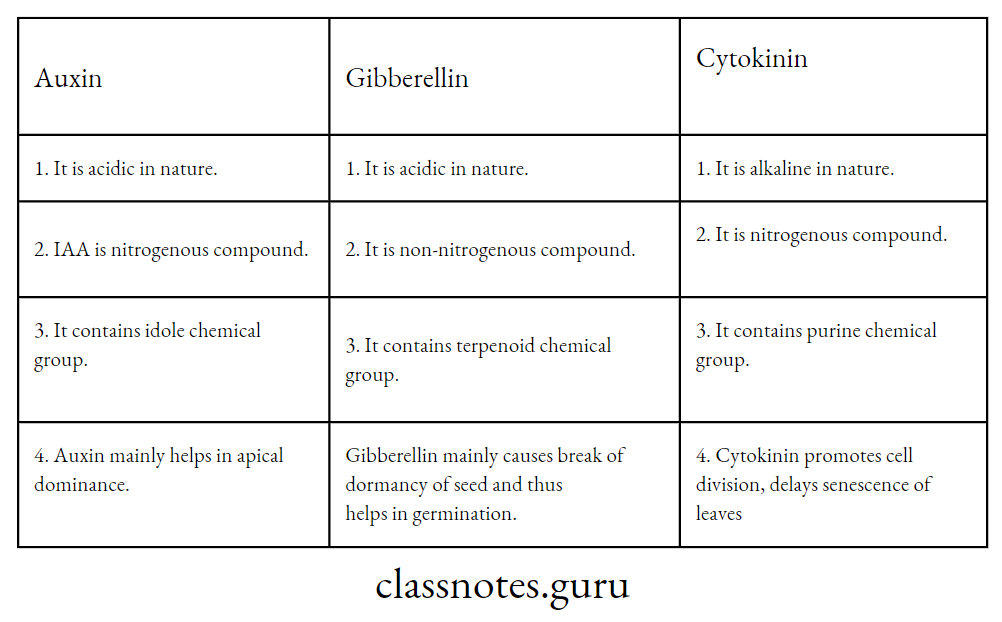
Synthetic/Artificial plant hormones :
There are various synthetic organic compounds that can stimulate plant growth and development. They can function in a very low concentration.
These chemicals like synthetic auxin, synthetic gibberellin are now widely used for obtaining better results in the field of agriculture and horticulture that can be discussed as follows :
Rooting of cutting—Plants like China rose, rose etc. generally reproduce vegetatively. They are usually propagated by cutting pieces of stem. When the cut stem piece is placed in moist sand, adventitious roots come out from the cut end.
This is called “rooting of cutting”. This process can be accelerated by pretreatment of cuttings with powders or solutions containing synthetic auxin. With this technique of cuttings, a large number of identical plants may be prepared from a single individual mother plant.
A good commercial product is available to farmers known as Olivia’s cloning gel which contains synthetic plant hormones that help in rapid growth of root from the end of cuttings.
Delay of preharvest fruit drop-ln plants, shedding of leaves, flowers, fruits etc. from stem is called abscission. Premature or preharvest drop of fruits (like apple, orange, and others) causes serious reduction in yield.
By the spray of synthetic plant hormones (like synthetic auxin and gibberellin) farmers can prevent premature drop of fruits—which is economically important in horticulture.
Control of weeds- Unwanted plants are called weeds, that can be effectively controlled by the application of synthetic hormones. Weed killing hormones are called herbicides. Synthetic hormones (herbicides) are dissolved in water and sprayed to field to control weeds.
Developing parthenocarpic fruit— Formation of parthenocarpic fruits (seedless fruits) can be induced by the application of synthetic auxin on different plants like Squash, Tomato,Strawberry etc
Bayliss (1902) first observed that apart from carbohydrate, protein, fat, vitamins, minerals and water, there are some other unknown chemical substances, essential for normal growth and reproduction in the living body.
Bayliss and Starling (1904) termed this important chemical substance as “hormones”. In fact, they discovered the peptide hormone secretin (first discovered animal hormone) that primarily stimulates pancreas to secrete pancreatic juice.
The word hormone is derived from the Greek word hormao which means “I impel” or “I arouse to activity”.
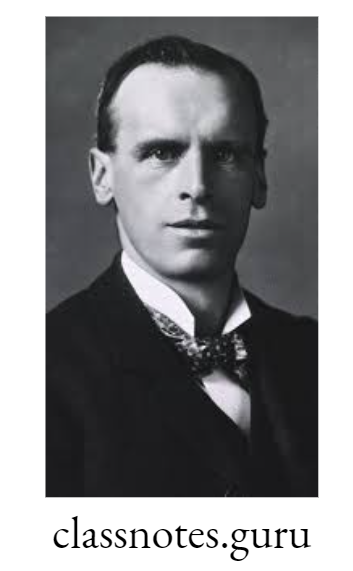
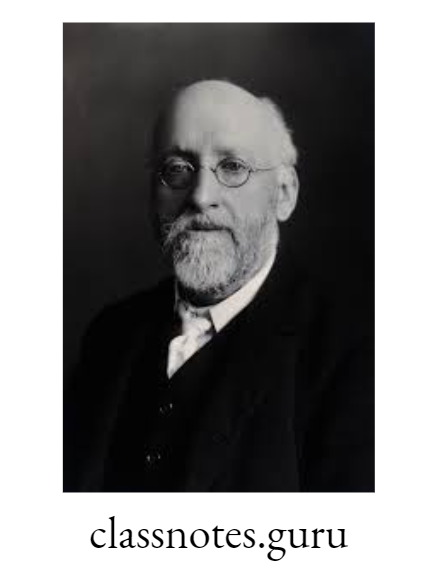
Definition: Animaj hormone is a biochemical messenger released from endocrine gland and is carried by body fluid or biood to a distant target organ where.it activates the metabolic process.
Need for regulation of different activities of the animal body (e.g. human) and the role of hormones :
Hormones play significant role in regulating basic important functions of our body that can be illustrated as follows :
Erection of body hair—Goose bumps / goose pimples/ piloerection are the bumps on a person’s skin at the base of body hairs which may develop involuntarily when a person is exposed to severe cold or experiences strong emotions like fear, pleasure, euphoria, nostalgia etc.
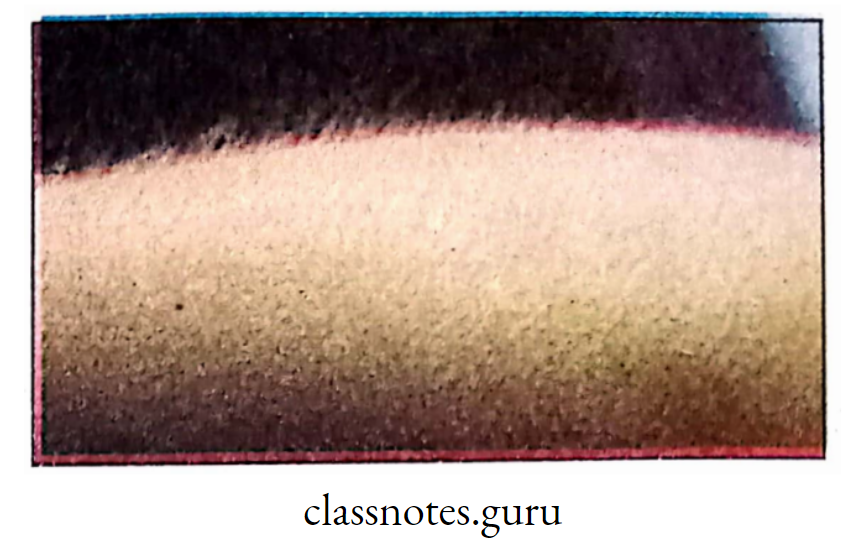
This pilomotor reflex or piloerection \s caused when tiny muscles at the base of each hair, known as arrector pili, contract and pull the hair erect. This is regulated by adrenalin (epinephrine) hormone secreted from adrenal medulla and the sympathetic nervous system.
Maintenance of constant level of glucose in blood—Blood sugar regulation is the process by which the level of blood sugar, primarily glucose is maintained in the body. Many hormones influence to control blood glucose level—some of them decrease blood glucose |eve| (blood glucose lowering hormone) whereas (blood glucose raising hormone).
Blood glucose lowering hormones are—Insulin (secreted from (3-cells of Islets of Langerhans in Pancreas) and to some extent Somatostatin (secreted some others increase blood glucose level from 5-cells of Islets of Langerhans).
On the contrary, blood glucose raising hormones are— Glucagon (secreted from a-cells of Islets of Langerhans in Pancreas), Adrenalin (fromAdrenal Medulla), Cortisol (from. Adrenal Cortex), ACTH, STH (fr0m Anterior Pituitary) and Thyroxin (from Thyroid gland).
Combating stress—Some hormones are secreted in the body during emergent condition (stress) |jke fear, anger, anxiety, hypertension, emotion, depression etc. These hormones are adrenalin (epjnephrjne) from adrenal medulla and cortisolfrom adrenal cortex.

Adrenalin is known as emergency hormone or stress hormone,which causes widespread responses (such as increase of heart rate, lung breathing, blood pressure and so on) by which a subject is able to fight out situation successfully.
These responses are known as fight response or flight response.
Maintenance of blood pressure—Different hormones in the body influence blood pressure. Some important examples are as follows : –
Control of BMR—Thyroid hormones stimulate oxygen uptake and thus activate diverse metabolic activities in most tissues of the body. Hence these hormones increase BMR and are rightly called as calorigenlc hormone.
Control growth and secretion of reproductive glands— GTH (Gonadotrophic Hormone) is secreted from anterior pituitary that influences the functions of gonads (ovary in female and testis in male). It is of two types—FSH (Follicle Stimulating Hormone) and LH (Luteinislng hormone).
In females, FSH increases the size and weight of ovaries; LH helps in ovulation (release of ovum from ovary). Matured graafian follicle of ovary secretes oestrogen and progesterone (sex steroid).
In males, FSH induces development of seminiferous tubule and spermatogenesis whereas LH stimulates Leydig cells of testis to secrete testosterone (sex steroid).
Class 10 Science: Control and Co-ordination Key Concepts
Characteristics of animal hormones.:
Source— Animal hormones are secreted from endocrine gland (ductless gland). Pineal gland in the smallest endocrine gland whereas thyroid gland is the largest endocrine gland in human body.
Chemical nature—Animal hormones are of.following main types :
Mode of transport—Animal hormones are generally transported by blood or body fluid from the site of synthesis to the target organ (site of action).
Functions—In general animal hormone can regulate so many functions of the body—such as, growth/reproduction, metabolism and all physiological functions of the body
(like respiration, circulation, excretion etc.)
Fate of hormones—Animal hormones are required in.very small quantity (picogram = 10 12 gm) but they can not be stored in the body. So they are destroyed after their respective functions.
Hormone acts as ‘biochemical messenger’—Hormone is secreted from one endocrine gland and is carried to distant target organ by blood. Hormone alters metabolic profile in the target tissue as if the hormone is carrying the “message of metabolic change” from the endocrine gland to the target organ.
In fact, endocrine gland itself cannot move upto distant target organ but tries to control the function of the organ. So, it has to produce ‘information molecule’ called hormone that carries the message to desired target place. Hence the hormone is called as biochemical messenger.
Feed back control (e.g. TSH and thyroxine)—Feedback circuits are very prominent in the endocrine system. There are positive feedback but negative feedback is more common.- Negative feedback is seen when the output of a pathway inhibits inputs to the pathway’Autostart’ and ‘Autpcut’ of Ai.rconditioner, Microoven, Fridge etc. follow this negative and positive feedback principle.
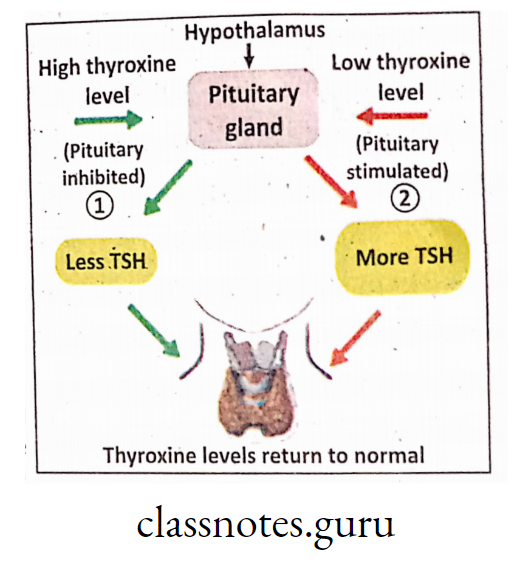
An important example of a negative feedback loop is seen in control of thyroid hormone secretion. Thyroid hormones-T3 (Triiodothyronine) and T4 (Tetraiodothyroxine) are synthesized and secreted by thyroid glands and influence metabolism all over the body.
The basic mechanism of negative feedback can be explained as follows:
Neurons in the hypothalamus secrete thyroid releasing hormone (TRH) RH/RF (Releasing Factor) which stimulates cells in the anterior pituitary to secrete thyroid stimulating hormone (TSH).
TSH stimulates the cells of thyroid gland to synthesize and secrete thyroid hormones that influence other target cells of the body..
When blood concentrations of thyroid hormones increase above the threshold limit, TRH—secreting neurons in the hypothalamus are inhibited resulting into stoppage of secretion of TRH.
Differences between Plant hormones and Animal hormones:
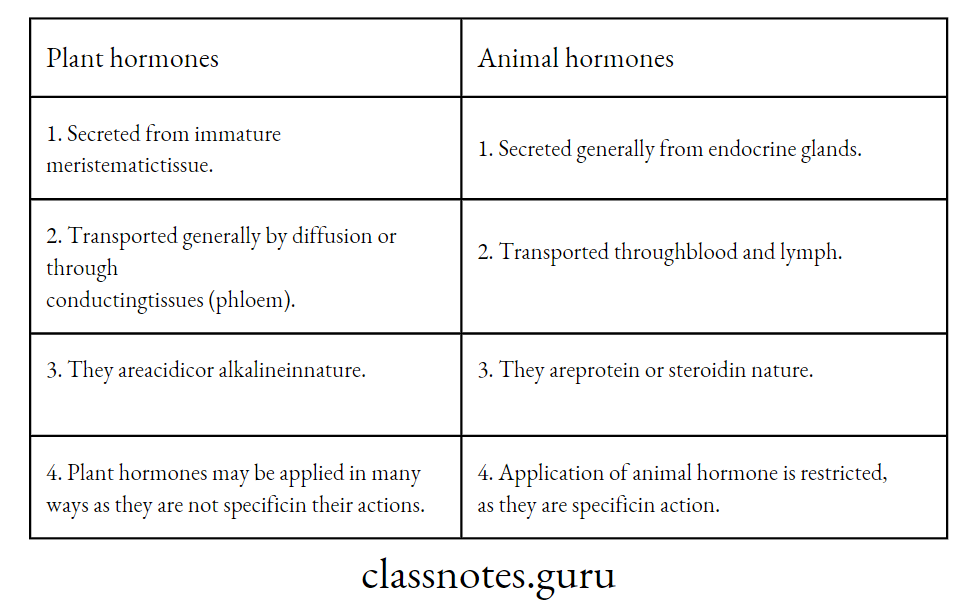
Human endocrine glands and the hormones secreted from them :
Hypothalamus: It is the basal part of fore brain.It is connected with the pituitary gland by a stalk called infundibulum. A portal blood vessel is connected between hypothalamus and hypophysis (pituitary gland) known as hypothalamic—hypophyseal portal vessel.
This vessel carries various releasing hormones (RH) or releasing factors (RF) and inhibitory factor (IF) or inhibitory hormone (IH) from hypothalamus to pituitary gland (Hypophysis). RF or RH stimulates pituitary gland to secrete a particular hormone whereas IF or IH causes inhibition of secretion, e.g.
GHRH (Growth hormone-releasing hormone) stimulates secretion of GH (Growth hormone) from anterior pituitary whereas GHIH (Growth hormone inhibiting hormone) inhibits secretion of growth hormone .
Posterior pituitary (Neurohypophysis) releases two hormones-ADH (Anti Diuretic Hormone) or Vasopressin and oxytocin. In fact, these two hormones are synthesized in Hypothalamus, carried to posterior pituitary and stored in posterior pituitary.
They are released from posterior pituitary as and when required (SOS).
General types of hormone in man:
The General hormone—The hormone which is secreted from one endocrine gland and acts on distant target organ is called general hormone, e.g. Insulin, Thyroxin etc.
Trophic hormone—The hormone which is secreted from one endocrine gland and acts on another endocrine gland as target organ is known as trophic hormone e.g. Anterior pituitary hormones like ACTH, TSH, GT.H etc.
Stress hormone/Emergency hormone—The hormone which is secreted under physiological stress or strain (‘ike fear, anxiety etc:) is considered as stress hormone or emergency hormone, e.g. Adrenalin.
Local hormone—The hormones that are released from several tissues of the body and act at the same site of origin or in nearby organs are designated as local hormone, e.g.
Gastrin (secreted from stomach and acts on stomach), secretin (secreted from duodenum and acts on pancreas) etc.
Pituitary gland (Hypophysis):
Location: Pituitary gland is situated under the brain within a small bony cavity, the sella turcica of the sphenoid bone.
The human pituitary gland is a small pea-shaped gland and remains attached with the brain by pituitary stalk (Infundibulum). It consists of two parts —anterior pituitary (Adenohypophysis) and posterior pituitary (Neurohypophysis)!
Pituitary gland is the very small endocrine gland in human body.
Anterior Pituitary :
Anterior pituitary consists mainly of two parts, such as- (i) pars tuberalis and (ii) pars distalis, which contain different secretory cells from where trophic hormones are secreted
Trophic Hormones: Those hormones which are secreted from the anterior pituitary and stimulate the different target glands for their growth and funtional activities are called trophic hormones.
since anterior pituitary performs a master role to control the funtional activities of the other endocrine glands of the body hence, anterior pituitary is sometimes called as “master gland” Or “master Of endocrine orchestra”. The six trophic hormones secreted are-
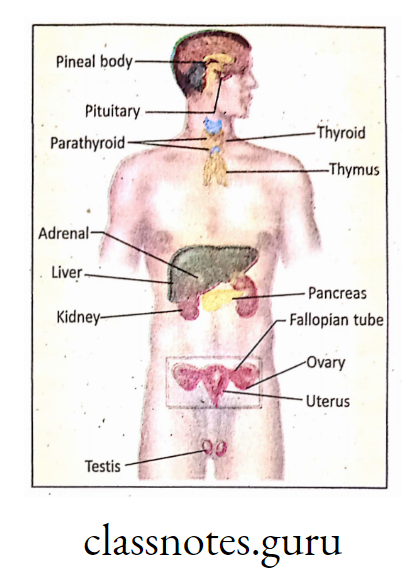
Adrenocorticotrophic Hormone- ACTH :
Site of secretion—ACTH is a protein (polypeptide) hormone secreted from the anterior pituitary.

Functions—
Growth Hormone—GH or Somatotrophic Hormone :
Site of secretion—Growth hormone or Somatotrophic hormone (STH) is a protein hormone secreted from the anterior pituitary.
Functions—
Hypofunction of STH (GH) in childhood causes dwarfism.
Hyperfunction of STH in childhood causes gigantism and in adult acromegaly.
Thyroid Stimulating Hormone—TSH :
Site of secretion—TSH is a water soluble glycoprotein hormone secreted from the anterior pituitary.
Functions—
Hormonal Control in Living Organisms: NCERT Class 10 Science Notes
Gonadotrophic Hormone—GTH :
The trophic hormone which has influence over gonads (ovary or testis) is called gonadotrophin. It is of two types—FSH and LH.’
Follicle Stimulating Hormone (FSH) :
Site of secretion: It is a glycoprotein hormone secreted from the anterior pituitary.
Functions:
In females—
In males—
FSH stimulates seminiferous tubules of the testis and causes spermatogenesis (process of formation of sperm). FSH also stimulates sertoli cells of testis.
Luteinising Hormone (LH) or Interstitial Cell Stimulating Hormone (ICSH) :
Site of secretion: LH is a glycoprotein hormone secreted from the anterior pituitary.
Functions:
In females—
In males—LH stimulates the secretion of testosterone (a male sex hormone) by stimulating the interstitial cells of the testis (Leydig cell).
Luteotrophic Hormone (LTH) or Prolactin :
Site of secretion: It is a protein hormone secreted from anterior pituitary. Prolactin is also known as “maternity hormone” since this hormone is secreted during pregnancy,mainly during lactation.
Function:
Posterior pituitary (Neurohypophysis) :
Site of secretion: The antidiuretic hormone (ADH) or Vasopressin and oxytocin are the two.hormones, synthesized in hypothalamus, transported through NSC- and stored in posterior pituitary, from where they are released as and when required.
Functions:
Oxytocin controls contraction of uterus during birth of the baby from mother’s uterus (parturition), secretion of milk from mother’s mammary gland etc.
Disorder of pituitary :
Gigantism: This is also known as giantism. This is characterized by excessive unusual growth in length much more than the average height (7′ – 9′). This’ is caused by overproduction of STH in childhood.
Dwarfism: See later (hormonal disorder).
Thyroid Gland :
Location: Thyroid gland is the largest endocrine gland of human body. The thyroid gland of man consists of two lateral lobes that lie on either side of the roof of trachea. They usually connected by a thin middle lobe called isthmus.
Site of secretion: Thyroid gland secretes thyroxin (Thyroxine). Essential component of thyroxin is iodine. Thyroxin is iodinated tyrosine.
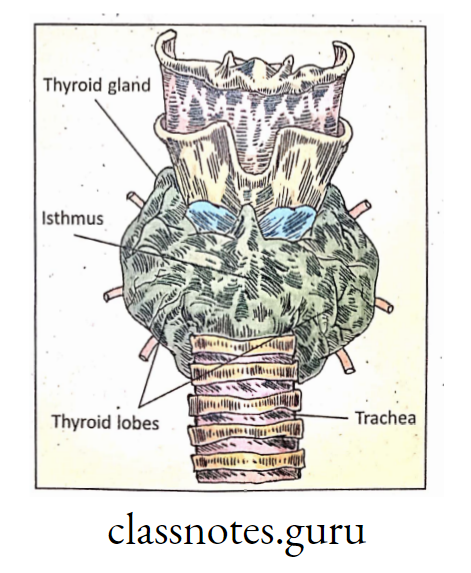
Function of thyroxin :
Diseases of thyroid :
Myxoedema—This disease develops due to hyposecretion of thyroid gland in adult. This is characterized by puffy eyes, face, hands along with mental retardation. However, :
myxoedema may develop both in hypothyroidism and hyperthyroidism.
Cretinism—This disease develops in children due to congenital (since birth) thyroid
hormone deficiency. It causes mental retardation, dwarfism. ’
Adrenal Gland :
Location: A pair of roughly triangular human adrenal glands are situated on the upper pole of each kidney. So it is known as Suprarenal gland. Each adrenal gland consists of outer
cortex and inner medulla.
Site of secretion—The adrenal medulla secretes adrenalin and noradrenalin.

Adrenalin is known as emergency hormone. Because the rate of secretion from adrenal medulla increases during emergent conditions, such as—fear, anxiety, emotionalconditions, etc. to cause widespread
responses by which a subject is able to fight out situation successfully. These responses are known as fight and flight responses.
Functions —
Noradrenalin (Norepinephrine) :
Site of secretion: The adrenal medulla secretes noradrenalin.
Functions :
The function of adrenalin and noradrenalin are more or less same except a few as follows:
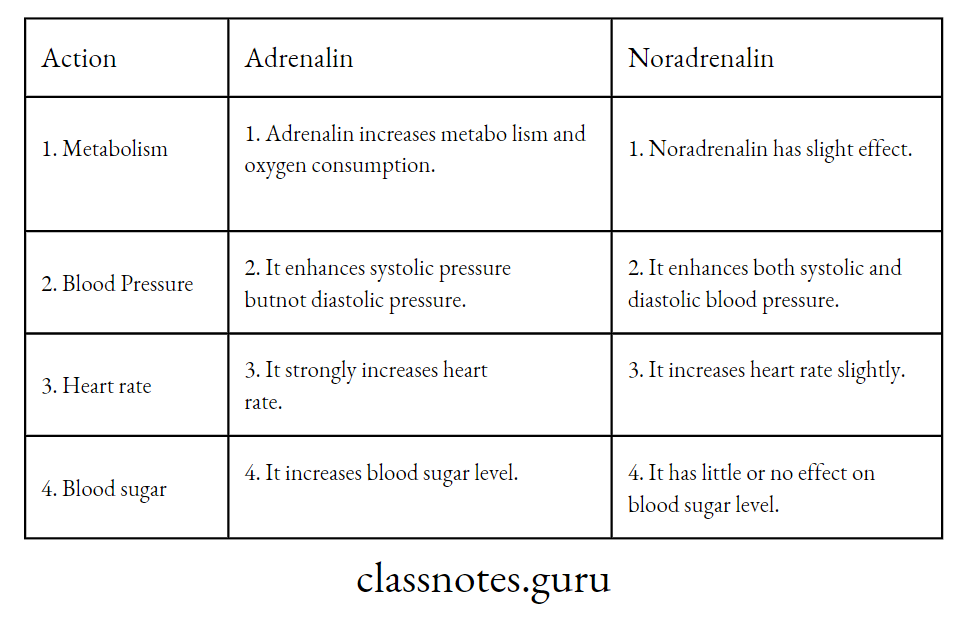
Endocrine Pancreas :
Location: Pancreas is situated below the stomach, connected with the duodenum. It is a mixed gland consisting of both exocrine part (Acini) and endocrine part (islets of Langerhans). Maximum Islets are clustered in the tail region of pancreas. The Islets of’ Langerhans are groups of cells present in between the exocrine cells of pancreas.- The Islets of Langerhans contain mainly a (alpha), (3
(beta) and 8 (delta) cells.
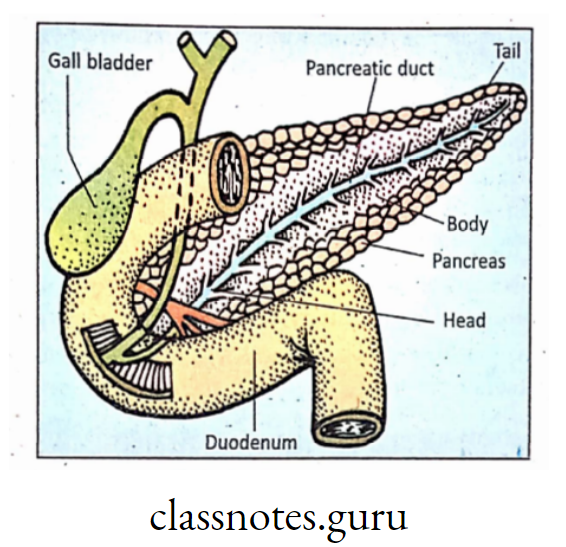
Hormones secreted: Two principal hormones secreted from pancreas are Insulin and Glucagon.
Insulin : (a) Site of secretion— Insulin is a protein hormone secreted from the (3-cells of Islets of Langerhans of the pancreas.
Functions of Insulin—
Effect on carbohydrate metabolism—Insulin is known as an antidiabetogenic hormone because insulin prevents Diabetes Mellitus by lowering blood sugar (Hypoglycemic) with following processes:

Oxidation of glucose—Insulin increases the activity of the hexokinase enzyme in the cells and thus increases oxidation (utilization) of glucose , in the cell,
Synthesis of glycogen—Insulin .stimulates the formation and storage of glycogen in the liver and muscle taking glucose from blood,
Inhibits gluconeogenesis—Formation of glucose from protein, fats etc i.e., from the non-carbohydrate sources is called gluconeogenesis. This process is inhibited by insulin,
Permeability of membrane—Insulin increases entry of glucose into somatic ceils from blood by increasing permeability of cell membrane.
Effects on protein metabolism—Insulin helps in protein synthesis in the body by preventing gluconeogenesis.
Effects on fat metabolism—Insulin decreases the lipid and cholesterol in blood
Glucagon :
Site of secretion: Glucagon is secreted from alpha cells of Islets of Langerhans of pancreas
Functions of Glucagon :
Hence Insulin and Glucagon are antagonistic hormone. In human body, normal blood sugar (glucose) is balanced by the action of both the hypoglycemic insulin and hyperglycemic glucagon hormpnes.
Gonads: Gonads are the reproductive organs of human body. They are testis in male and ovary in female. Both testis and ovary are considered as mixed gland.
Testis (Gonad of male) : (Exocrine secretion of testis is sperm)
Location—Human testis are oval shaped paired structures which remain suspended in
scrotum or scrotal sac that is present outside the body in between two legs.
Testis secretes the male sex hormone called Testosterone.
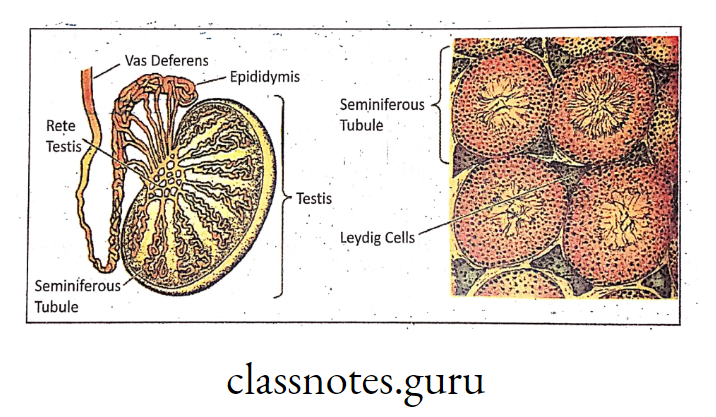
Class 10 Science Chapter: Control and Co-ordination Review
Site of secretion: Interstitial cells of Leydig in testis.
Functions:
Ovary (Gonad of female) :
Location—Ovary is the primary sex organ or gonad of female body. Two ovaries are present at the pelvic region of female body in both sides of abdomen. (Exocrine secretion of ovary is ovum)
Ovary secretes two important female sex hormones called Oestrogen and Progesterone.

Oestrogen :
Site of secretion of Oestrogen :
Functions of Oestrogen :
Progesterone :
Site of secretion of Progesterone :
Functions of Progesterone :
After ovulation, the empty graafian follicle without ovum is called Corpus Luteum which secretes the hormone progesterone. Corpus Luteum is a temporary endocrine gland.
A Causes and Symptoms of some common hormonal disorders (Dwarfism, Diabetes Insipidus, Goitre and Diabetes Mellitus) :
Dwarfism :
Causes: Hyposecretion of STH (GH) fr0m anterior pituitary
Stunted growth.
Symptoms:
Diabetes Insipidus :
Causes: Hyposecretion of ADH (Vasopressin) from this problem.
Symptoms:
Due to less ADH, there is less reabsorption of water through the renal tubule of nephron. So, huge amount of water is lost from the body along with urine. Hence there is frequent urination (polyuria) and dehydration. To compensate the water loss, there is repeated feeling of thirst (Polydipsia).
There is decrease of blood pressure.
Normal function of stomach, intestine, urinary bladder is disturbed.
Goitre :
Causes: Enlargement of thyroid gland due to hyperthyroidism or hypothyroidism is called Goitre.
Hyperthyroidism—results Into Exopthalmic goitre or Graves’ disease. Important symptoms are—
Hypothyroidism (endemic goitre) may result into tremendous nlargement of thyroid gland and front part of neck.
Common Symptoms are as follows :
Diabetes mellitus :
Causes: HypoSecretion of insulin causes diabetes mellitus. Due to less secretion or lack of insulin, amount of glucose in blood increases known as hyperglycemia. When the amount of glucose in blood crosses renal threshold limit (more than 180 mg/100 ml blood) excess glucose may be eliminated along with urine called glycosuria.
Normal blood sugar level :
Fasting—80 mg% (per 100 ml blood)
After meal (Post Prandial—PP) —120 mg% (per 100 ml blood)
There are two types of diabetes mellitus—type-1 and type-ll.
Type-1 diabetes is due to destruction of pancreatic Beta celis.So no insulin is produced from the pancreas. Hence the patient has to take exogenous insulin injection. So, type-1 diabetes is called Insulin Dependent Diabetes Mellitus (IDDM).
Type-2 diabetes is known as ‘Life style Diabetes’ which is Non-insulin Dependent Diabetes Mellitus (NIDDM).More than 90% of diabetic patients suffer from Type-ll diabetes.
Some common causes of type-ll diabetes may be as follows :
Symptoms: Symptoms of Type-1 and Type-ll diabetes are common, There are three ‘polys’—
Control and Co-ordination in Humans: NCERT Class 10 Notes
Exocrine, Endocrine and Mixed glands:
Definition: Any specific cell or tissue or organ of the body, that can -secrete particularchemical substances for use in the body or for discharge into surroundings is called as gland.. Largest gland in human body is liver whereas smallest gland in human body is goblet cell (secreting mucus).
Exocrine gland: The ducted gland that commonly secretes-enzymes is- called as exocrine gland, e.g. Salivary gland, Liver, Intestinal gland, Gastric gland, Sweat gland; Sebaceous gland, Mammary gland etc.
Endocrine gland: The ducttess giand that secretes hormones- is called endocrine gland. The secreted hormone directly diffuses into blood. e;g. Pituitary gland, Thyroid gland,Adrenal gland.
Mixed gland: The gland which is both exocrine and endocrine in function (i.e. can secrete both enzyme and hormone) is’ called as fnixed gland, e.g. Pancreas, Testis and Ovary.
Difference between Endocrine and Exocrine gland :
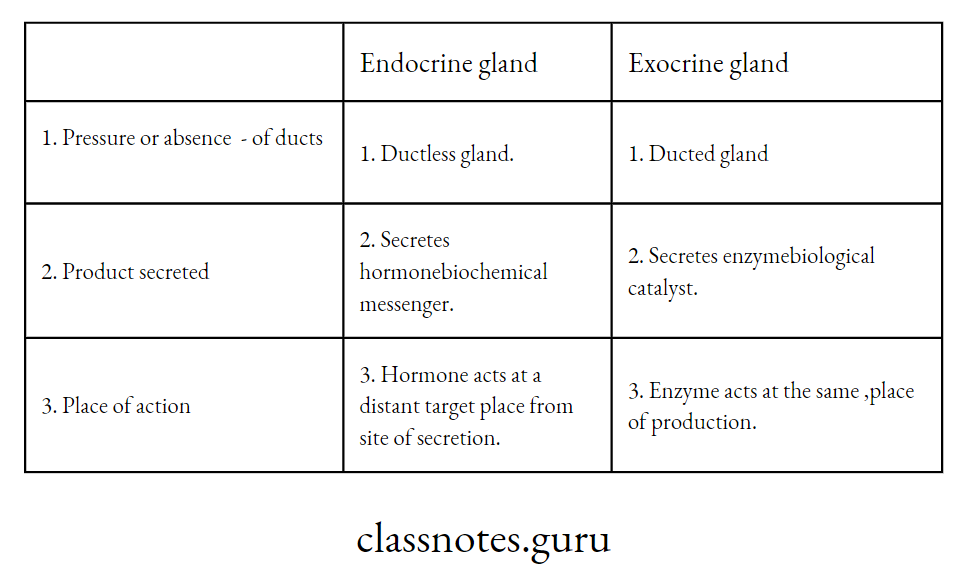
Difference between Thyroxin and Adrenalin :
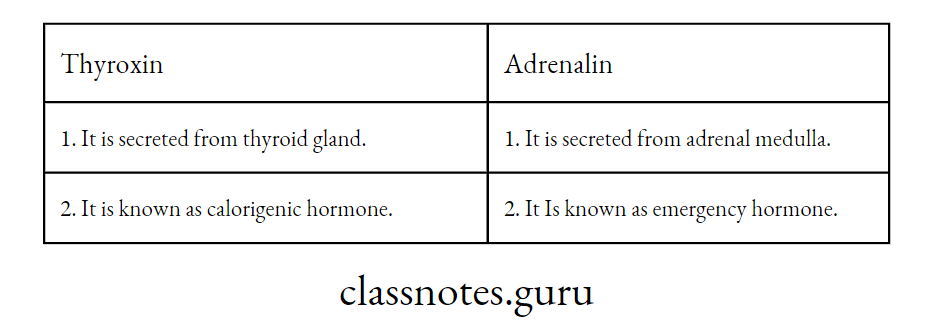
Difference between Hormone and Enzyme :
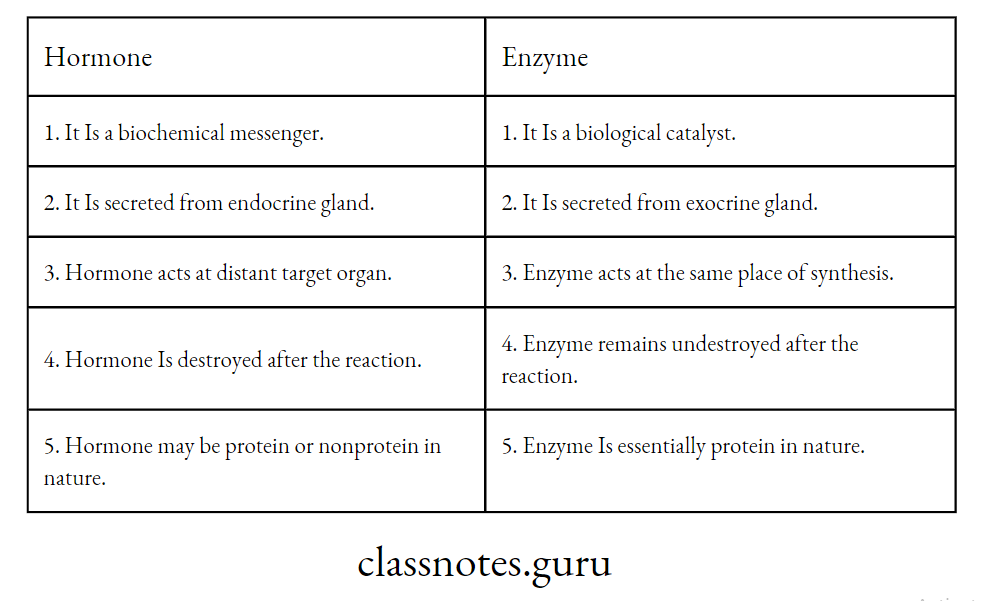
Difference between Insulin and Glucagon :
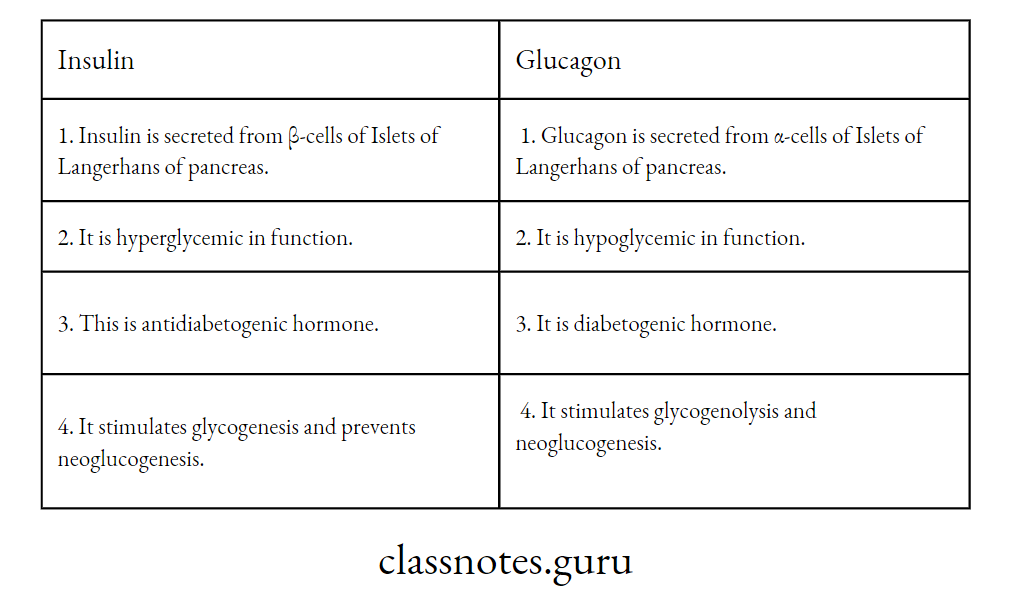
Glycogenesis is the process of formation of glycogen from glucose. Neoglucogenesis or gluconeogenesis is the process of synthesis of carbohydrate from noncarbohydrate (protein, lipid, amino acid etc.) source.
Difference between Diabetes mellitus and Diabetes insipidus :
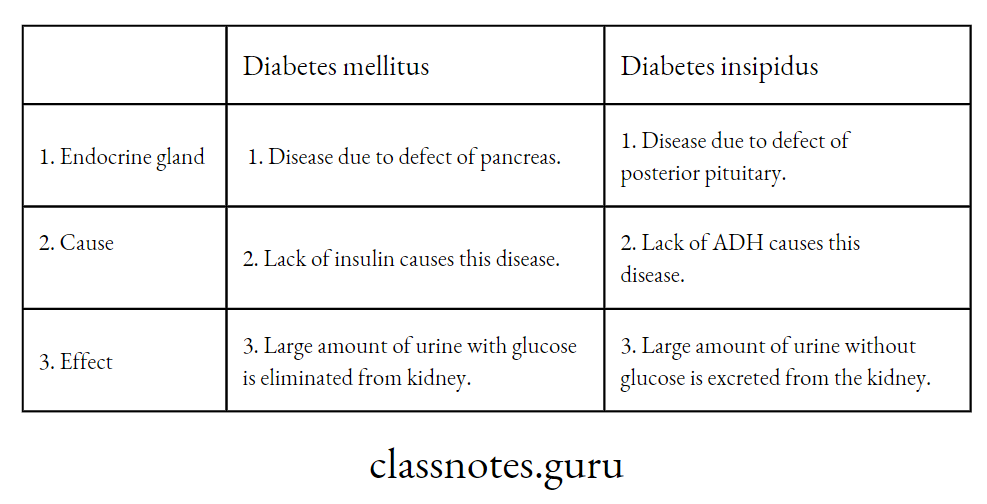
Neural control and coordination (What is neural control and coordination ?).
There are frequent changes in the external surrounding and internal environment of our body. A system is required that will be informed and aware of all those changes. The system controls various functions, regulates different activities and coordinates all systems of the body.
Two controlling systems in. the animal body are—
The rapid controlling’ system (comprising nervous system) and
The slow controlling system (comprising endocrine system).
Nervous system may control and regulate one particular activity but coordinates various activities. Nervous coordination is brought about by the neurones, nerves, nervous system and sense organs.
One common example from daily life :
Someone is running: This is an action but this action is coordinated by many other functions of the body that can be” explained as follows :
Nervous pathway (How do animals respond to stimuli ?)
One of the fundamental characteristic of living organisms is their ability to respond to stimuli. This is known as irritability or sensitivity.
Stimulus: Any physicochemical change in the external or internal environment of an animal that can generate an impulse in the nerve is called stimulus.
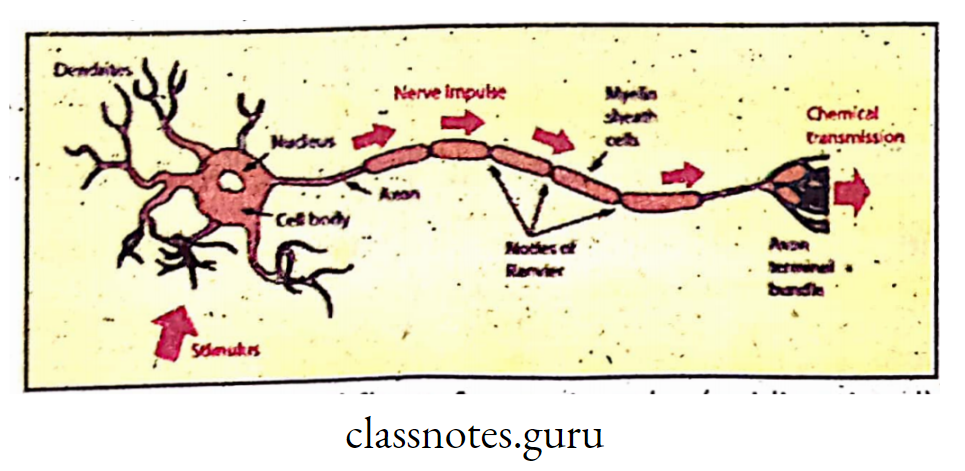
External stimulus may be heat, light, sound etc. .
Internal stimulus may be pain; pressure,hunger, fear, anxiety etc.
Mechanism of Control and Co-ordination in Plants and Animals
Receptor: Any organ or part of the body that can receive a stimulus is called receptor, e.g. watching of cricket ball by the batsman with eyes. Here.Eye is the receptor (Photo-receptor); Hearing a song, Ear is. the receptor for sound (Phonoreceptor); Nose’is the receptor for smelling (Olfactoreceptor); Skin is the receptor for touch (Tangoreceptor); Tongue is the receptor for taste (Gustato-receptor) and so on.
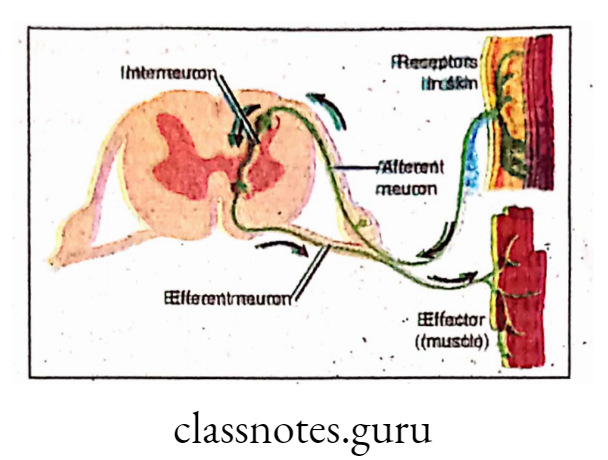
Effector: A muscle or gland or an organ capabie of responding to a. stimulus (especially a nerve impulse) is called as effector. Effector brings about .response, e.g’. the batsman watches the ball with eye(receptor) and plays the ball with bat holding in hand(effector).
Pathway of flow of impulse :
Between the receptors and’ effector there are theconducting cells of the nervous system,termed neurons. Neurons are the basic structural and functional.units of the nervous system.
They are distributed throughout the bodyforming a complex network of communication:
Example 1: Opening the door by hearing the door bell.
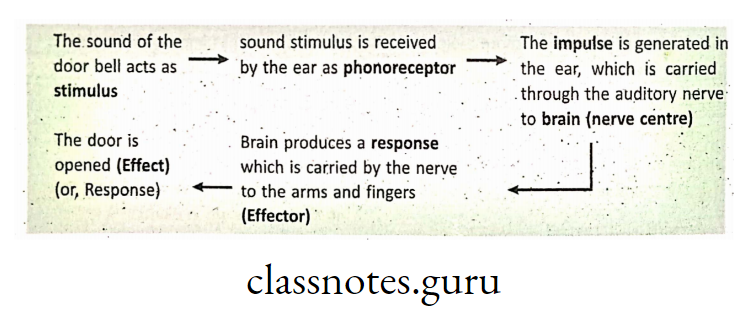
Example 2: Playing the cricket ball by a batsman.
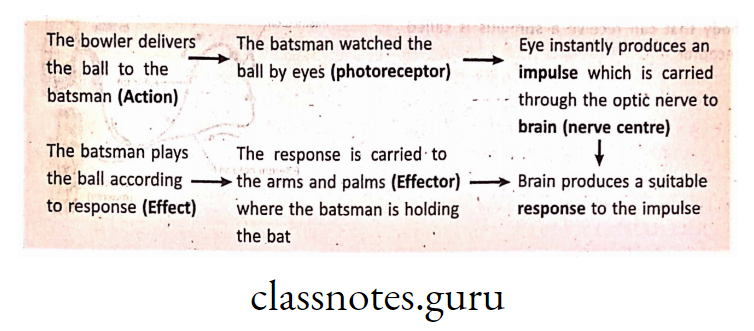
Example 3: A student writing the answer in examination hall.

Difference between mode of action of hormone and nervous system :
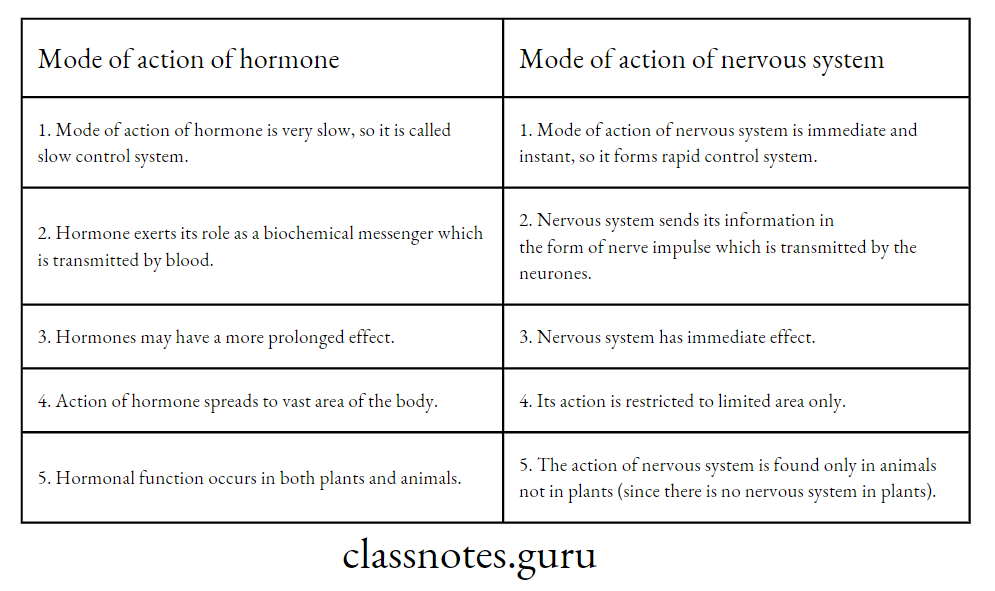
Components of Nervous system :
Neuron, Neuroglia and Nerves :
The nervous system consists of brain, spinal cord and nerves. All these structures are,made up of neurones and neuroglia.
Structure and Function of different parts of Neuron :
Neuron is the structural and functional unit of nervous system.
Each neuron is. made up of cell body and the processes (dendrites and axon).
Difference between Axon and Dendron :
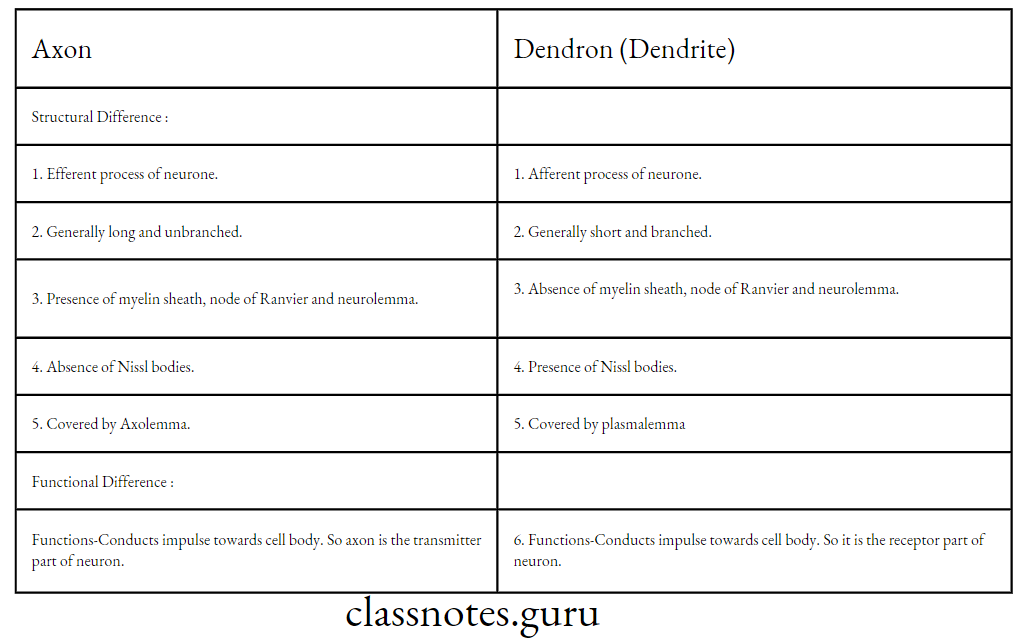
Difference between Medullated or Myelinated and Non-medullated myelinated nerve fibres :
Class 10 Science: Control and Co-ordination Key Concepts
Neuroglia :
Definition: The fibrous and cellular, non-nervous supporting elements of the nervous system are called neuroglia.

The number of neuroglia cells are much more then the neurones. About ten percent of the total cells in the nervous system are neurones and remaining ( about 90 percent) are neuroglia
Examples: Neuroglia are mainly of three types- oligodendroglia, astrocytes, and microglia.
Functions :
Types of Neurone : Sensory, Motor, Adjustor/lriterneurone.,
Sensory (Afferent) Neurone—The neurone that transmits the sensory nerve impulse from receptor to CNS (Central Nervous System) is called sensory or Afferent neurone.
Motor (Efferent) Neurone—The neurone that carries the motor response (impulse) from CNS (Central Nervous System) to the effector organs is called Motor or Efferent neurone.
Adjustor/lnternuncial neurone (Interneurone)—A nerve cell found entirely within the central nervous system, that acts as a link in between sensory neurone and motor neurone is known as adjustor neurone or internuncial neuone.

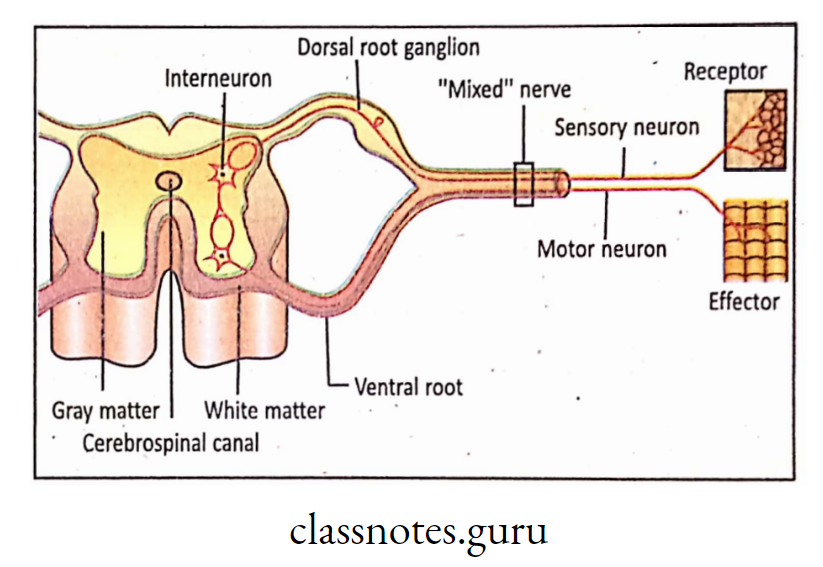
Mixed nerve—The nerve which has both afferent and efferent fibres is called mixed nerve, e.g. Spinal nerves.
‘Interrelationship between Neurones, Nerve fibres and Nerve:
A thread like process of a neurone,especially the prolonged axon that conducts nerve impulse is called nerve fibre.
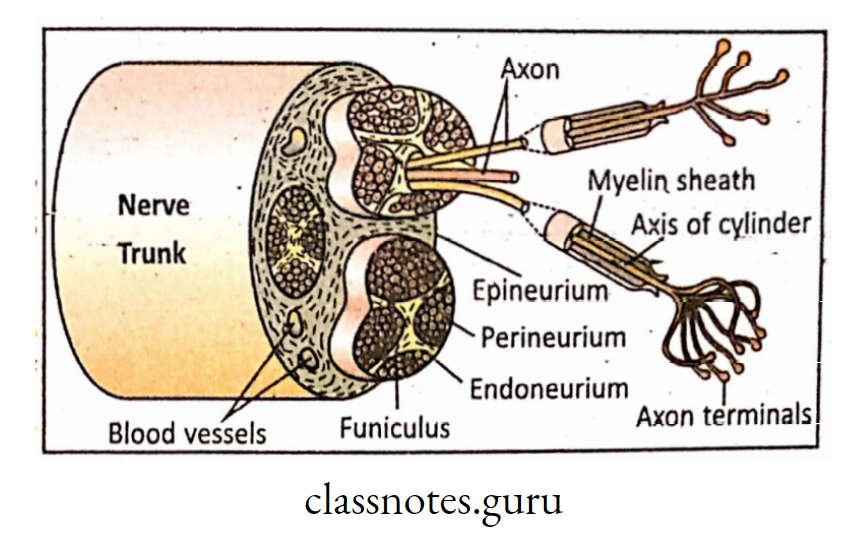
Definition: The bundle of nerve fibres enclosed by the membranous layers of connective tissue (endoneurium, perineurium and epineurium) is called nerve.
The connective tissue layer surrounding the individual nerve fibre (generally to the axon) is called endoneurium. Bunch of nerve fibres or axons are bounded together to form a bundle which is covered by another connective tissue sheath called perineurium. Each bundle is known as funiculus.
Several such funiculus are bound together by another outermost connective tissue layer called epineurium.
Types of Nerve (According to function) :
Afferent (Sensory) nerves—Those nerves which are made up of sensory neurones and transmit nerve impulse from the receptors into the central nervous system are known as sensory nerves or afferent nerves.
Examples—Olfactory nerve (1st Cranial nerve), Optic nerve (2nd Cranial nerve), Auditory / Vestibulocochlear / Acoustic nerve (8th Cranial nerve).
Efferent (Motor) nerves—Those nerves which are made up of motor neurones and transmit impuls’e (Response) from central nervous system into the effector organs are known as motor nerves or efferent nerves.
Examples— Occulomotor nerve (3rd Cranial nerve),Trochlear nerve (4th Cranial nerve), Abducens nerve (6th Cranial nerve), Spinal acessory nerve (11th Cranial nerve); Hypoglossal nerve (12th Cranial nerve).
Mixed nerves— Those nerves which are made up pf both sensory and motor neurones are called mixed nerves. They carry the nerve Impulse from periphery (receptors) to the centre (sensory impulse) and from centre to the periphery (the muscle) or effector organs (motor impulse).
Examples—Spinal nerves, Vagus (10th cranial) nerve, etc.
Difference between Afferent and Efferent nerves :
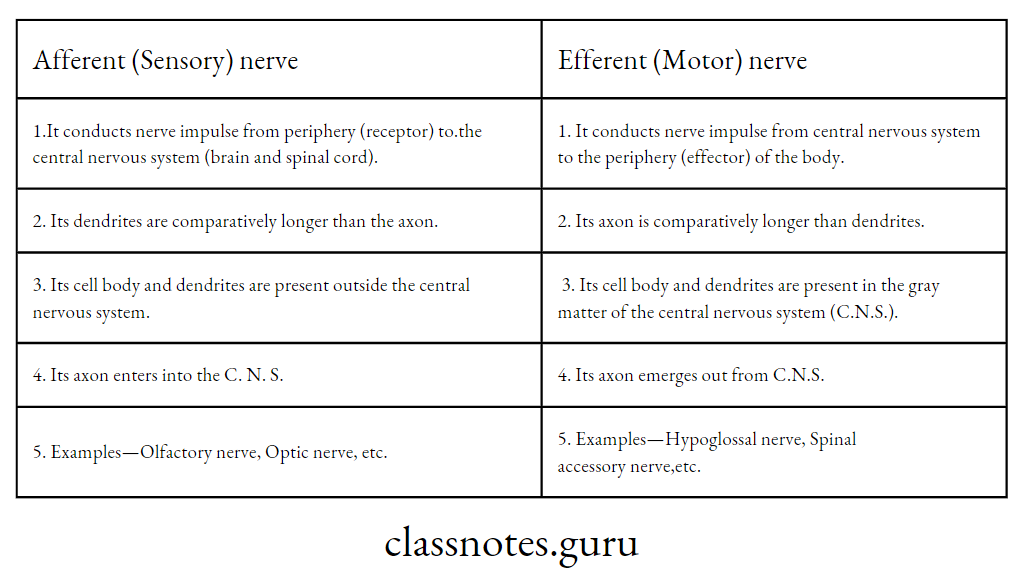
Ganglion (pi. Ganglia) :
Definition: A group or collection of nerve cell bodies ensheathed by connective tissue and located outside the central nervous system (Brain and Spinal cord) is called ganglion. So ganglia are the part of peripheral nervous system.
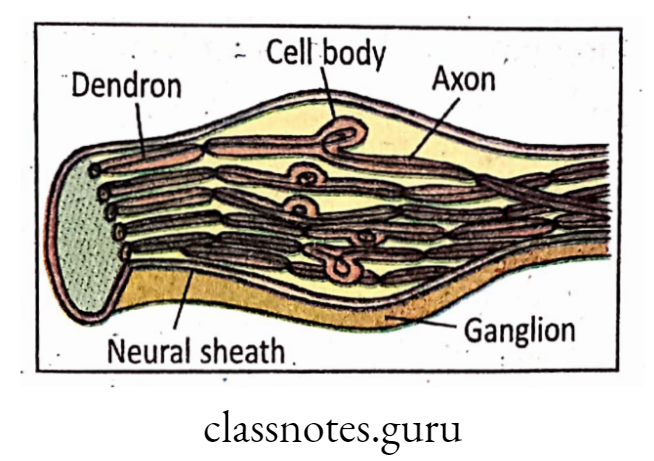
Cells found in a ganglion are called ganglion cells. Ganglia often interconnect with other ganglia to form a complex system.
Function of ganglia :
Synapse :
Definition: Synapse is the junctional gap between two consecutive.neurons where one neuron ends and another neuron begins.
Location of Synapse: Synapse is located in between two neurons. Generally, synapse is formed in between axon terminals of the previous neuron and dendrites or cyton of the following neuron.
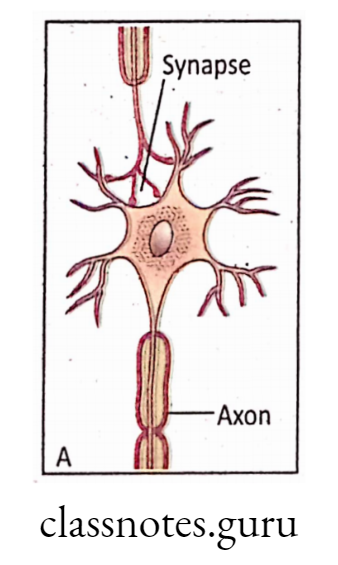
NCERT Class 10 Science Notes: Control and Co-ordination
Types of Synapse : According to formation the synapses are of
three types :
Functions of Synapse :
Synapse allows synaptic transmission of the nerve impulse to conduct in one direction (forward conduction) only i.e., from axon terminals of the previous neuron to the dendrites or cell body of the following neuron with the release of neurotransmitter.
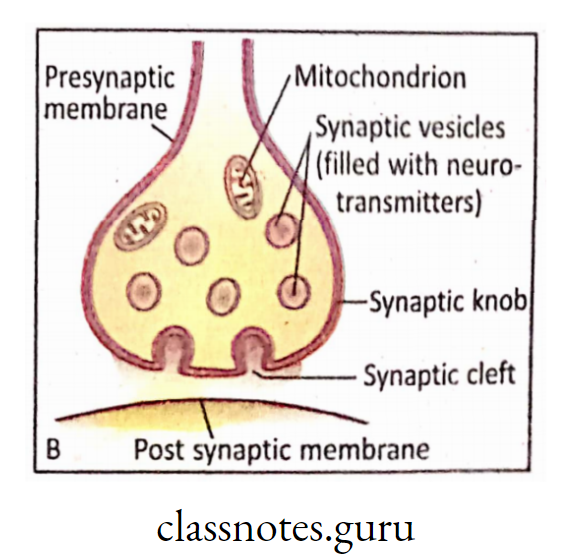
Synapse converts the nerve impulse into convergent or divergent type of impulse,
It converts a particular stimulation into excitatory or B inhibitory type of impulse,
Due to repeated stimulations, probably due to exhaustion of neurotransmitter substance in synaptic vesicle,synapse acts as a seat of fatigue in the central nervous system.
Neurotransmitter and its Role in Transmission of Nerve Impulse :
Definition: Neurotransmitter is a neurochemical substance which helps in synaptic transmission of impulse from one neuron to another neuron or to target organ.
Mode of action (Role of neurotransmitter in synaptic. transmission) :
When an impulse reaches to presynaptic knob, . there is release of neur.otransmitter from the synaptic vesicle into synaptic cleft. There are multiple steps of chemical reaction for this release of neurotransmitter.

The neurotransmitter is entrapped by specific receptor located on the post synaptic membrane where a new impulse is generated.
Types of neurotransmitter: Functionally, neurotransmitter may be excitatory (that accelerates the flow of impulse) or inhibitory (that slows down the flow of impulse) or both.
Example :
Excitatory Neurotransmitter: Glutamate, Norepinephrine and Epinephrine etc.
Inhibitory Neurotransmitter: Serotonin, GABA (Gamma Amino Butyric Acid),Giycineetc.
Both excitatory and inhibitory in function: Acetylcholine is the commonest neurotransmitter. In cardiac tissue, acetylcholine has inhibitory effect whereas in neuromuscular junction of skeletal muscle it has excitatory effect.
Similarly Dopaminealso has double effect like acetylcholine.
Types of Nervous system :
Nervous system is the system of cells, tissues and organs that regulates body’s responses to internal and external stimuli in animals. In vertebrates, it consists of brain, spinal cord,
nerves, ganglia and parts of receptor and effector organs.

Central Nervous System. (CNS) : The part of the nervous system in vertebrates,, which consists of brain and spinal cord, that controls all activities of the-body is known as central
nervous system.
Peripheral Nervous System (RNS): The part of the nervous system consisting of cranial nerve and spinal nerve which connect different parts of the body with CNS (brain and spinal cord) is called peripheral nervous system.

Cranial nerves are arising from the brain and are connected to different vital organs of the body. There are 12 pairs of cranial nerves in man (but only 10 pairs in toad). Some important cranial nerves are—
Spinal nerves arise from the spinal cord and are connected to different organs of the body. There are 31 pairs of spinal nerves in man (but only 10 pairs in toad).
Autonomic Nervous System (ANS): The nervous system which controls various autonomic activities of the body (without our will) is called autonomic nervous system.
The ANS can be of two types—Sympathetic nervous system (Thoracolumber system) and Parasympathetic nervous system (Craniosacral A system). These two systems are antagonistic in function, e.g. during running, heart beat is increased by sympathetic, system and during resting,, heart., loeat is decreased by parasympathetic system.
Generally, sympathetic system is concerned with catabolic functions of the body whereas parasympathetic system deals with anabolic functions. For example; peristalsis of alimentary canal is increased by Parasympathetic system and decreased by Sympathetic system.
Brain and Spinal cord:
The biggest portion of the central nervous system which lies at the top end of the spinal cord and within the skull (cranium) is called brain.
The pinkish grey coloured human brain is a large mass consisting of about iO10 nerve cells (neurons) and numerous neuroglia. It occupies 1500 cubic centimetre in the cavity of the skull and its shape corresponds in outline to the inner contours of the cranial cavity.,
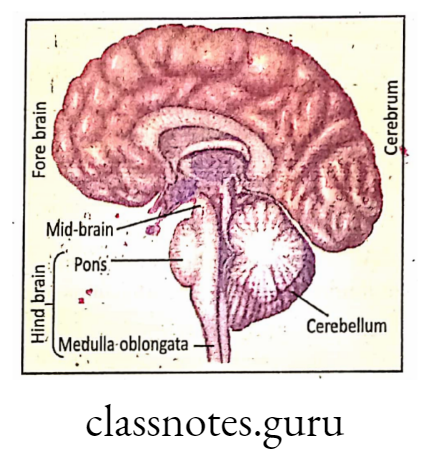
The average weight of an adult brain is about 1.36 kg. It is divided into three main parts e.g., forebrain, midbrain and hindbrain.
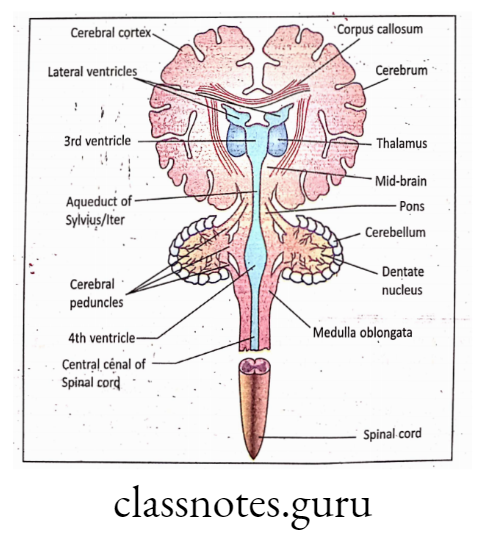
Components (different parts) of Brain :
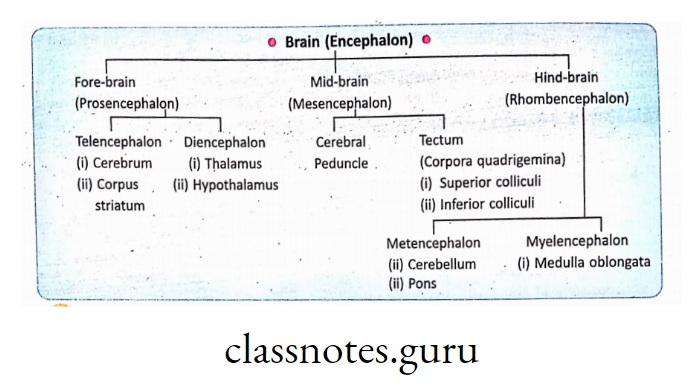
Fore-brain: The most anterior portion of the brain is called fore-brain. It consists of cerebrum, thalamus, hypothalamus, etc.
Cerebrum : (a) Location and Structure—Cerebrum Is the most superior region of CNS.
Cerebrum is the largest part of the human brain which occupies most of the portion (more than three-fourth) of the skull cavity. The total surface area of cerebrum is about 2200 sq.
cm. which is about three times more than the inner surface of the skull.
Cerebral cortex is the outer layer of cerebrum 2-3 mm thick, made up of six-layers of nerve cells. To accommodate a bigger thing in a smaller area, the cerebral cortex becomes folded upon itself producing furrows i.e., sulci (shallow grooves), fissures (deeper grooves) and convolutions, i.e., gyri (singgyrus).
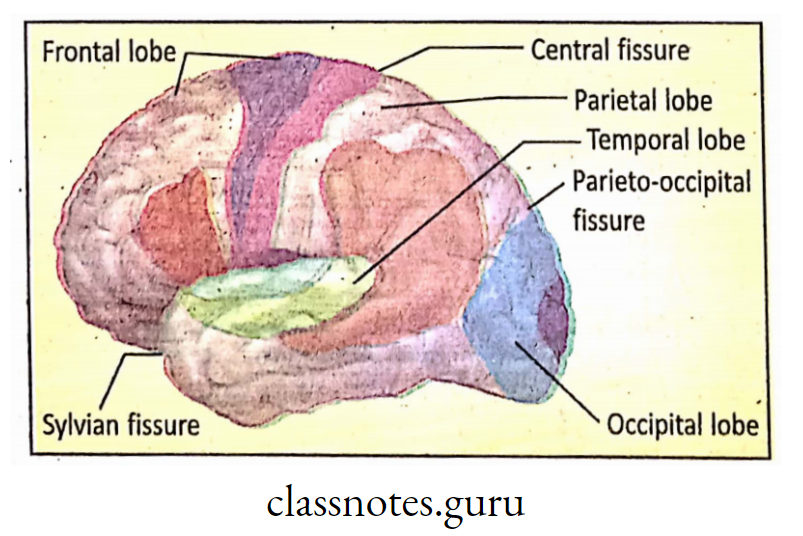
The outer part of cerebrum is made up of mainly cell bodies of neurones and branching dendrites called grey matter. Certain functional areas are found in the outer part (cortex) of the different lobes.
The inner part is mainly made up of nerve fibres (axons) called white matter (Grey matter is also written as Gray matter)
In brain, grey matter is present peripherally and white matter centrally whereas ] in spinal cord this orientation is just reverse.
Lobes of cerebrum—The cerebrum consists of two symmetrical hemispheres which are connected by a broad band of fibres called corpus callosum. Corpus callosum is exclusively found in mammalian brain.
Neocortex of cerebrum is the site of intelligence in man. Each hemisphere is divided into five lobes such as frontal lobe, parietal lobe, occipital lobe, temporal lobe and limbic lobe (area) by four main’ fissures (deep grooves).
Functions—
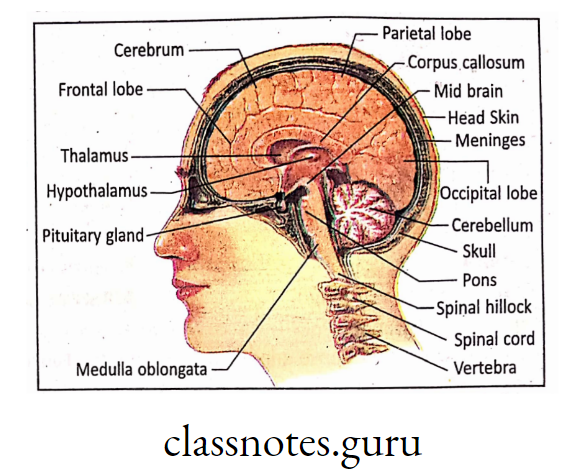
Thalamus: Location—Thalamus is the mass of grey matter (large collection of cell bodies) which is present at the base of the fore-brain and lateral to both side of the third ventricle (brain cavity).
Functions—
Hypothalamus: Location—The hypothalamus is the basal part of the fore-brain and forms the floor of third ventricle. It consists of groups of nuclei and fibres.
Functions—
Mid-brain: Location—Mid-brain is the uppermost portion of the brain stem and connects the fore-brain with hind-brain. The part of mammalian brain consisting of. midbrain, Pons and Medulla oblongata is together called as brain stem.
It has two parts i.e., tectum and cerebral peduncle. Functions-Mid-brain serves as a centre for mediating visual, auditory and tactile (touch) impulses. Grossly brain stem means whole of the brain except cerebrum and cerebellum. All cranial nerves develop from brain stem.
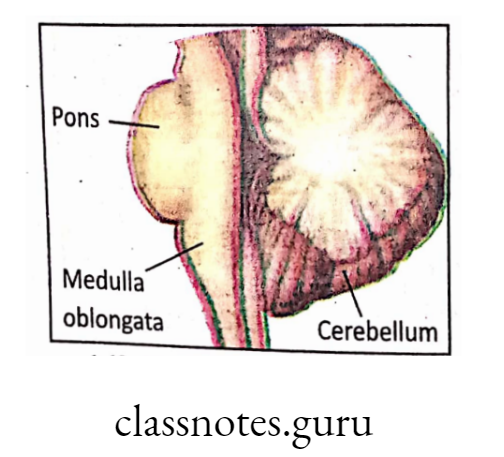
Hind-brain: The hind-brain is the lowermost part of the brain. It consists of mainly cerebellum, pons and medulla oblongata.
Cerebellum :
Location and Structure
Cerebellum is the largest part of the hind-brain which is situated behind the pons and medulla oblongata and under occipital lobe of the cerebrum. It consists of two hemispheres which are connected by a median portion caHed vermis. Each hemisphere contains many fissures
Functions—
Difference between Cerebrum and Cerebellum :

Control and Co-ordination in Living Organisms: Nervous System and Hormones
Pons: Location—Pons is the convex white eminence of -the hind-brain. It is situated below mid-brain and above the medulla oblongata. Functions—Pons contains respiratory,cardiac and vasomotor centres. They regulate respiration, heart rate and blood pressure respectively.
Medulla obiongata: Location—Medulla oblongata is the conical expanded last part of the brain stem (hind-brain), which lies just above 4he-spinal cord.
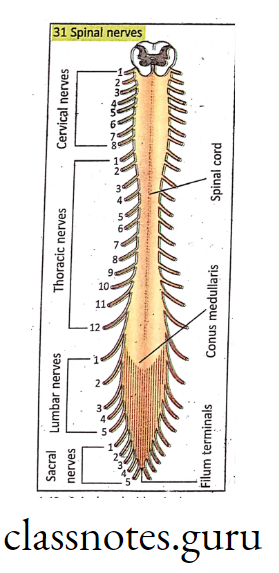
Functions—
Components and Functions of Spinal cord :
The cylindrical part of the central nervous system which is present within the vertebral canal and extends from the foramen magnum upto the first or second lumbar vertebra is called spinal cord.
Foramen Magnum is the opening present at the base of the skull through which spinal cord joins with the brain.
External structure: The spinal cord is about 45 cm long and 1.25 cm wide, cylindrical in shape. It rapidly narrows below the lumbar enlargement into cone shaped structure called conus rnedullaris.
From conus rnedullaris thread like non nervous filaments called filum terminals pass downwards.
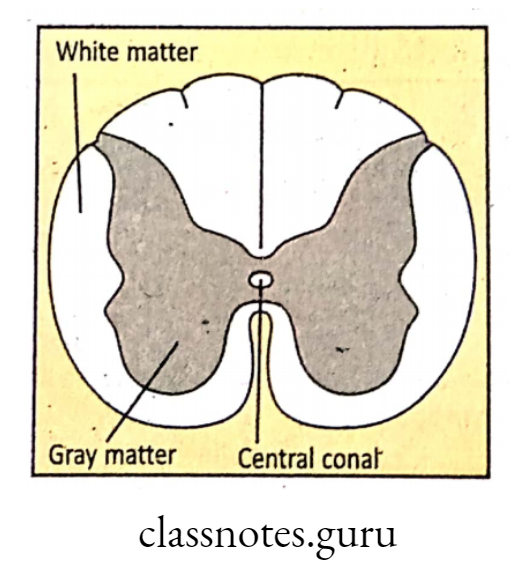
Conus rnedullaris and filum terminale together look like horse tail known as Cauda equina. Although the spinal cord is a continuous structure yet functionally it is divisible into 31 segments.
It consists of 8 cervical, 12 thoracic, 5 lumbar, 5 sacral and 1 coccygeal segments. From these 31 segments 31 pairs of spinal nerves originate.
Internal structure: Internally the spinal cord consists of centrally H -shaped grey matter and peripherally white matter. A tubular space filled up with CSF running through the centre of the grey matter of the spinal cord is called central canal.
Neurocoel central canal of spinal cord as well as ventricles of brain whereas spinocoel means the space inside spinal cord only.
Functions of Spinal cord :
Location and function of Meninges and CSF:
Central Nervous System (CNS) is symmetrically divisible into two lateral halves, ft consists of brain and spinal cord.
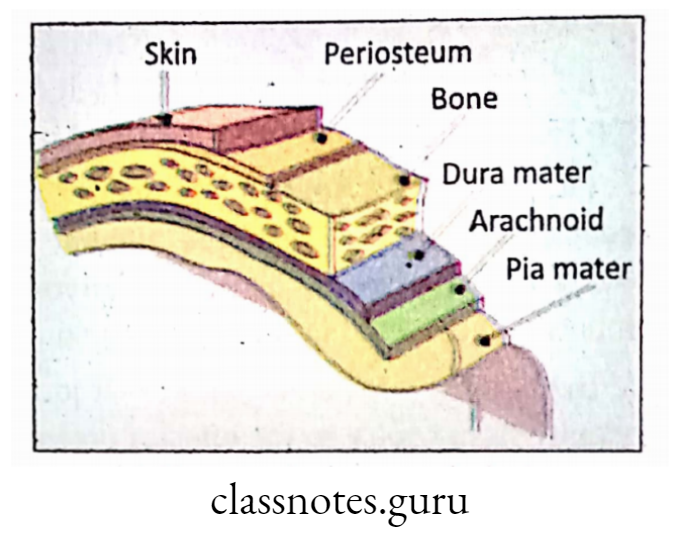
Meninges: The whole of the CNS (Brain and Spinal cord) is covered by soft, protective membranes called.’meninges. It* consists’ of three layers—outer Dura mater, middle Arachnoid and inner Pia mater
Function :
Cerebrospinal Fluid (CSF): It is clear, colourless, transparent tissue fluid present in the ventricle of brain and central canal of spinal cord. CSF is formed in the choroid plexus of the brain.
Function :
Class 10 Science: Control and Co-ordination Notes
Reflex action with common examples :
Definition: Reflex action is spontaneous involuntary (autonomous) motor response due to sensory stimulus.

Common examples of reflex action:
Reflex arc and its components :
Definition: An arc like neural path through which reflex action takes place is called reflex arc. It consists of receptor, afferent nerve, centre (adjustor), efferent nerve and effector.
Components of reflex arc.: Reflex arc consists of five parts.
Receptor—It is a specialized sensory ending which is stimulated by the environmental changes.
Afferent or Sensory neurone—It forms afferent limbs of the reflex path. It conducts impulse from the receptor to the nerve centre.
Nerve Centre—The grey matter of the central nervous system, spinal cord or brain stem acts as centre. Here the afferent neurone makes synaptic connection with efferent neurone either directly or through internuncial neurones.
In the nerve centre, the sensory impulse is converted into the motor impulse (response).
Efferent or Motor neurone—It forms the efferent limbs of reflex path. It carries nerve impulse from centre to the effector organs.
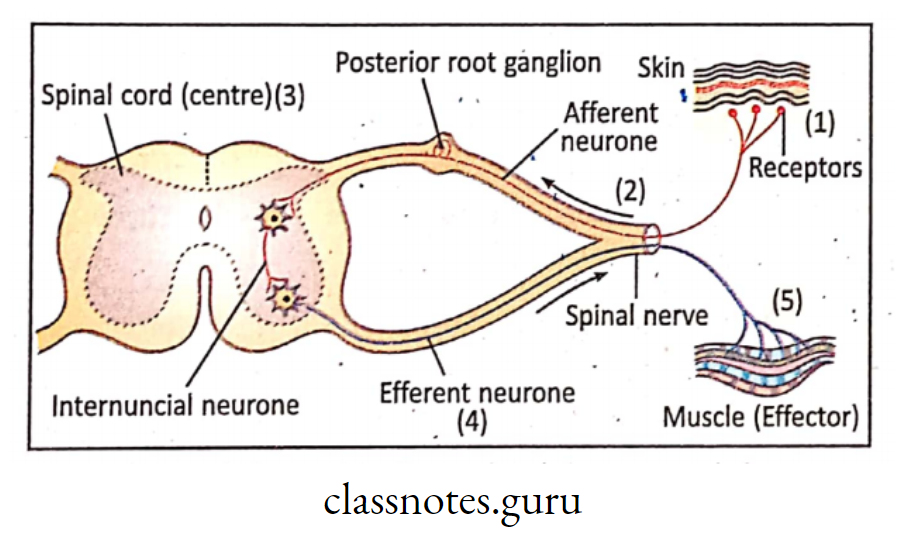
Effector organ or Effector—The muscle or gland where the motor neurone ends is called effector (muscles or glands).
It works according to the response (directives) of nerve centre, carried by efferent neurone.
Types of Reflexes : Two types—Unconditioned (Inborn) reflexes and Conditioned (Acquired) reflexes.
Unconditioned or Inborn reflexes :
Definition: The reflexes which are not acquired but present since the time of birth are called unconditioned reflexes.
Examples: Removal of fingertip from hot object; Knee jerk reflex; Closure of eyelid in bright light etc.
Conditioned or Acquired reflexes :
Definition: The reflexes acquired as a result of prolonged or repeated training or practice are called conditioned reflexes.
These reflexes are learned reflexes, because they arise during lifetime by careful and patient practices.
Examples :
Reading, writing, cycling,swimming, playing a musical instrument etc
The Russian physiologist Ivan Pavlov is well known for his experiment on conditioned reflexes.

Pavlov’s Experiment :
Pavlov used to give some food to a dog.Usually the dog salivated on eating the food. He used to sound a bell (training) that had nothing to do with salivation. But continued association of the sound of bell with the food caused salivation not only in response to food but also to the sound of bell.
So later on,when only the bell rang, without giving food, the dog salivated. This shows that the reflex of salivation to the sound was acquired by the dog as a result of repeated training or practice for a long time at a stretch.
Difference between Conditioned and Unconditioned reflexes :
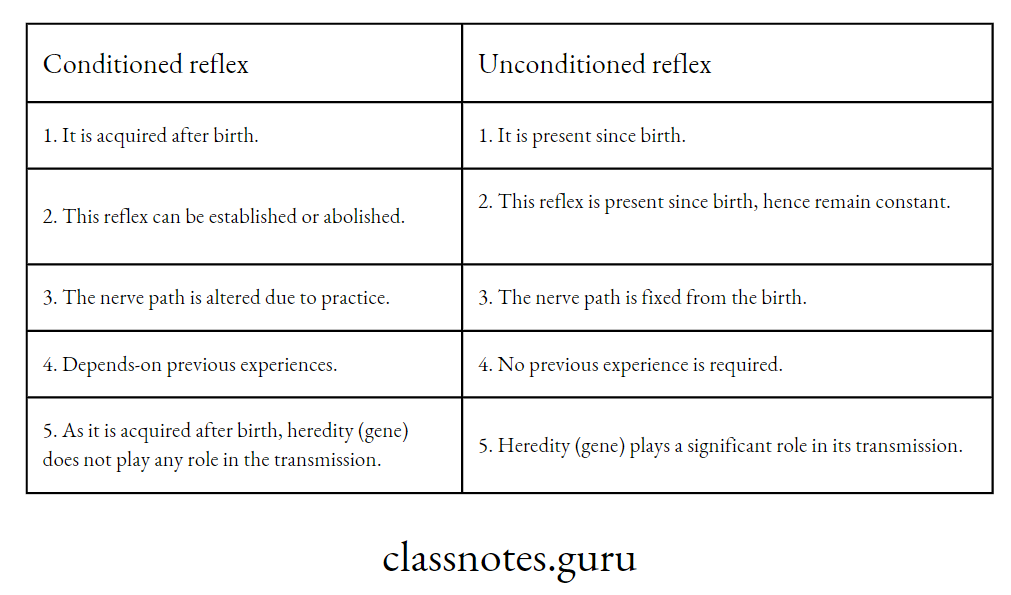
Importance of different reflexes in everyday life :
Blinking of eye: Eyelids are folds of skin, controlled by speedy movement of muscles. It can move very fast and does not disrupt our vision. This is called blinking of eye. Blinking keeps our eye moist.
The fluid is secreted from tear gland (Lacrymal gland). During blinking, the fluid spreads all over the eye. An enzyme, called lysozyme, is present in the tear that can kill bacteria.
Blinking also protects eyes against dust, dirt, sand etc. In fact, eyelash works like feather duster to protect eyeball against tiny particles.
Coughing: A sudden explosive forcing of air through glottis due to mechanical or chemical irritation of the trachea or bronchi is “called coughing. The- epithetttrrrr ofrespiratory tract is highly sensitive to both mechanical and chemical stimuli.
So little amount of dust or other foreign matter or secretion of excess mucus from inner wall of respiratory tract may cause irritation to initiate cough reflex.
Cough reflex removes foreign material and excess mucus from the respiratory tract and thus protects the lungs.
Cough reflex is constituted by :
Sneezing: Due to irritation of mucus membrahe of nose, there may be sudden expulsion of blast of air through the nose and mouth by involuntary vigorous contraction of expiratory muscles known as sneezing.
Sneezing may occur due to sudden change intemperature, breeze ofcold air, viral infection and so on. The function of sneezing is tcÿexpel mucus (containing foreign particles orirritants) and thus to cleanse the nasal cavity.
Eye as a sense organ in human:
The environment, in which we live, influences our life. It is therefore essential for our bodies to sense any change in the environment in order to adjust with these changes.
By performing such changes and by communicating them to the central nervous system, the sense organs help to make a correct interpretation of the environment, so that the body make necessary adjustments.
The structures which are capable of detecting the presence of some specific type of agent in the environment and reacting to this agent by sending impulses through their afferent . nerves to the central nervous system are called sense organs.
The sense organs of man are of five types such as eye, ear, tongue, nose and skin. Out of these skin belongs to general sense organ where as eye, ear, tongue and nose belong to ‘special sense organs.
They are also known as skin (Tangoreceptor), Eye (Photoreceptor), Ear (Phonoreceptor), Tongue (Gustatoreceptor), Nose (Olfactoreceptor).
EYE—The organ of vision :
Control and Co-ordination in Living Organisms: Class 10 Science Notes
Structure and Functions of eye :
Each eyeball is nearly spherical fluid filled ball and is approximately 2-5 cm in diameter. It consists-of the coats of the eye-ball, the refractory media and protective part of the eye-ball.
Function of eye :
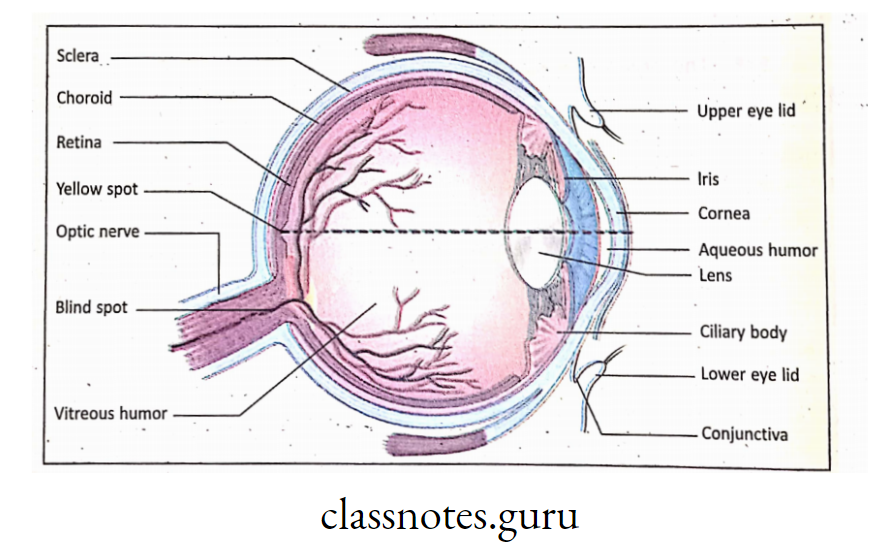
Chart showing the main parts of Eye :
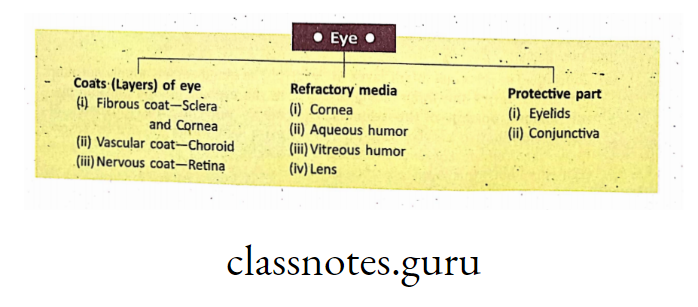
Difference between Retina and Cornea :
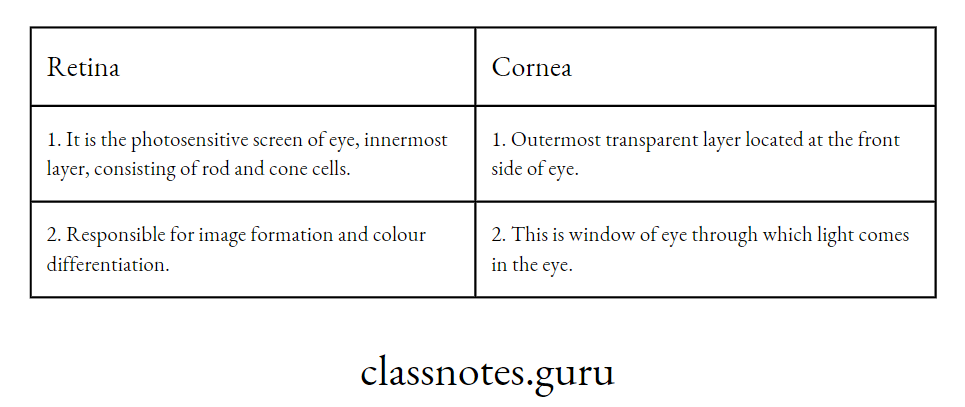
Difference between Rod cell and Cone cell :

Difference between Blind spot and Yellow spot :

Binocular vision in human and how it differs from monocular vision :
Definition: The phenomenon of seeing one object with two eyes is known as binocular vision So, it is vision using two eyes with overlapping fields of view, and good perception of depth.”
Binocular vision is found in dogs, cats, apes, humans, etc.
Advantages of binocular vision :
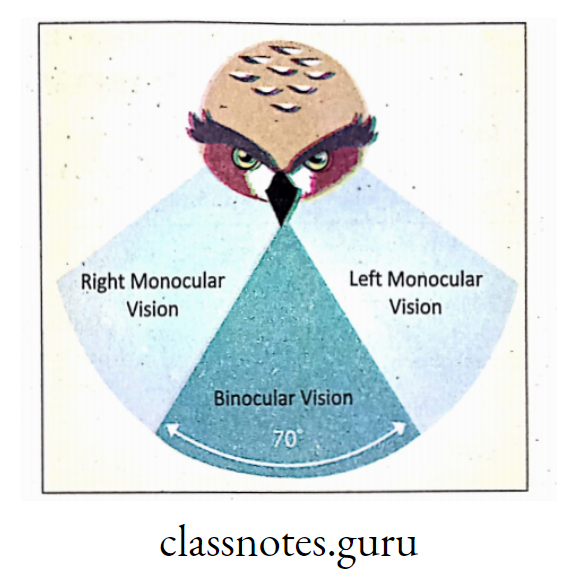
Monocular vision :
Definition: The vision in which the two eyes are used separately on two different field of vision simultaneously is called monocular vision.
Most fishes, most birds, lizards, horses,bats, rabbits have monocular vision. Here,the advantage is wide field of vision, which enables them to respond quickly to danger or other stimulus. But they have poor depth of perception.
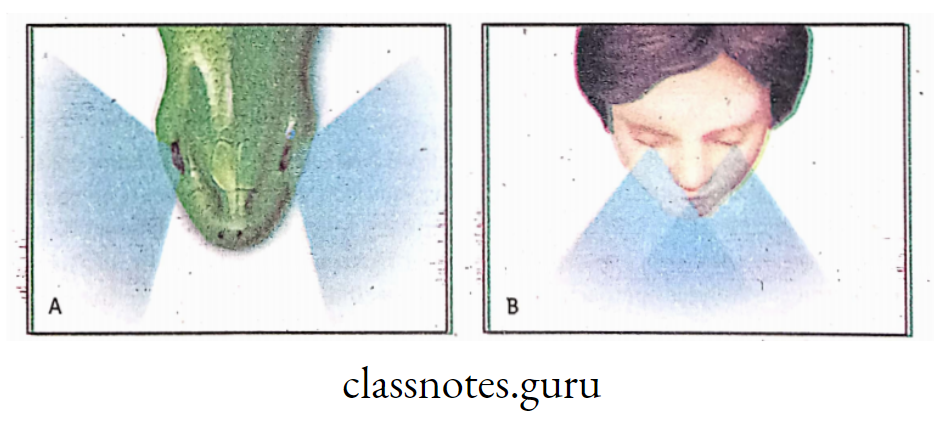
Difference between binocular and monocular vision :

Class 10 Science Chapter: Control and Co-ordination Review
Accommodation
Definition: Accommodation is the adjustment of eye for seeing objects at various distances. This is accomplished mainly by ciliary muscle which controls the focal adjustment of lens of the eye.
Thus the lens is flattened or. thickened for distant or near vision. So, accommodation is the ability of eye lens to adjust its focal length.
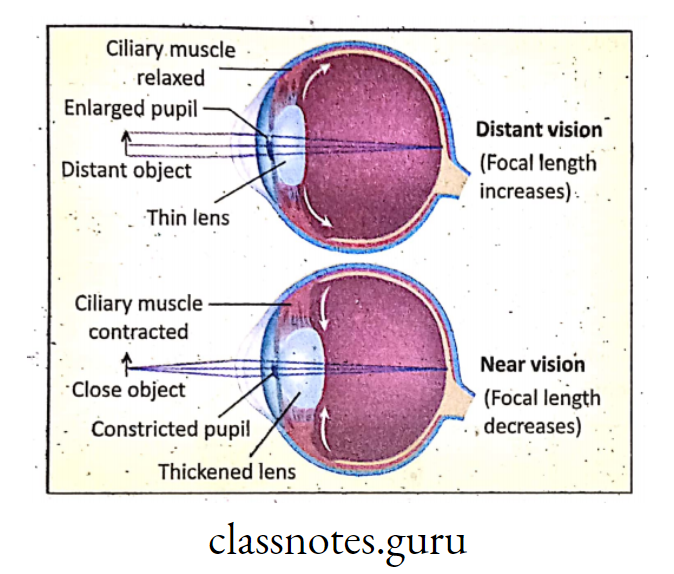
Role of accommodation in our daily life situation :
Example 1: A pedestrian is walking on the road. He looks at his wrist watch, then the road (any potholes), level of the road,then looking passersby, looking at top’ floor of a multistoried
.building, immediately after the far distant sky .and so on.
Thus there is frequent change of focal lengtJi of the eye, achieved by accommodation.
Example 2 : . A driver is moving with a car or any vehicle. He watches bumper (speed breaker), road directions, pedestrians, other passing vehicles etc. The driver must be very alert to notice all these by his eyes with continuous adjustment of focal length at different distances (accommodation of eye).
Suppose, he notices a red signal at about 50 metre distance and slows down the car. As he is approaching slowly towards the signal, the distance between the signal and car gradually decreases. Hence there is rapid accommodation of eye with variable focal length.
The eye adjusts the shape of lens to keep objects in focus :
Looking at distant objects (Distant vision) : (eg. Looking at a ship in deep sea, an . aeroplane high in sky etc.). The following events take place
Ciliary muscles are relaxed——–> lens becomes thin——-> Focal length of the lens increases——–> object at distant point is focussed and seen.
Lookin& at objects closer to eye (Near vision) : (eg. Reading a book, looking.at computer screen, watching time in wrist watch etc.) The following events occur
Ciliary muscles contract —————> Increase in curvature of eye lens ——————> Lens becomes thick—————-> Focal length of lens decreases————–> object at near place is focussed and seen clearly
Defects Of Vision And Corrective Measures :
Loss of Power of Accommodation—Myopia, Hyperopia and Presbyopia:
Myopia(Near sjghtedness/short sightgdpess) :
The Defect—In myopia, a person can see near objects clearly but fails to see distant objects. So they have normal near sightedness like reading books] computer use etc. But they have difficulty to see distant objects, signs etc.
The problem occurs when the eyeball becomes too long so that light rays focus at a point in front of the retina but not directly on the surface of retina.
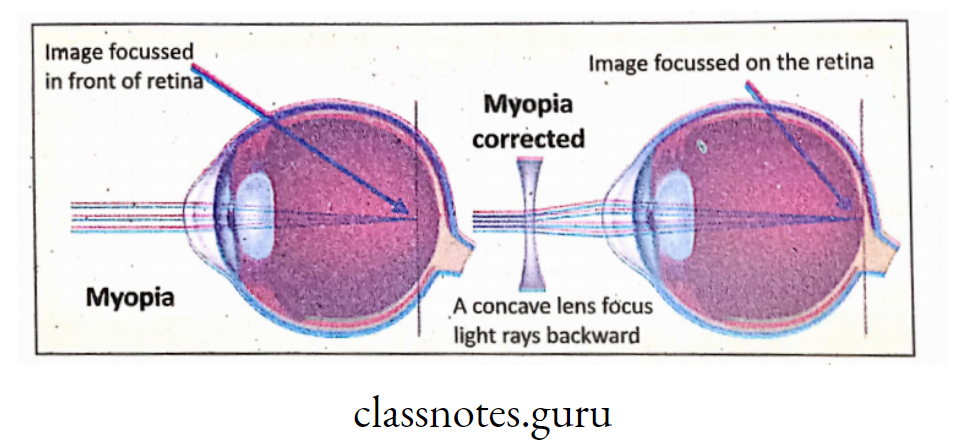
Corrective measure—The defect of myopia can be corrected by using biconcave lens in spectacle or contact lens [commonly known as minus (-) power]
Hyperopia (Hypermetropia / Farsightedness / Longsightedness) :
The Defect—ln hyperopia, the person can see distant objects very well but unable to see near objects clearly. They can not read books well neither can read computer screen correctly.
The problem occurs when the eyeball becomes shorter than normal. The light rays coming from distant object focus normally on retina but the light rays from near objects is focussed behind the retina forming a hazy (blurred image)..
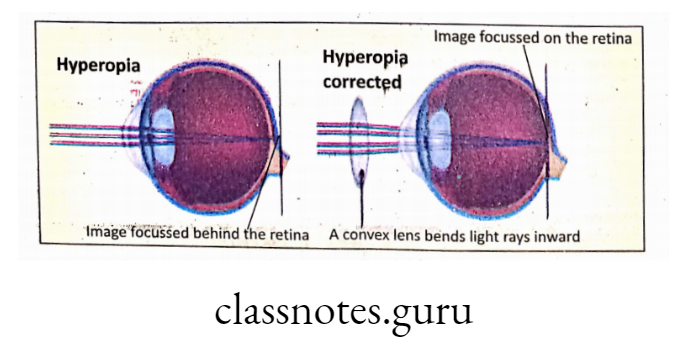
Corrective measure— The defect can be corrected by using biconvex lens in spectacle or contact lens [ commonly known as . plus (+) power].
Presbyopia :
The Defect— This is a defect of eye associated with aging (generally 40 years +) where a person fails to see details of nearby objects. The defect is primarily due to loss of elasticity of crystalline lens because of weak power of ciliary muscle as well as gradual thickening of lens.
This defect results into eye strain for reading books, computer study or to focus on near objects due to lack of proper accommo-dation of eye.
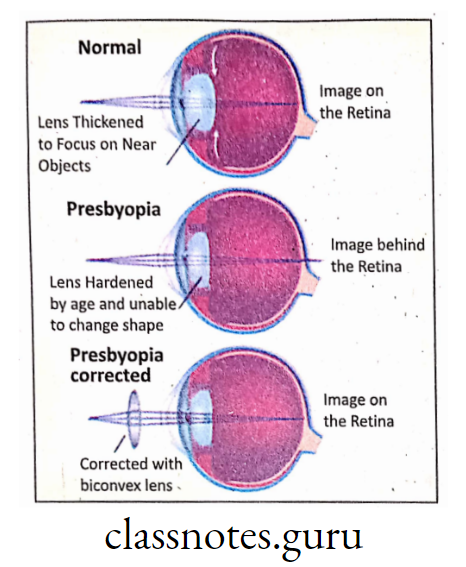
Corrective measure—Presbyopia can be corrected by using biconvex lens in spectacle.
Cataract :
The Defect— A cataract is clouding (opacity) of eye’s natural lens. This is the most common cause of loss of vision in people of age above 40 years. The lens is mostly made of water and protein. With advancement of age,some of the proteins may clump together making the lens opaque.
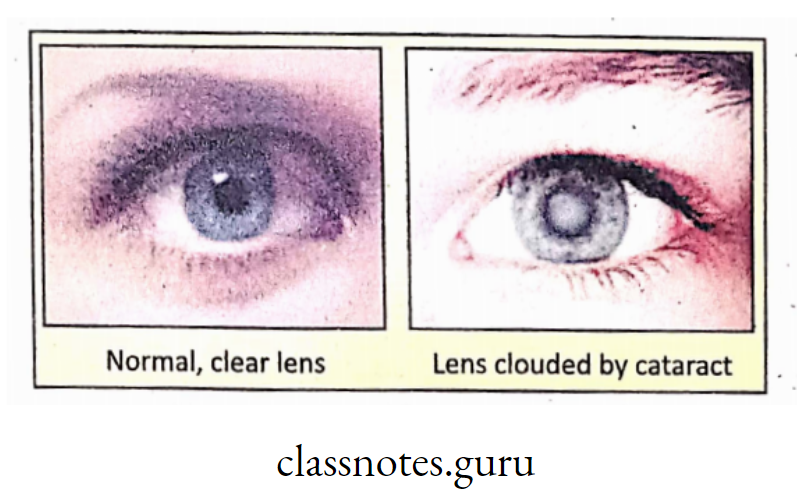
The common causes of cataract is aging, diabetes, obesity, smoking,consumption of alcohol etc.
Corrective measure—Cataract can be corrected by replacing the defective lens with an artificial lens (plastic intraocular lens—IOL). However, the modern cataract surgery is phacoemulsification or.in short Rbaco.
Locomotion :
The process by which the living organisms (mostly animals) can change the whole body from one place to other due to voluntary movement of their locomotory organs is known as locomotion.
The sensitivity of larger animals is evident in some common situations e.g. when they hunt for food, escape under attack, for breeding or reproduction at a particular season, in search of food and shelter and so on.
Animal responses are. usually quick movements which involve muscles, bones and joints.
For locomotion, movement of the locomotory organs is required. If we move our leg,we can locomote from one place to another. This is the relation between
locomotion.
Difference between movement and locomotion :
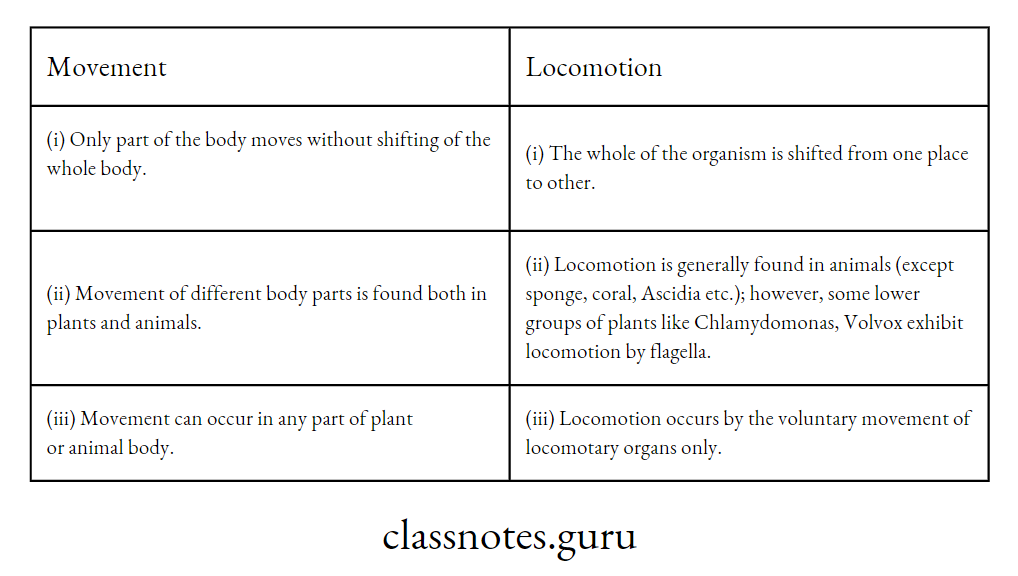
Motivation behind locomotion (Purpose of locomotion) :
The purpose of locomotion are many. There is a need of locomotion in order to maintain different functions df the animals. These purposes are stated below ;
To acquire food—Animals are not able to prepare their
search of food they have to move from one place to another. Also for drinking water the terrestrial aninrtdis are moving to water bodies.
Shelter—In order to live a normal life and to perform all the living functions properly,a suitable shelter is necessary for all animals. Thus, animals have to move from one place to another.
Avoiding capture by predators –Animals have undergo locomotion in order to protect Themslves from danger . Let suppose, atiger is chasing to a deer. The tiger is running after the deer in search of food whereas the deer is running away for protection—and thus to avoid capture”by predator (tiger)
Despersal —By locomotion, animals may be dispersed from a particular spot to different places. For example, the honey bees are dispersing from bee hive to various directions in search of nectar and pollen grain.
Search of new and favourable habitat/environment—Animals may locomote from one place to another place in search of new, favourable habitat. For example, some Siberian birds migrating from colder climate to less colder climate in winter.
This migration of birds is a good example of locomotion for favourable habitat.
Bringing together individuals for reproductive activity—Another significant necessity of locomotion is to perform reproductive activity. For example, Hilsa fish swims from saline water of sea to fresh water of river in order to lay eggs, fertilization by sperm and thus to perform reproduction.
Class 10 Science: Control and Co-ordination Key Concepts
Different types of animal locomotion :
Various methods of animal locomotion may be discussed as follows :
Amoeboid locomotion involving pseudopodia—Amoeba shows amoeboid locomotion with its locomotory organ pseudo-podia or false foot. Pseudopedia are finger-like temporary projections on any part of the surface of body.

In the amoeba, there is denser peripheral plasmagel or ectoplasm whereas in the inner part of the body. there is less denser central plasmasol or endoplasm.
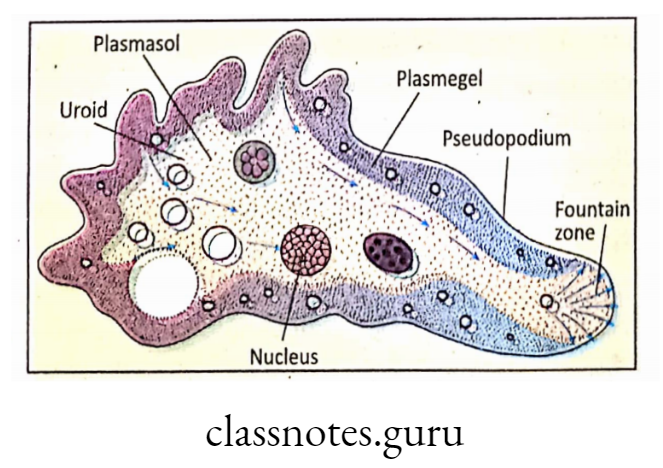
Plasmagel (gel) is denser (due to presence of more proteins) than plasmasol (sol). During formation of pseudopodia, plasmagel is converted to plasmasol and moves forward to form pseudopodia. This is known as sol-gel transformation.
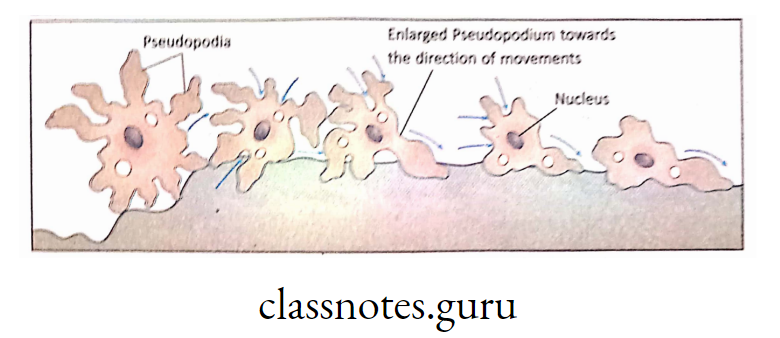
WBC also exhibits; amoeboid movement by pseudopodia formation.
Ciliary locomotion in Paramoecium — Pararnoecium is unicellular aquatic protozoa, which is provided v/ith fine hair-like protoplasmic processes called cilia. The cilia is attached v/ith basal granule in the body.
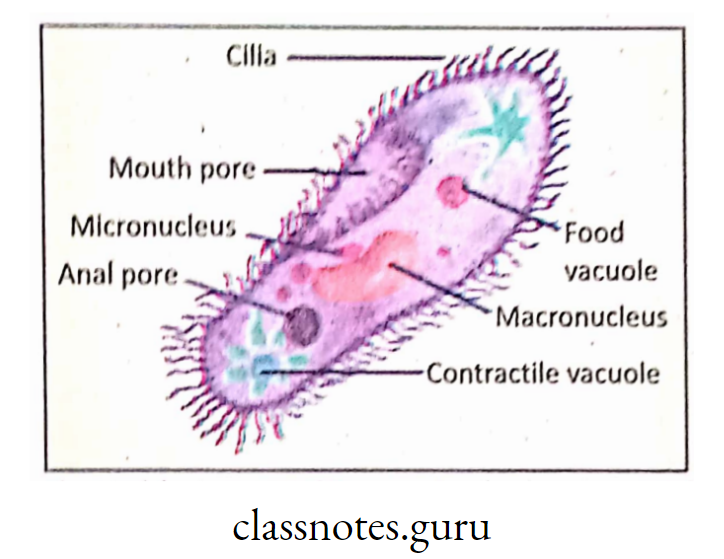
Paramoecium moves v/ith the synchronous beating of cilia.

Flagellar locomotion in Euglena- Euglena is unicellular aquatic protista. The body is green in colour due to presence of chloroplast. Euglena contains one pair of fiageiln—one long and another short.
Fhgoila is whip-like structure connected with the body by basal granule. Euglena can swim from one place to other with beating of flagella.

Swimming in fish—
Muscles of fish: V-shaped muscles of fish called myotome muscles are arranged segmentally in each side of the flexible vertebral column. Contraction and relaxation of the myotome muscles on each side causes lateral undulation and propulsion of the body.
When the muscles of left side contract, those of right side will relax, and the body will bend on the left side. When muscles contract in the opposite side, the body bends towards the right side and lashing of tail takes place
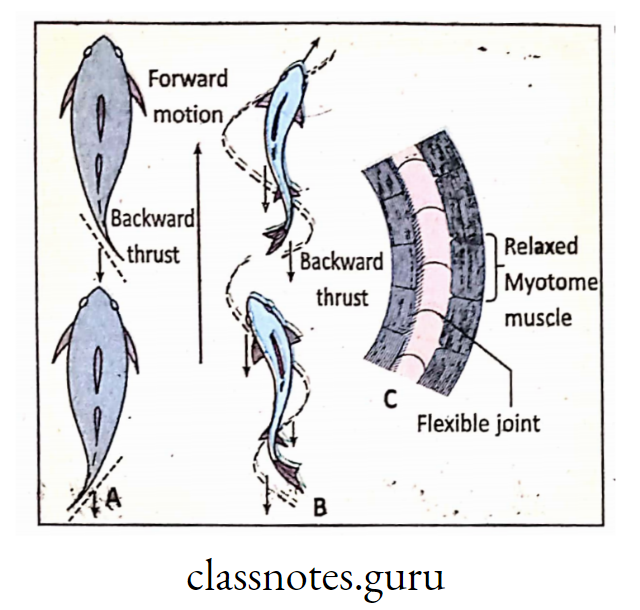
Fins of fish: fins are the appendages on the body of fishes. The fins are membranous extension of the skin and are supported by fin rays. There are altogether seven fins present in each fish. Two are paired and three are unpaired fins.
The paired fins are—
The unpaired fins are—

Functions—Fins help to maintain stability and direction of movements of the fish.
Flight in bird (e.g. Pigeon)—Three important organs are necessary for flight in birds— wings, feathers and flight muscles.
Wings—Forelimbs of birds are modified into wings. wings are complex structures consisting of bones, muscles, nerve, blood vessels and feathers. ,
Function—During flight the wings are expanded and flapped by the action of flight muscles. In resting condition, the wings are folded on the body.
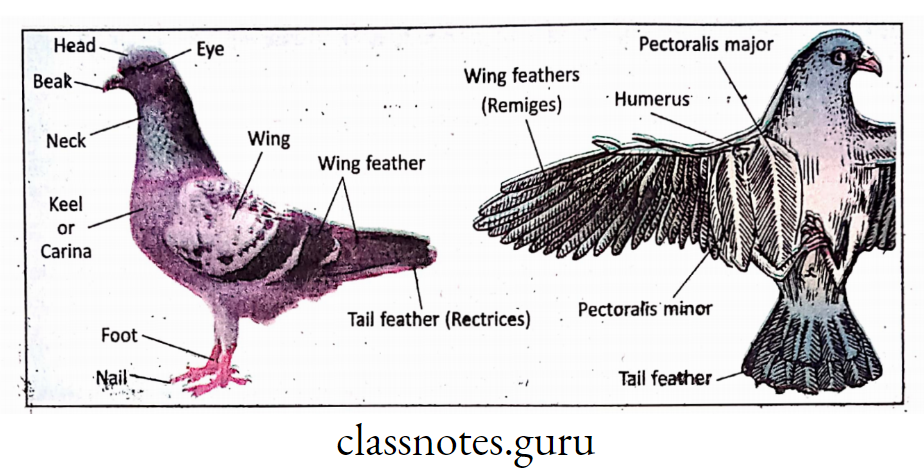
Feathers—They are leaf structures consisting of vane, barb and barbules. Feathers on bird are of different shape and size. The big size feathers on the wings are called Remiges and the big feathers on the ta‘i are called Rectrices.
Remiges help in flapping while rectrices help in steering during flight.
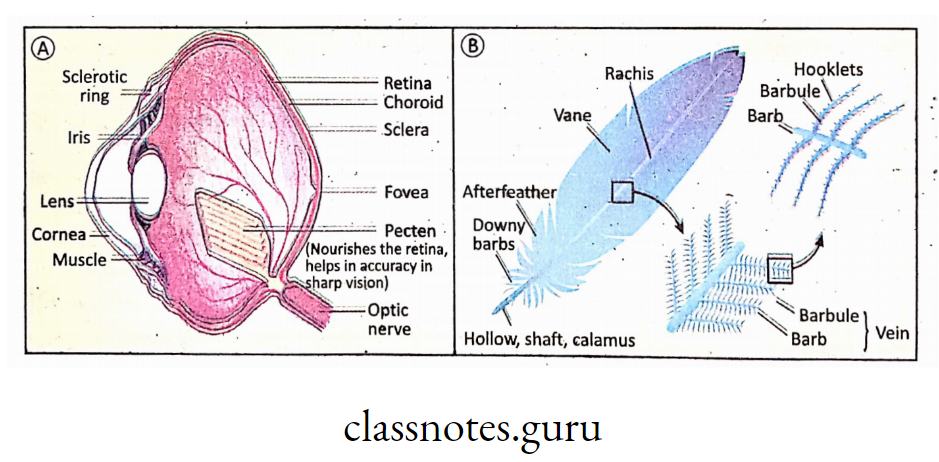
Function—
Flight muscles Some important muscles in the body of bird are very strong for flapping, the wings known as flight muscle :
You should know the running bird like Ostrich is called RATITAE and the flying bird is called CARINATAE.
Locomotion in human— Walking is the commonest form of human locomotion. The process of walking takes place with the help of two legs by the alternate contraction and
relaxation of muscles, movement of synovial (movable) joints etc. Since the locomotion in man takes place by alternate movement of two legs, hence it is called bipedal locomotion.
The process of bipedal locomotion in man is completed in three steps—propulsion,support and balance.

Mechanism of Control and Co-ordination in Plants and Animals
Stages of bipedal locomotion :
Role of movable joints and skeletal muscles In human locomotion :
Locomotion in man is accomplished by the proper functioning of three kinds of tissues as follows :
Bones: These are composed of living osteoblast cells with high concentration of calcium and other mineral salts. Bones form endoskeleton that forms the internal framework of the body with internal support. You should know there are 206 bones in man.
Joints: These are junctional points where two or more bones join. There are three principal patterns of bone joints viz.

e.g. joint between adjacent vertebrae of vertebral column.
Movable joints or Synovial joint where the joint allows free movement of bones in different direction. There is a cavity known as synovial cavity filled up with synovial fluid that acts as lubricant The whole cavity is lined by synovial membrane.

The bones are interconnected by ligament. At the tip of each bone there is a soft cartilage to prevent friction between two bones.
Important movable joints are ball and socket joint and Hinge joint.
Ball and Socket joint: This type of joint is formed when a rounded head (Ball) of one bone fits into cup shaped socket of another, e.g.
Head of humerus (upper arm) fits into glenoid cavity of pectoral girdle (shoulder girdle) commonly called as shoulder joint; head of femur (upper leg or thigh bone) fits into acetabulum cavity of pelvic girdle (Hip girdle)—commonly called as hip joint.
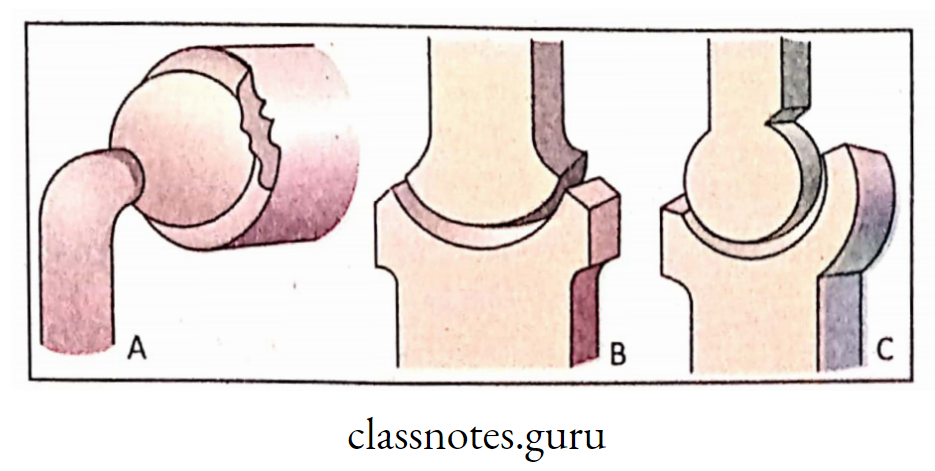
This joint allows 360’ move-ment in different axis.
Hinge joint: |n tÿjs j0jnt move like the hinge of a door in one plane only.

e.g. Elbow joint, knee joint. This joint allows 180′ movement in one axis only.
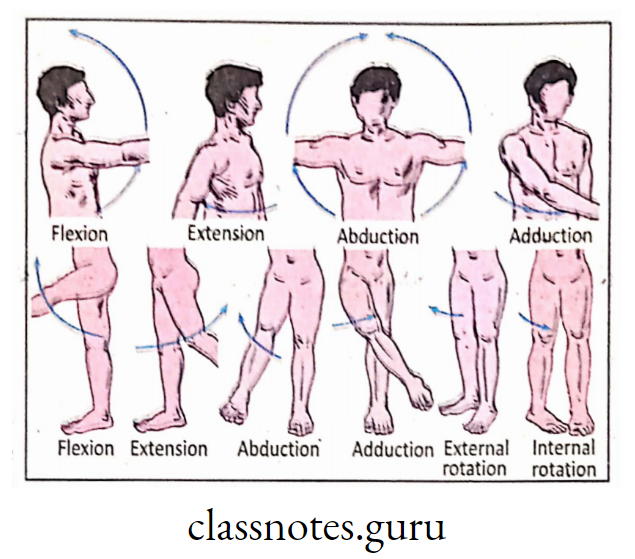
Following types of movements of joints are observed, that are operated by various skeletal muscles attached to the bonesjoints.
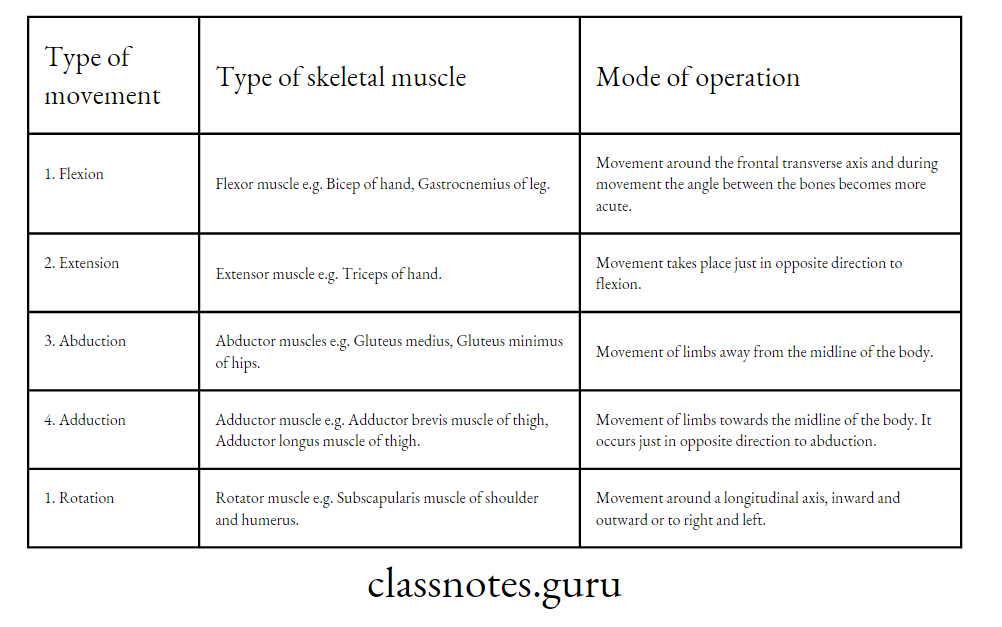
There are approximately 640 skeletal.muscles in human body.